With a population exceeding 50 million, it may be hard to conceive a small peninsula-country – one that juts into the East China and Yellow Seas - boasting some of East Asia's most breathtaking scenery. Yet it does.
More interestingly, despite a penchant for catapulting the Republic's populous headfirst into the 21st century - seen in a tidal wave of quirky-cum-cutting edge fashion, savvy technological advances and the iconic K-pop, Koreans consistently uphold traditional values, maintaining and promoting them unwaveringly, nationwide. From centuries-old Buddhist temples to charming coastal fishing villages, fertile emerald rolling hills, a mega metropolis and sub-tropical islands, the Republic of South Korea has a little of everything.
I was hard pressed to see it all in two and a half weeks, as the further I lifted the lid on the K-trove, the more treasure I uncovered. But if you're planning a shorter trip, spending two weeks in Korea will still give you ample time to explore the country's highlights.
Here's hoping this 2-week South Korea itinerary will help you gain some clarity and direction.
Disclosure: This article contains affiliate links. If you make a purchase through these links, I may earn a small commission at no extra cost to you. Thank you for supporting my blog!
Solo Travel Note on South Korea
Unlike the ongoing controversy regarding its northern neighbour, there is a sense of calm and tranquility in South Korea that’s comforting. You can often feel harassed in overcrowded metropolises and countries, particularly when you stand out as aesthetically diverse. This was not the case for me here.
Walking, eating and going about my solo-travel-business in South Korea were uneventful.
The only major challenge I faced was going to a restaurant alone, one that featured Korean Barbecue.
No-one at the hostel was able to go and I didn't want to forego the opportunity to have the experience (one customarily shared with others). I received a few odd looks and felt a slight twinge of discomfort as I entered. However, staff were courteous and made me feel at ease once I was settled in and had ordered.
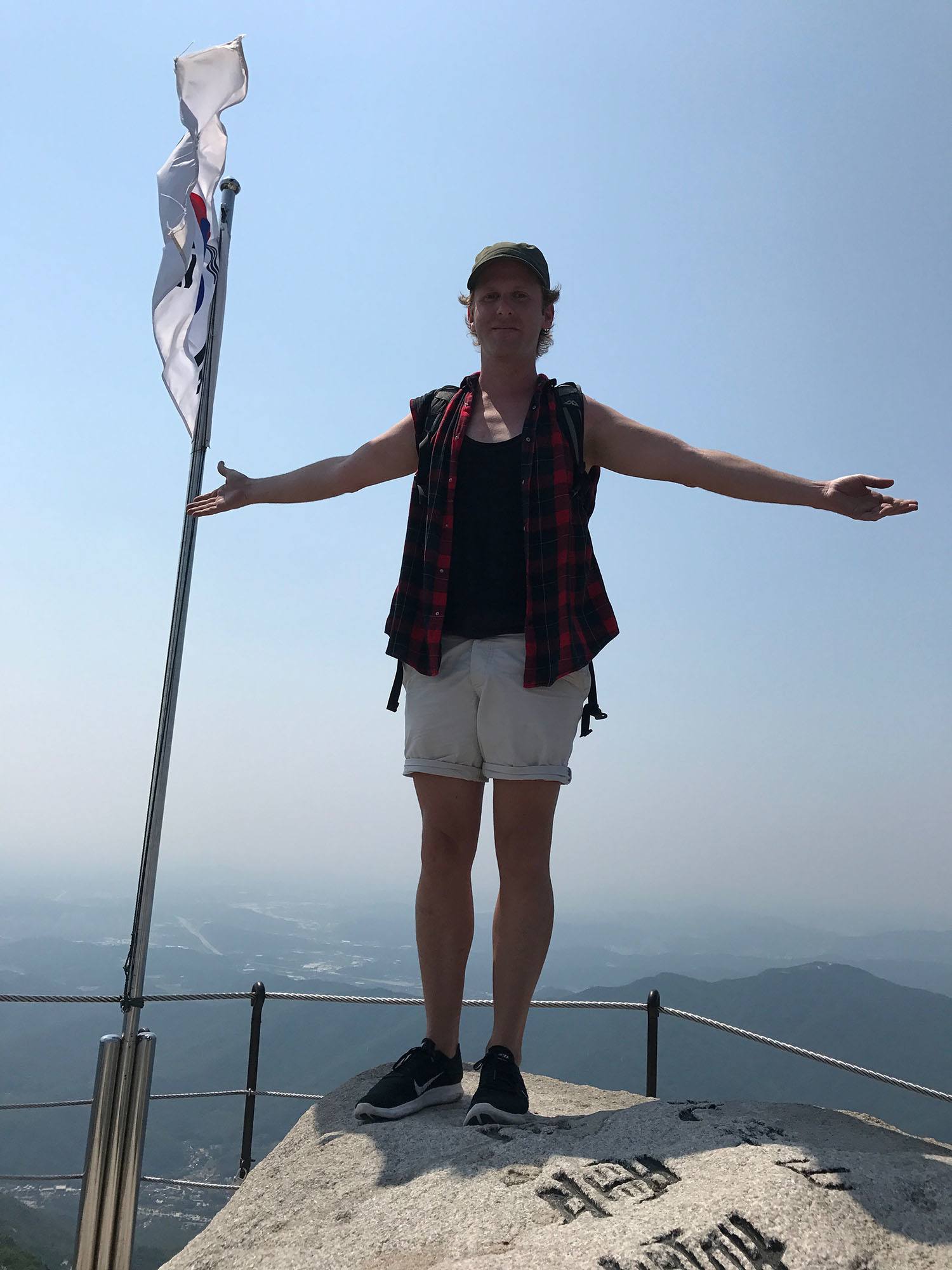
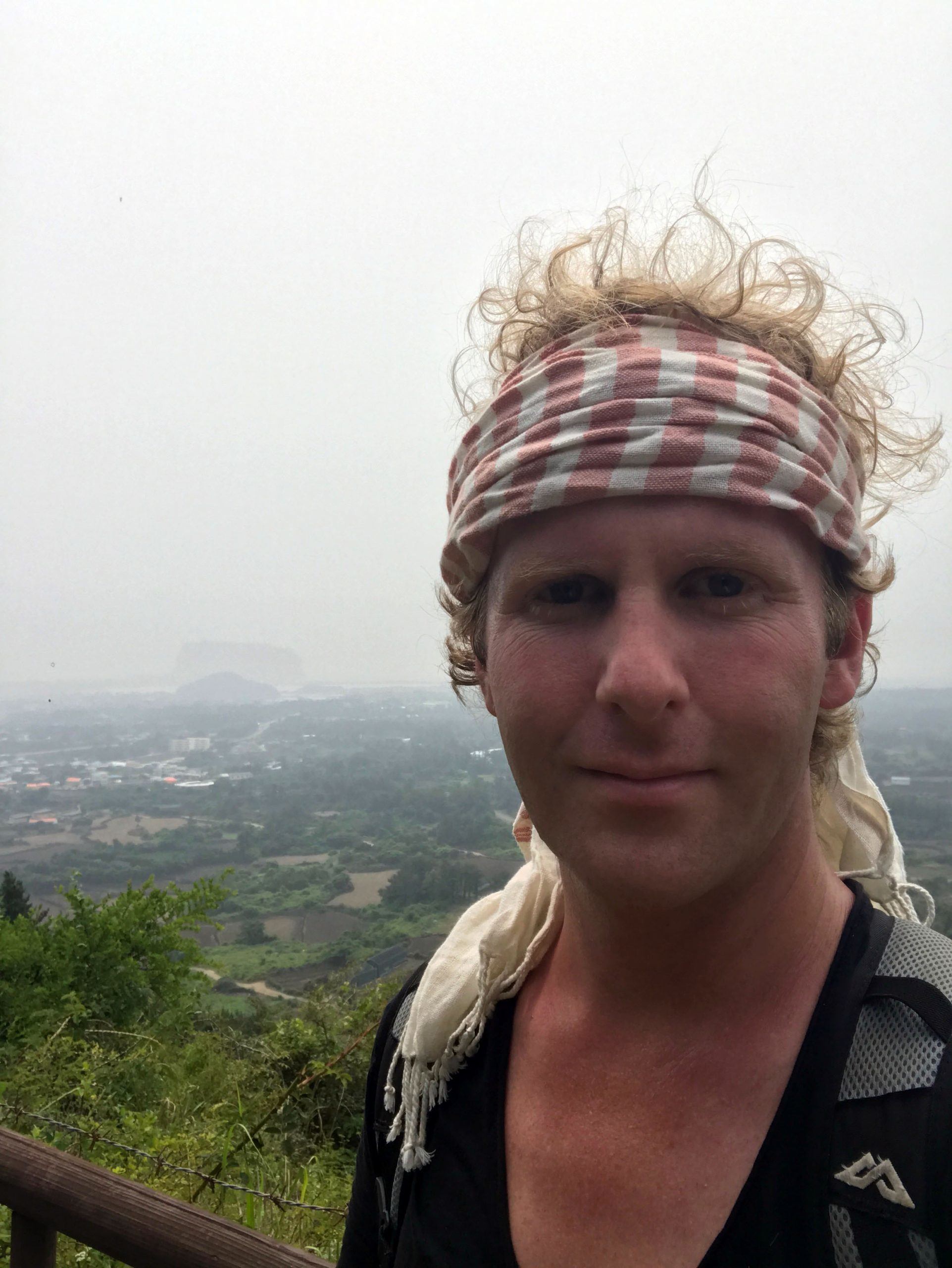
I feel it's a great destination for solo travellers. Read through and see why.
2-Week South Korea Itinerary Overview
➡ Days 1–4: Seoul
Explore South Korea's vibrant capital. Visit Gyeongbokgung Palace, stroll through Bukchon Hanok Village, and immerse yourself in the energy of Hongdae and Myeongdong. Don't miss hiking Bukhansan Mountain or relaxing at a jjimjilbang (Korean spa).
➡ Days 5–6: Sokcho and Seoraksan National Park
Travel to the scenic east coast for Sokcho and spend two days exploring Sokcho's oceanside markets and Seoraksan National Park. Hike to breathtaking peaks and discover ancient temples within the park’s stunning landscape.
➡ Days 7–8: Andong and Hahoe Folk Village
Experience Korea’s traditional culture near Andong. Wander through Hahoe Folk Village, a UNESCO World Heritage site, and get a taste of rural Korean life.
➡ Days 9–11: Gyeongju
Step back in time in the “museum without walls.” Explore historic sites like Bulguksa Temple, Seokguram Grotto, and Anapji Pond in this ancient capital of the Silla Kingdom.
➡ Days 12–14: Jeju-do
Fly to Jeju Island, known for its natural beauty. Hike Hallasan, walk the Olle Trails, and enjoy stunning views from Seongsan Ilchulbong (Sunrise Peak). Relax at the beach or explore local markets to wrap up your trip. Fly home or on to your next destination from here, or return to Seoul for departure.
SEOUL (서울) (Days 1-4)
Whether a foodie, a history buff, a technophile or simply a curious traveller, Seoul is South Korea's mega-metropolis capable of catering to every variant of human inclination. It's not hard to see why it's reported to be experiencing an identity crisis: the city is drenched in diversity and is a melting pot of east-meets-west and old-meets-new.
However, unlike the chaos of other similarly mixed Asian cities, Seoul soulfully blends the mix with subtle sophistication. The choices are endless: indulge on gastronomic cuisine at a seemingly unending stream of cafes and restaurants; explore ecclesiastical foundations by visiting architecturally-resplendent temples; or engage less tenable senses by visiting a spa or a meerkat cafe.
There is, essentially, no limit to Seoul's multifaceted soul.
To avoid decision fatigue, here are a few noteworthy sights to fill up your 'must-see' three to four day Seoul itinerary.
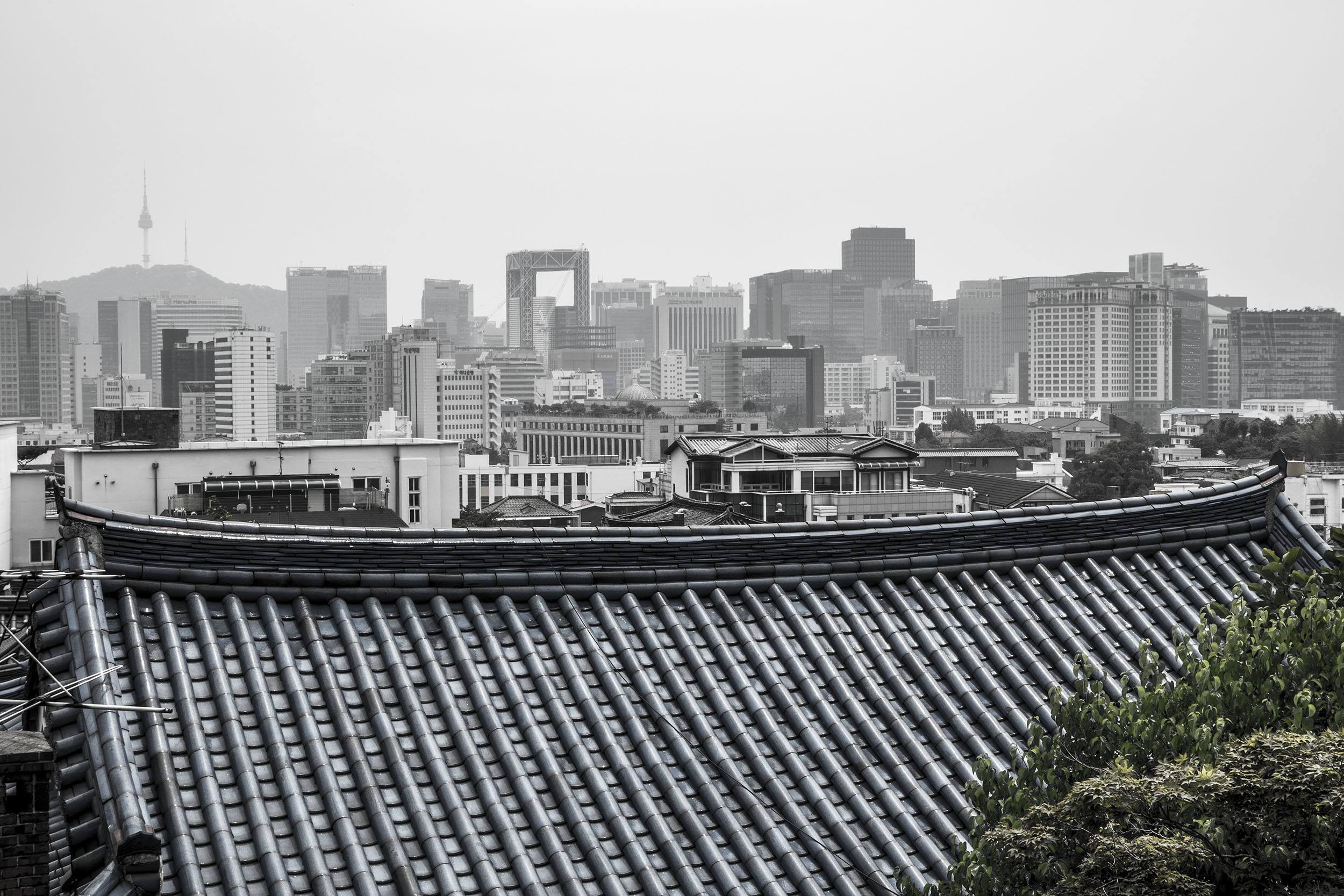
Things to Do and Experience in Seoul During Your 2-Week South Korea Itinerary
Gyeongbokgung Palace
Built many centuries ago, the palace – one of many in Seoul - attests to the architectural prowess of the country’s predecessors. It’s an heirloom of yesteryear, a relic to admire and a beatific sight not to be missed.
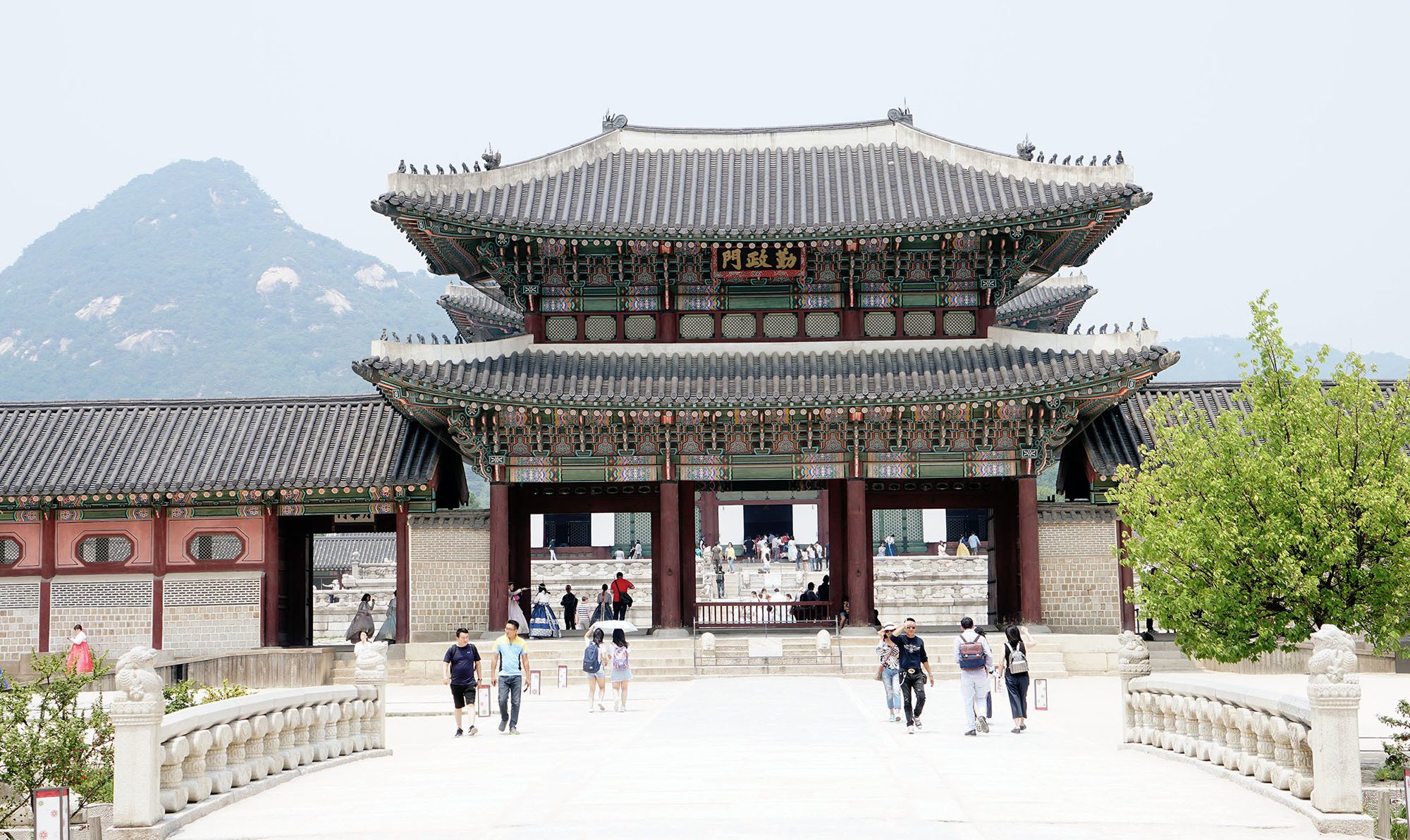
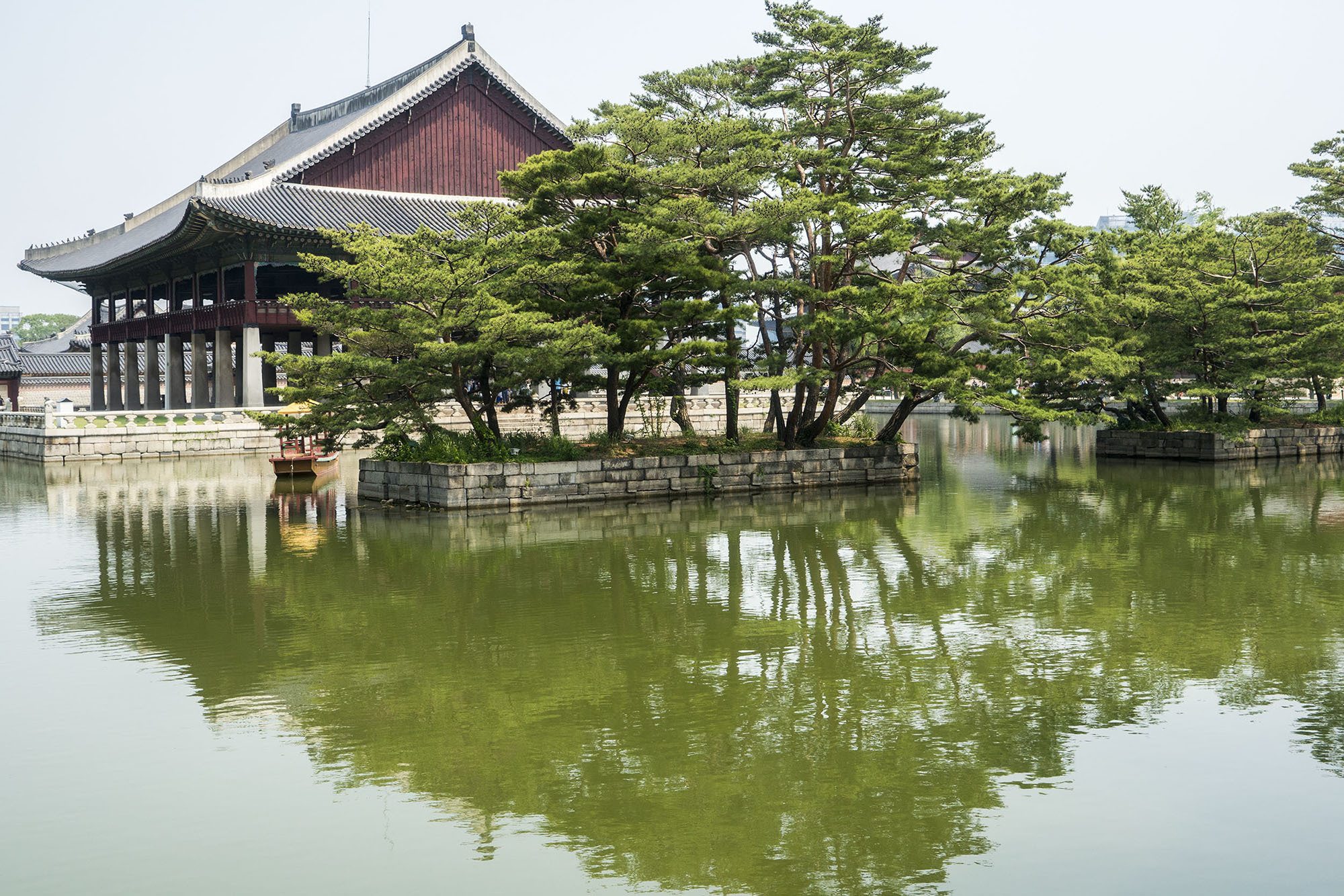
Although it’s the only one of the five palaces I visited in Seoul, I heard whispers that it is the most impressive.
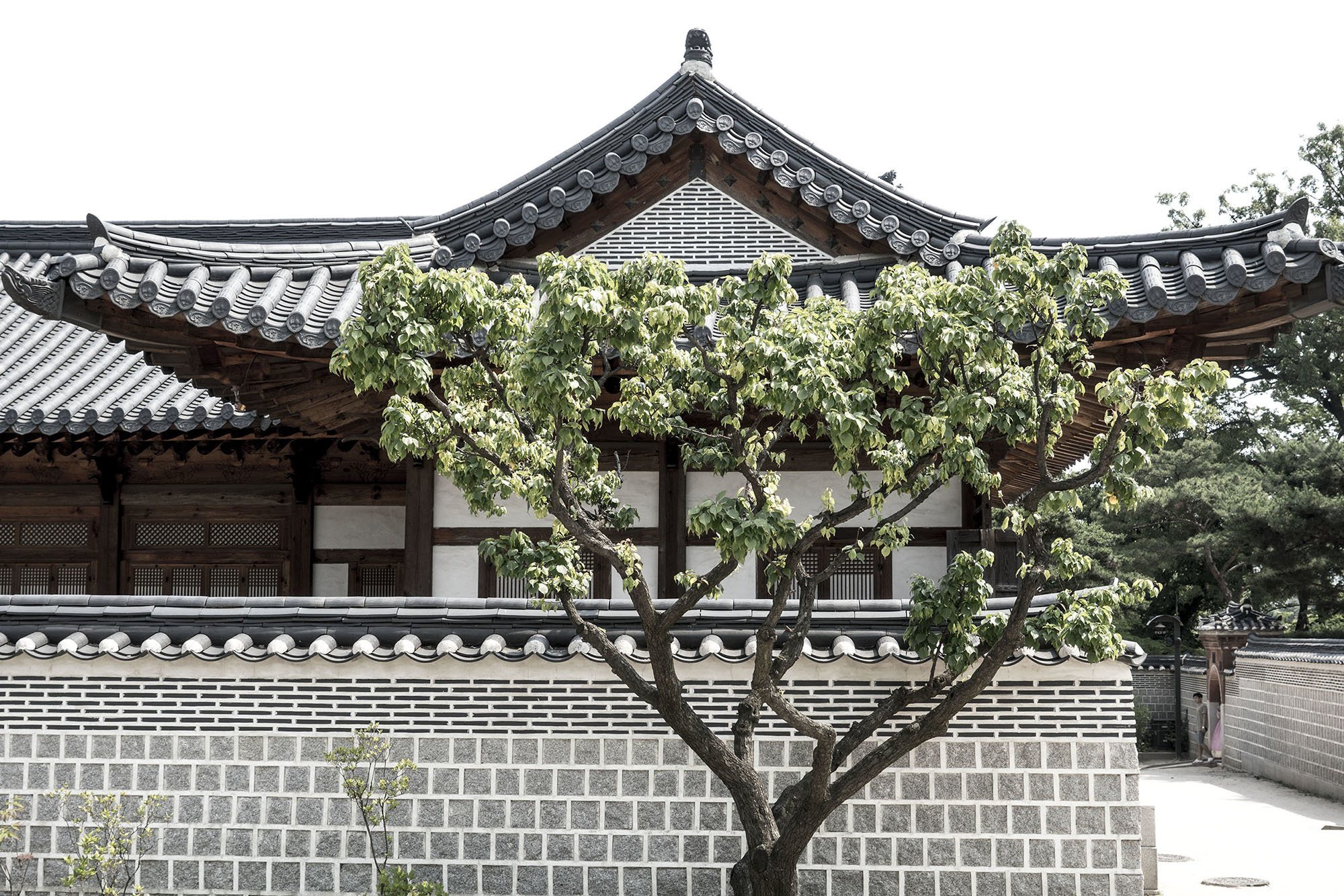
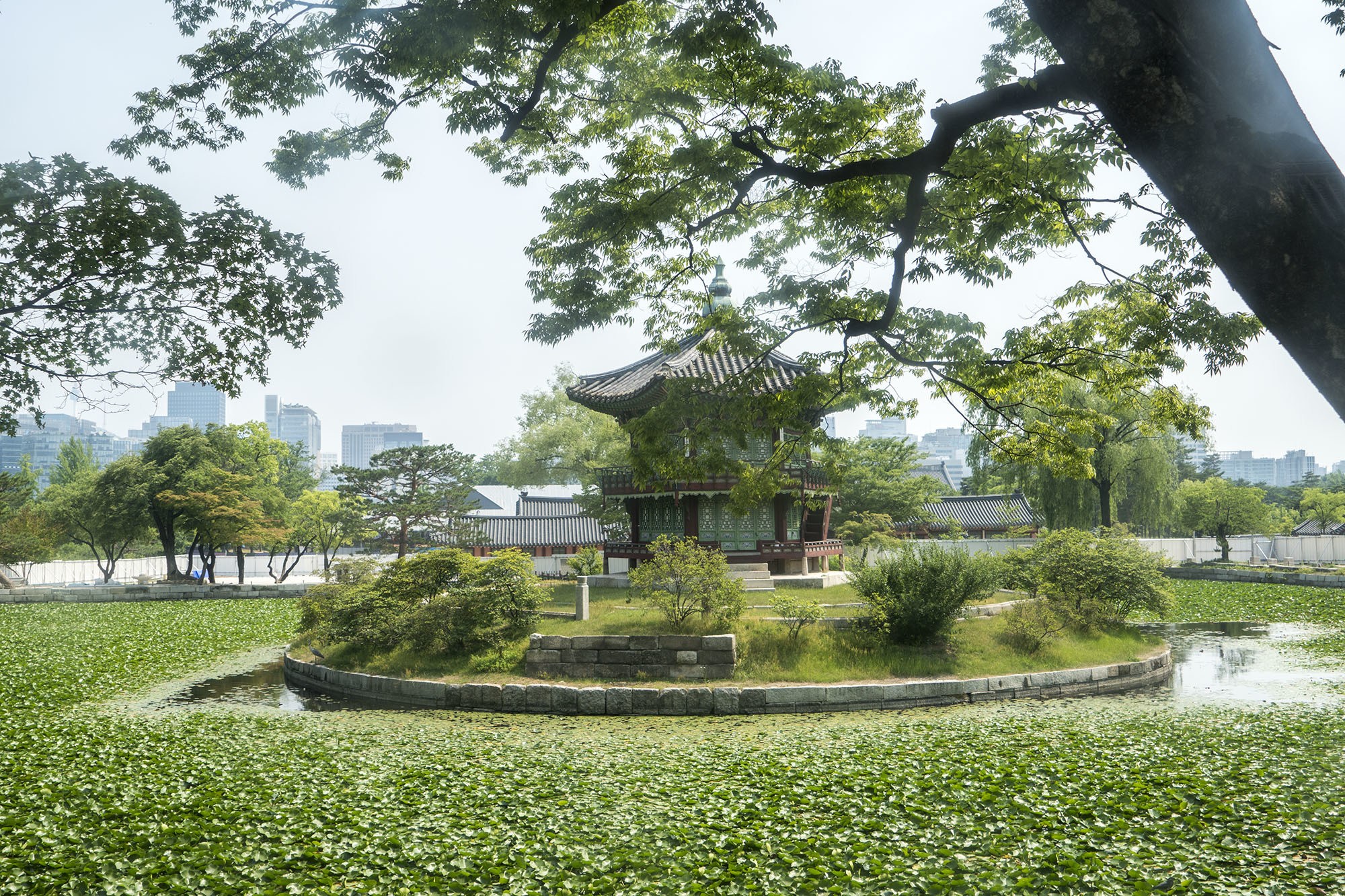
I spent hours traipsing the perfectly manicured grounds, surrounded by Korean antiquity – bedecked in oriental trimmings - at its finest.
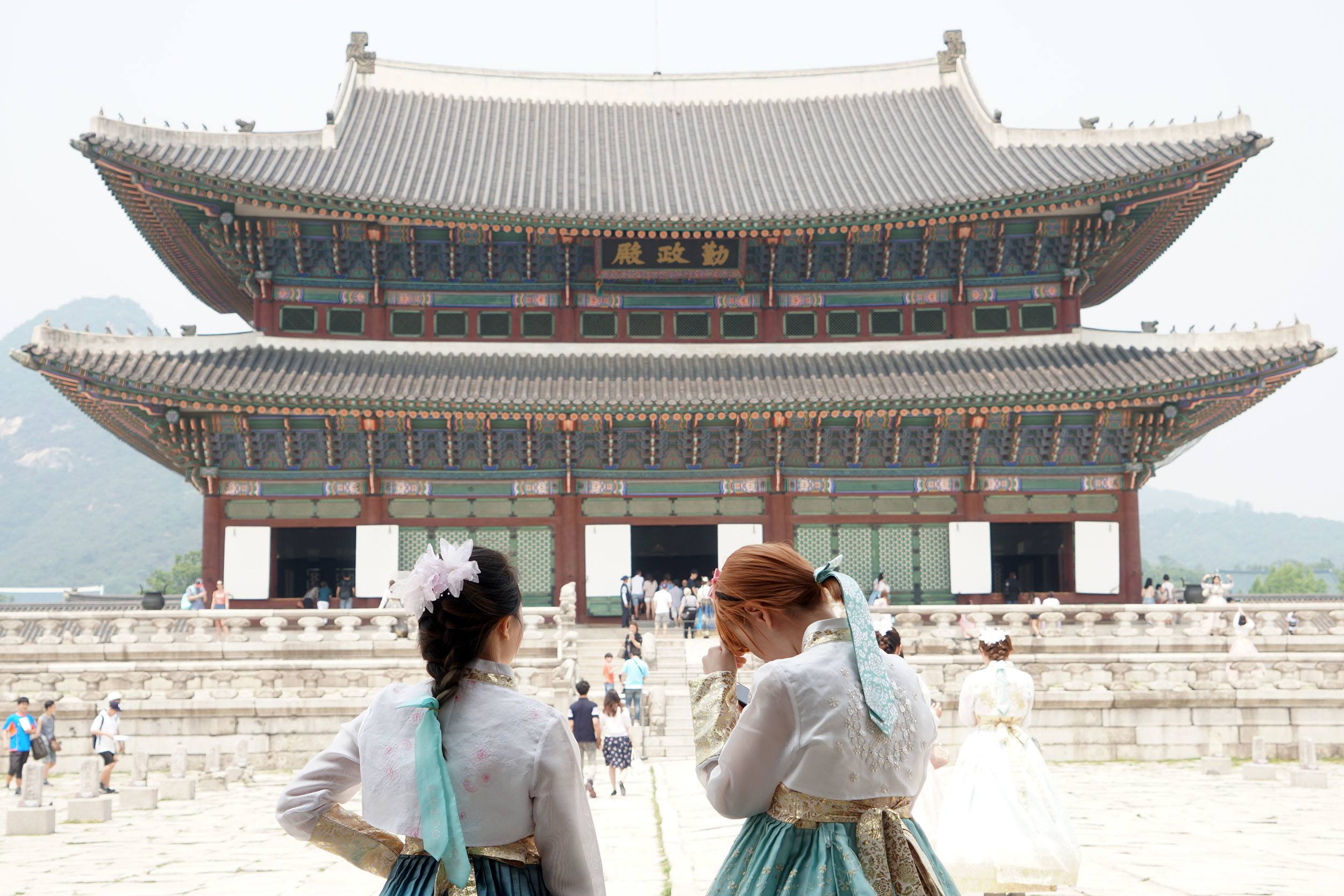
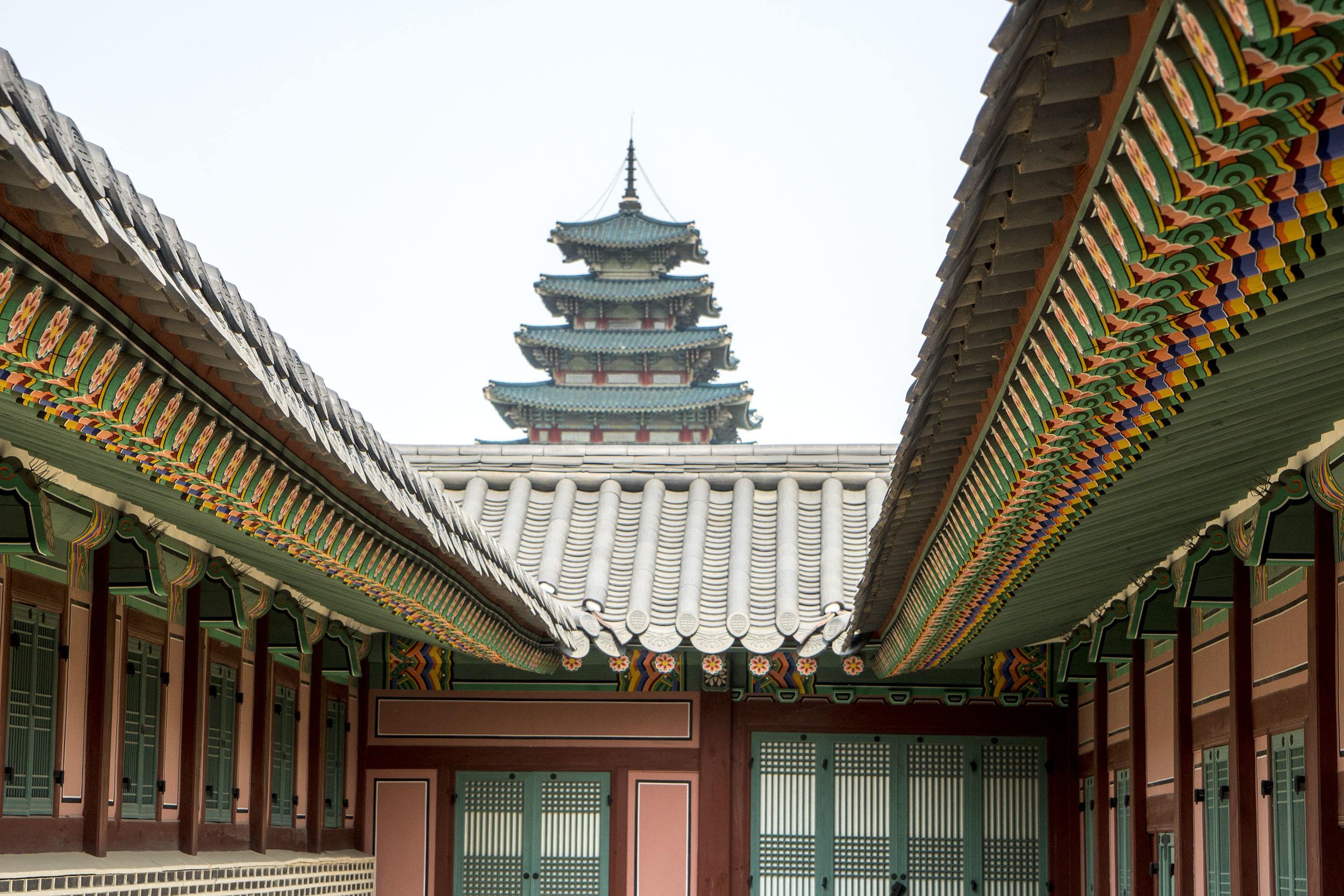
Don’t forget to hire and don traditional attire upon arrival - sashaying through the grounds will be more entertaining dressed akin to native visitors.
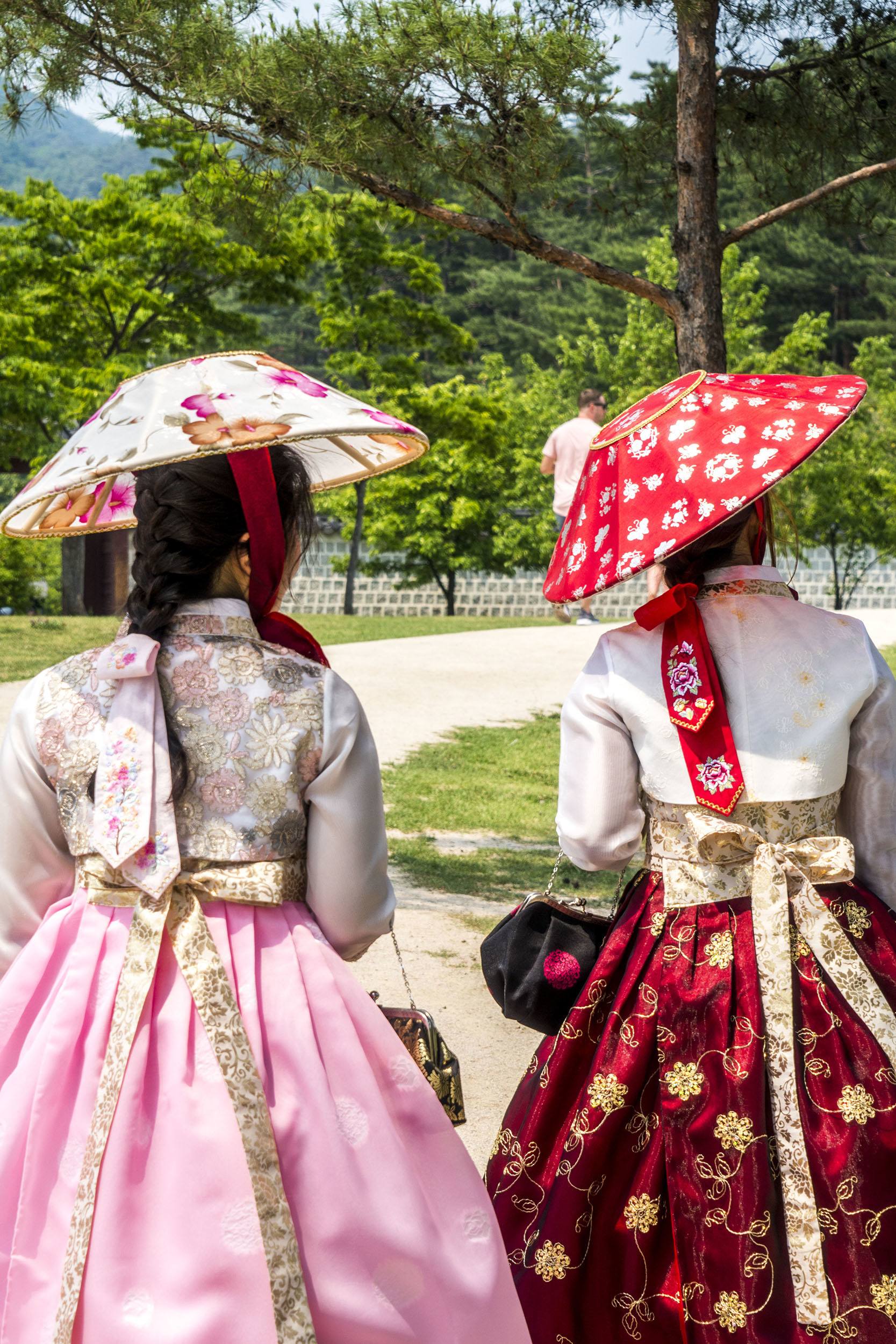
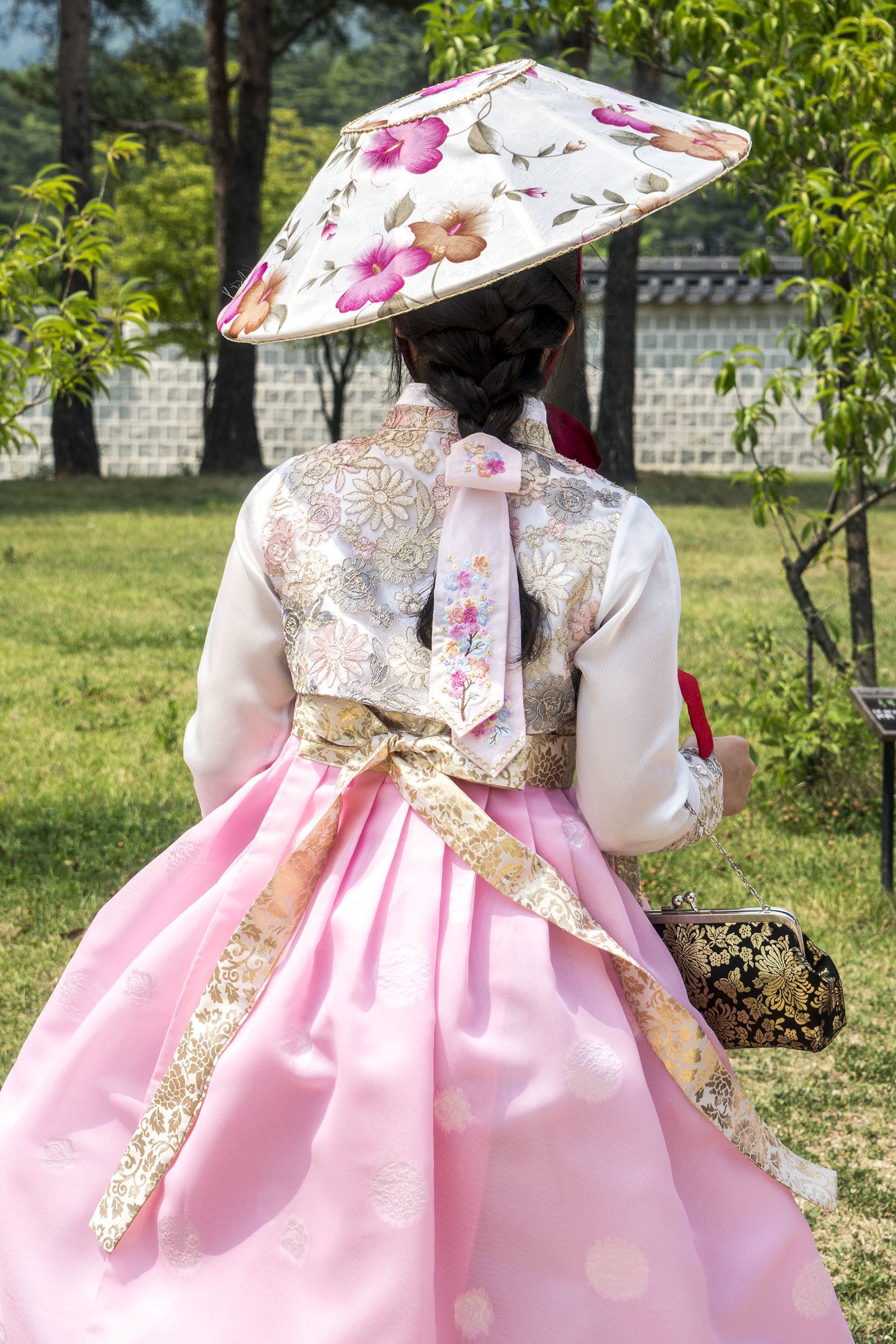
Set aside half a day to see the palace in its entirety. Some guide books recommend two hours but in order to embrace the essence of the Korean institution, taking your time is paramount.
Take water and wear a hat as the heat can be intense. The palace is closed on Tuesdays.
For a comprehensive and guided experience, consider booking the Small-Group Royal Palace and Seoul City Tour with hotel pick-up. It’s a more structured way of immersing yourself in Seoul's royal history with the added convenience of a knowledgeable guide.
➡ Click here to book your tour
Bukchon Hanok Village
For an opportunity to step back in time without leaving the confines of the city’s periphery, head to Bukchon, a short walk from Gyeongbokgung Palace. It’s here that you can discover a traditional village comprising Hanok, homes designed in an architectural style synonymous with Korea of yesteryear.
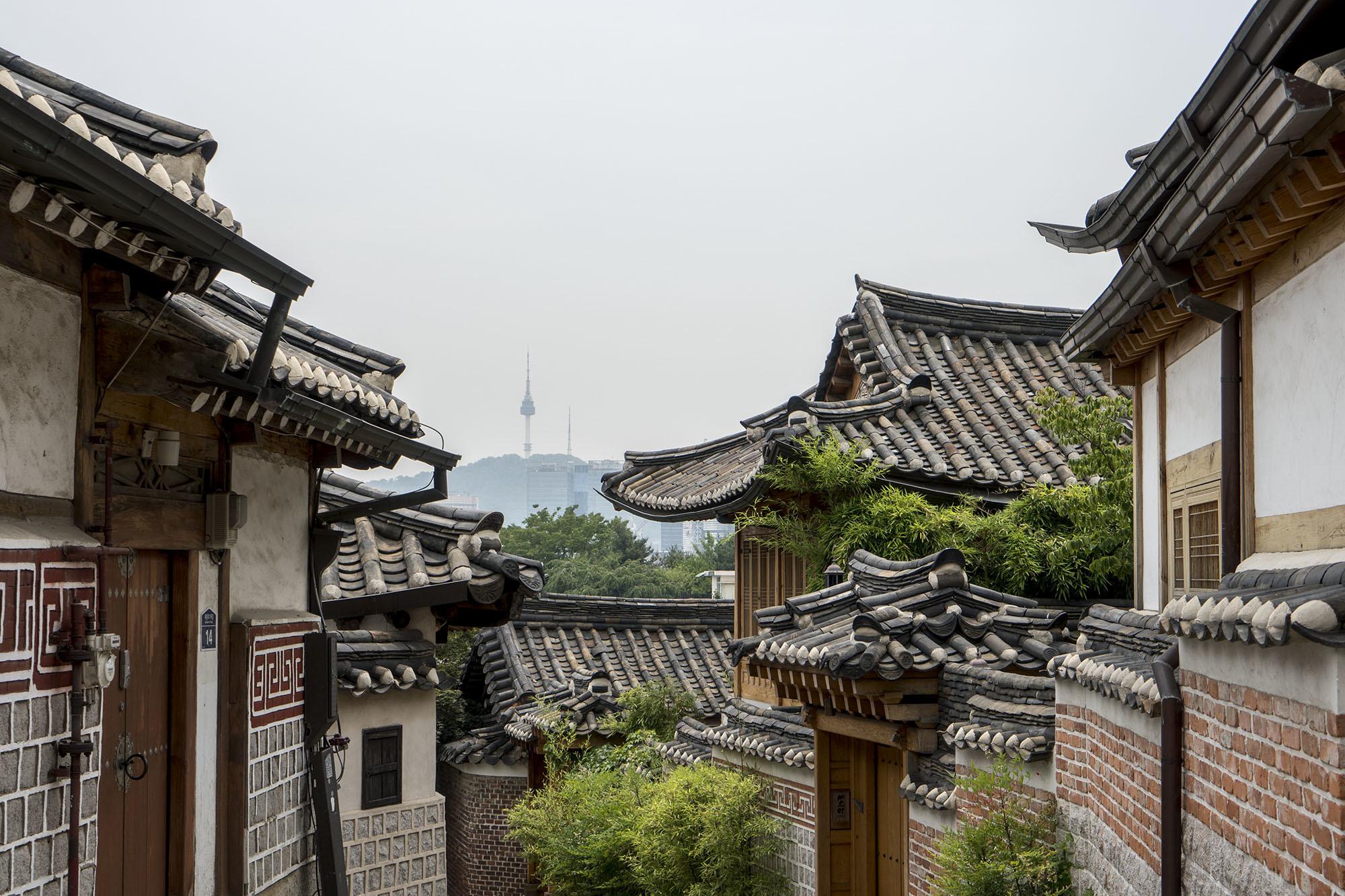
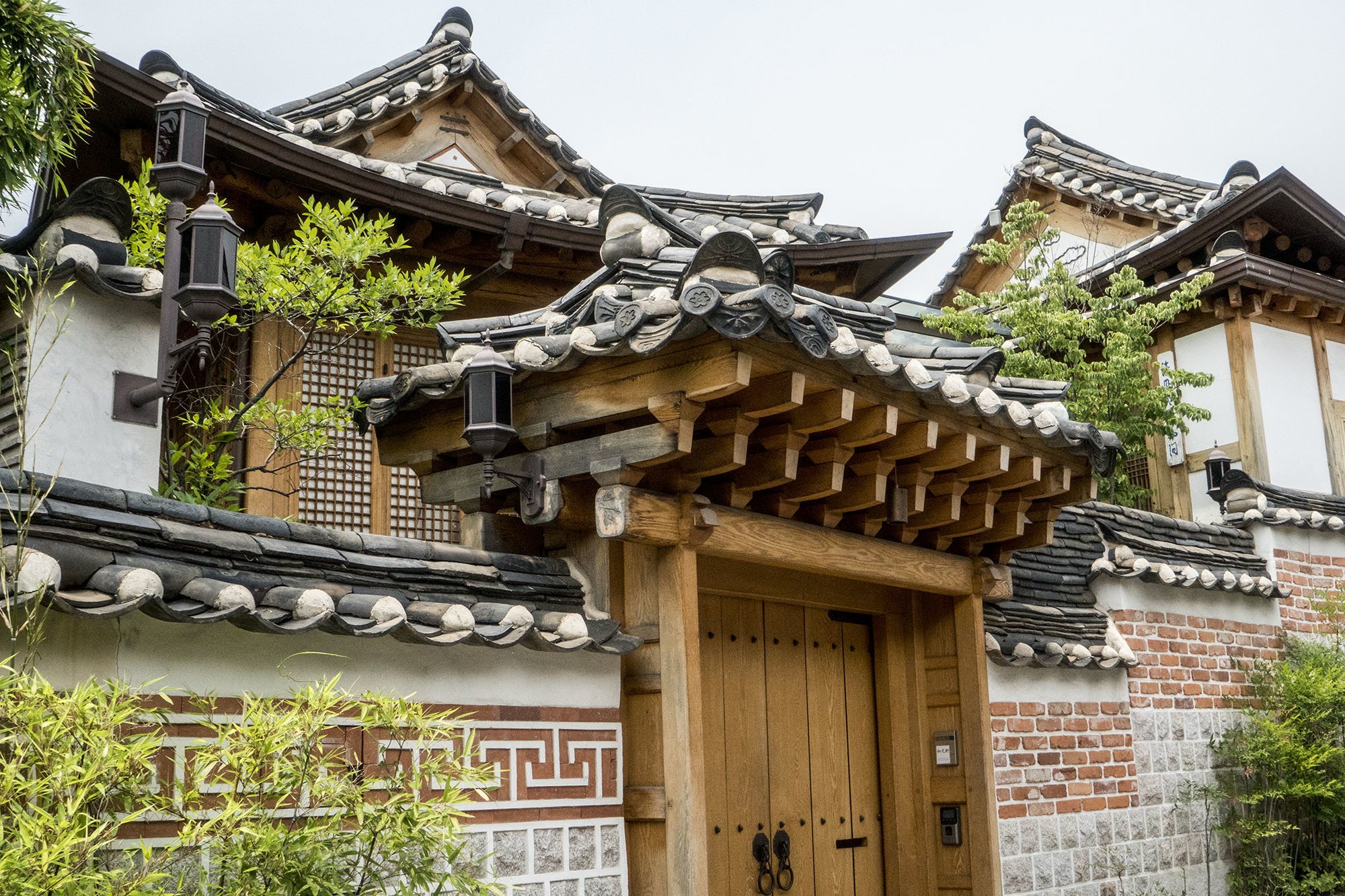
Purpose built to be in harmony with the surrounding environment and the ever-changing seasons, they utilise ondol and daecheong, one for keeping warm in winter and the other for staying cool in summer. A stroll through the village felt like stepping back in time several centuries.
Aside from the Hanok, the view of Seoul from the top of the mildly precipitous hill is stunning.
Namdaemun Market
Anyone who enjoys shopping should not miss letting loose in Namdaemun Market.
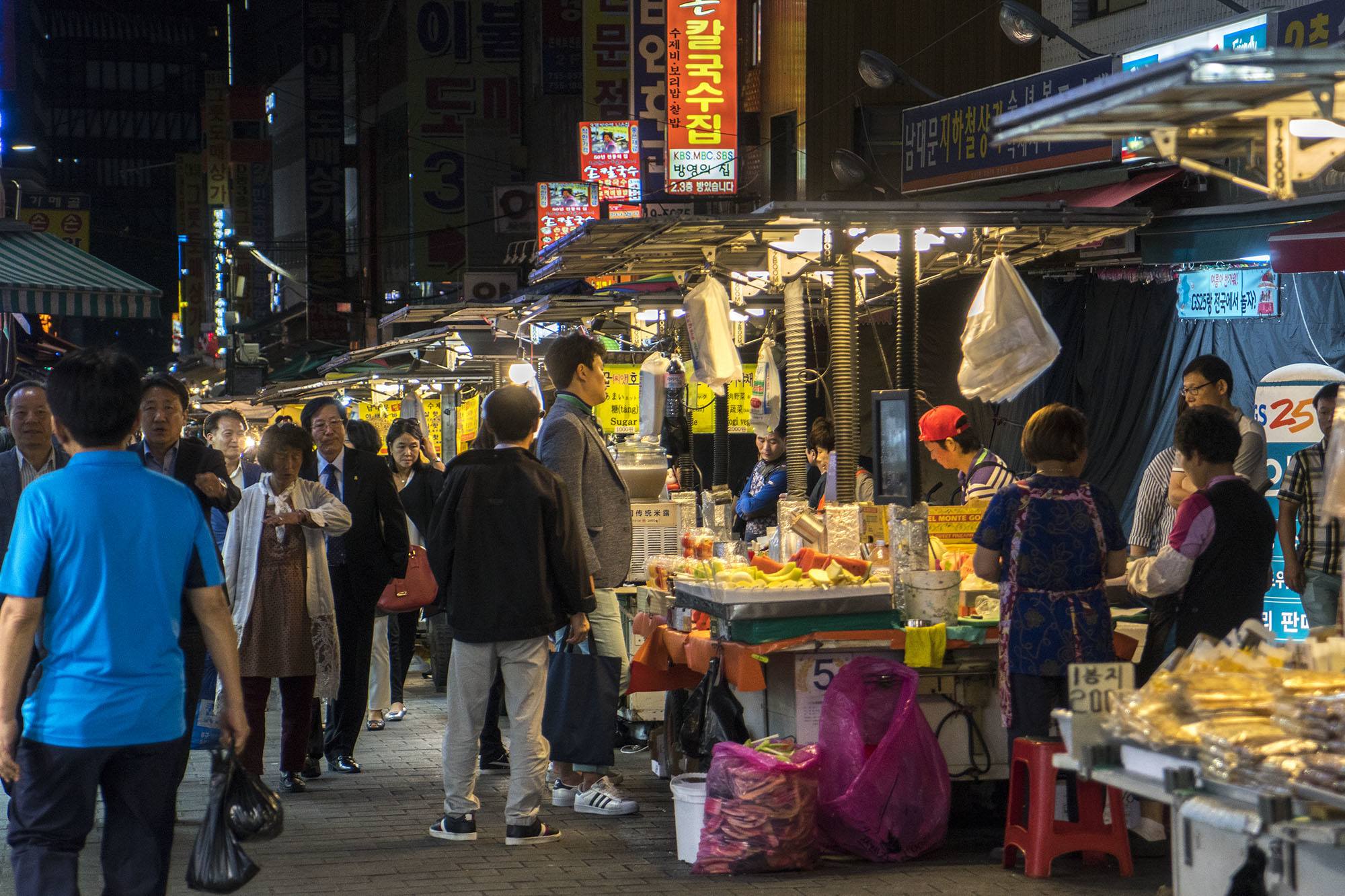
Shopaholics beware: there are over 30 multi-storey buildings comprising thousands of stores ranging from clothing to fabrics, jewellery, toys, food and more.
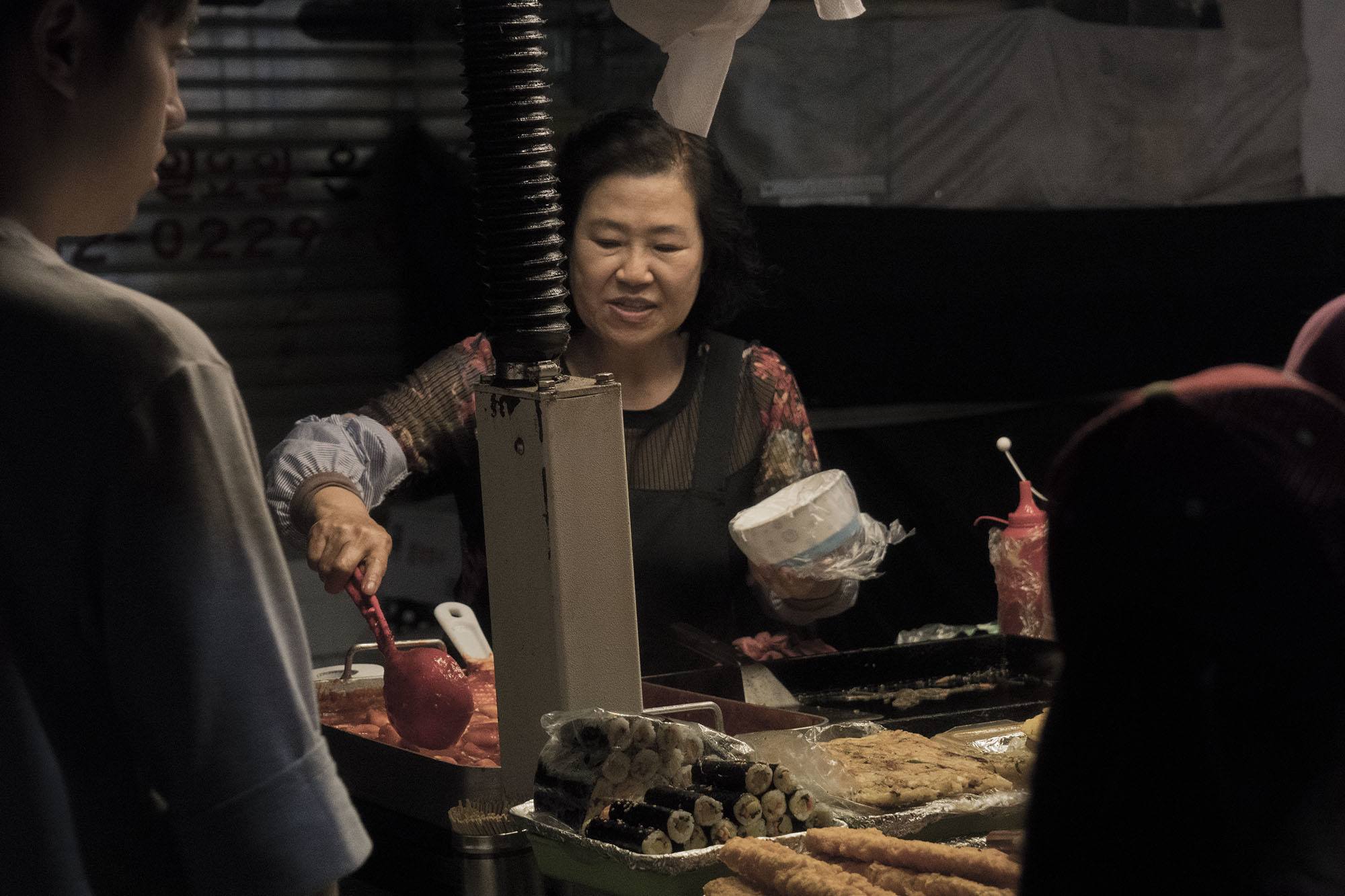
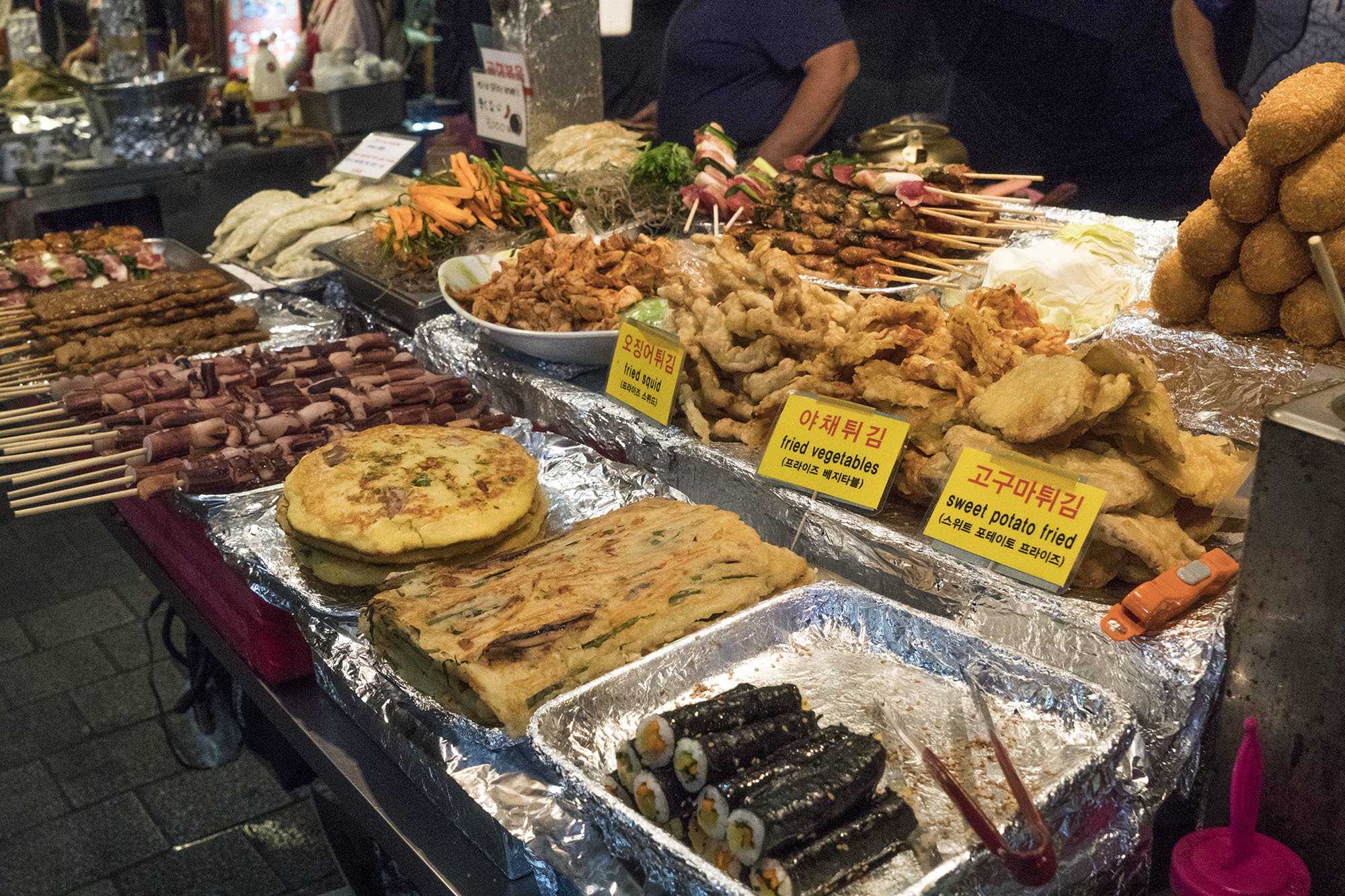
In fact, there are so many goods upon which to feast your eyes, escaping unscathed without burning a hole in your wallet or purse is the only danger. Even those without a penchant for the illustrious pastime will enjoy wandering aimlessly through the market, as it’s a visual spectacular of Korean life under a public magnifying lens.
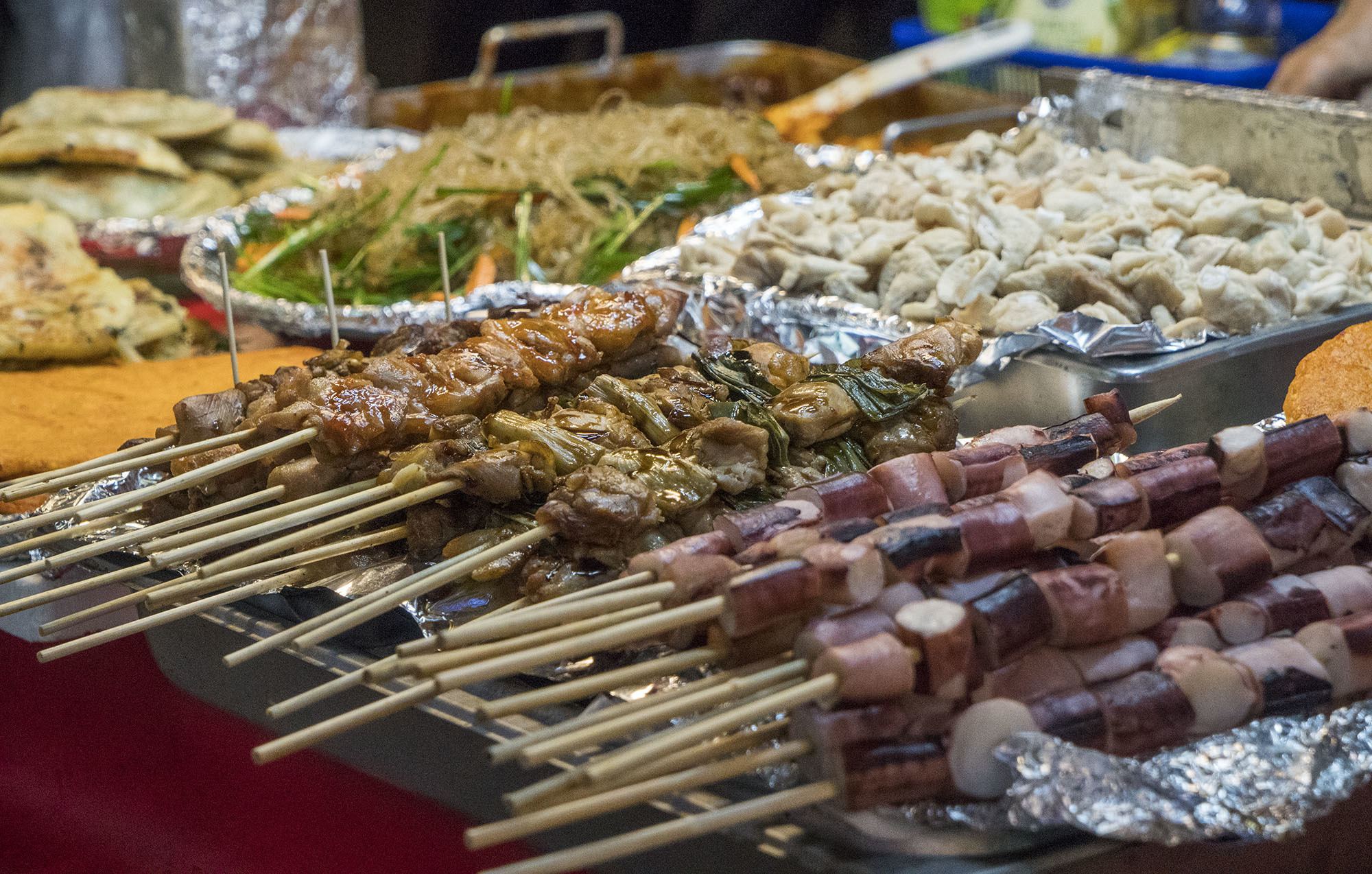
If you’re looking to explore more local flavors and unique dishes, consider joining the Night Market Food Tour. This guided tour takes you through some of the best night markets in Seoul, offering a deeper dive into the city's vibrant food scene.
➡ Click here to book your tour
Namdaemun Camera Shops
For photography aficionados, there is no missing the side-by-side Sony, Canon and Nikon shops at Namdaemun. Most goods are second-hand, but generally in very good condition. It’s a nirvana for anyone interested in purchasing competitively priced, quality goods in the pursuit of refining their craft.
I purchased a second-hand Canon SLR along with two lenses, all of which are still helping me capture moments of life around the world.
If new to the photography biz, ensure your knowledge is adequate before entering the vulture’s nest. If concerned (as English language skills among staff can be scarce), recruit a bilingual Korean to take along for the ride and negotiation.
Although the staff are seemingly friendly, if they detect a novice, the price will automatically increase disproportionately. It’s a haggling game, to the end.
Hongdae
Although Seoul is comprised of multiple districts, many of which are worth visiting, Hondgae – according to personal opinion – is the energised core of the city’s soul, its lifeblood being beat rhythmically by the eclectic, upbeat and unruffled youth inhabiting its streets.
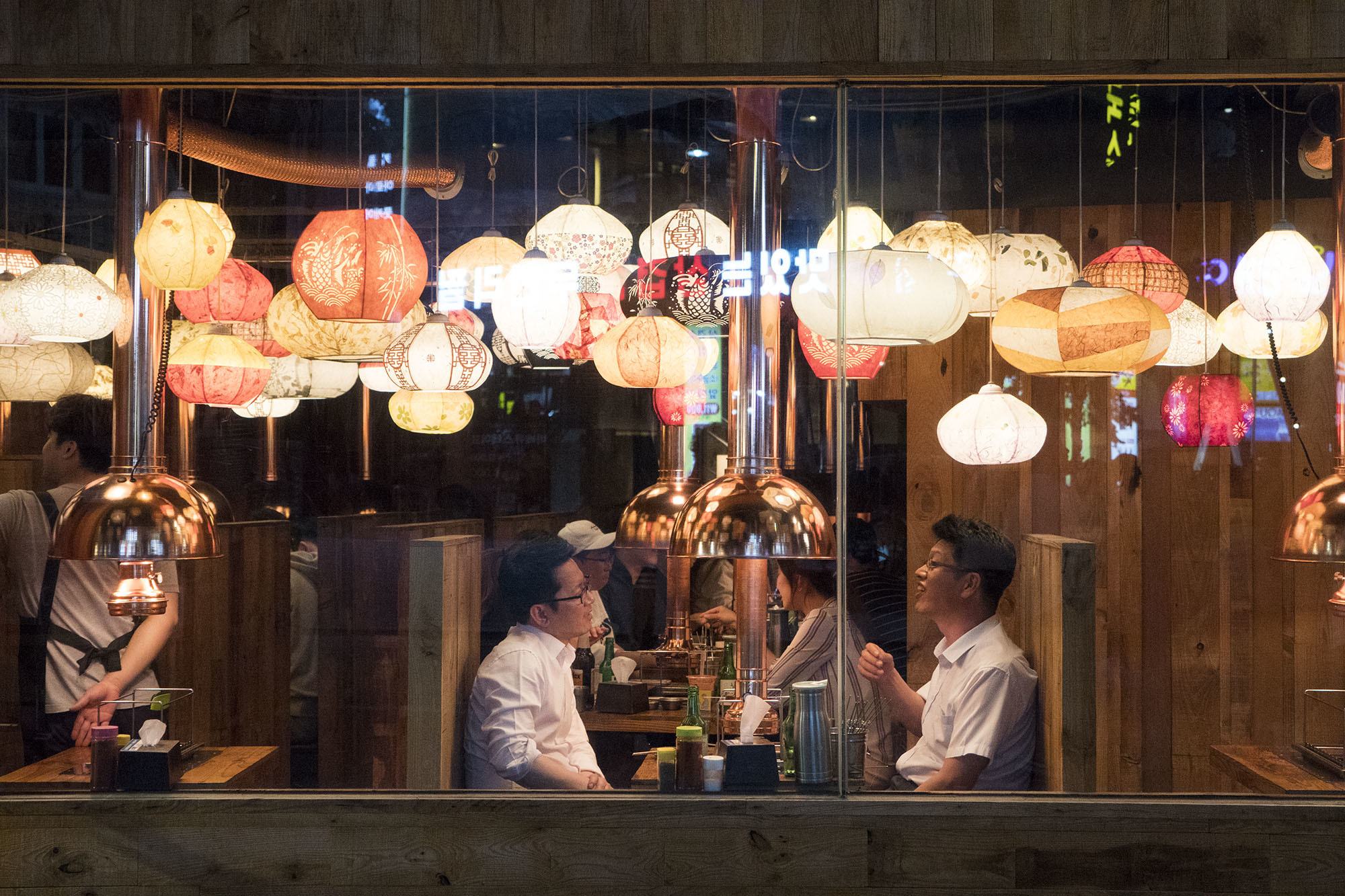
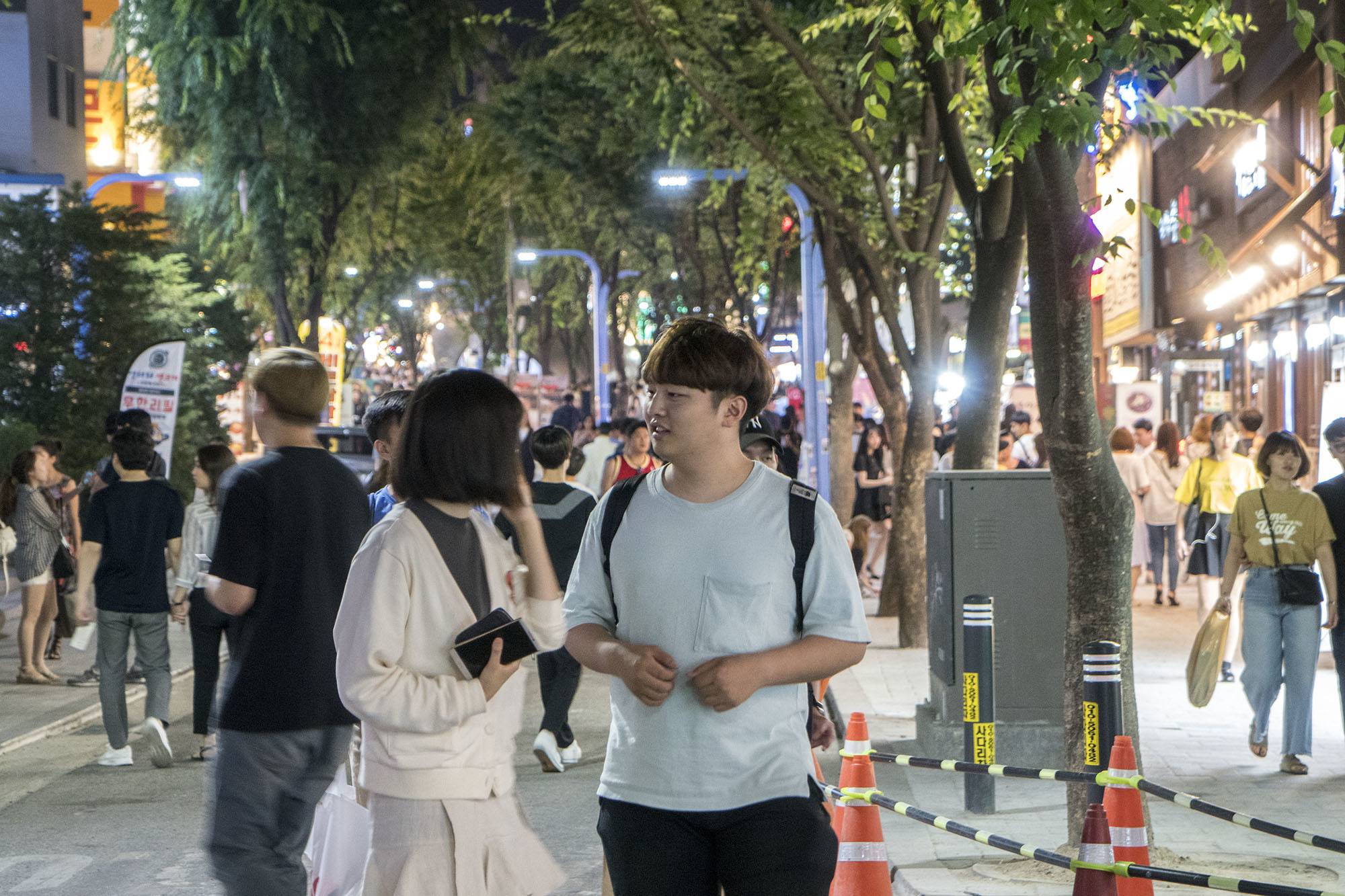
Take a stroll along Hongik University Street (grabbing a delicious bite to nourish yourself en route) and admire the crucible of Korean life unfold on the street: students, from all walks of life, sit together on the grassy strip laughing, gorging fragrant food, embracing their loved ones and enjoying the vitality of youth.
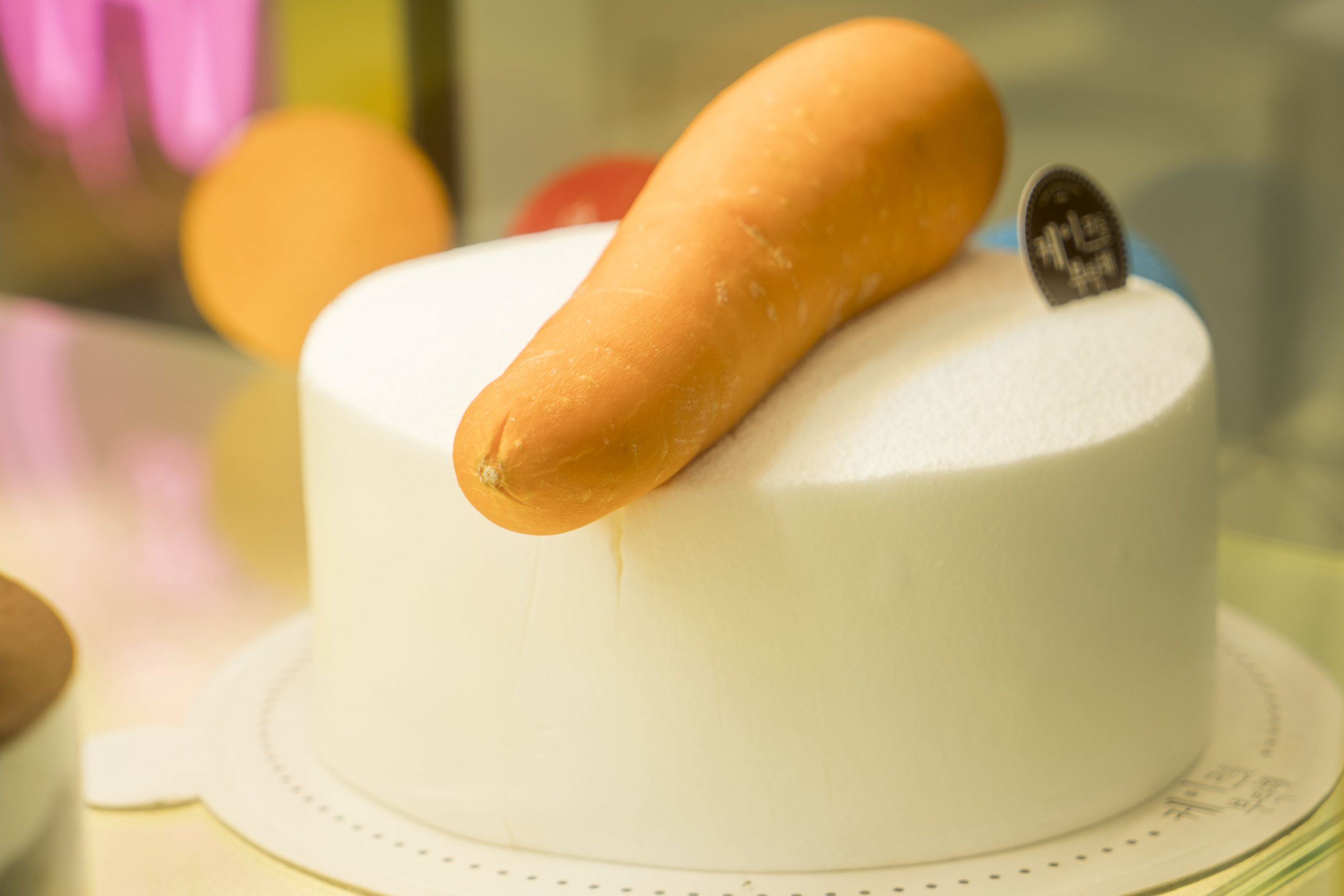
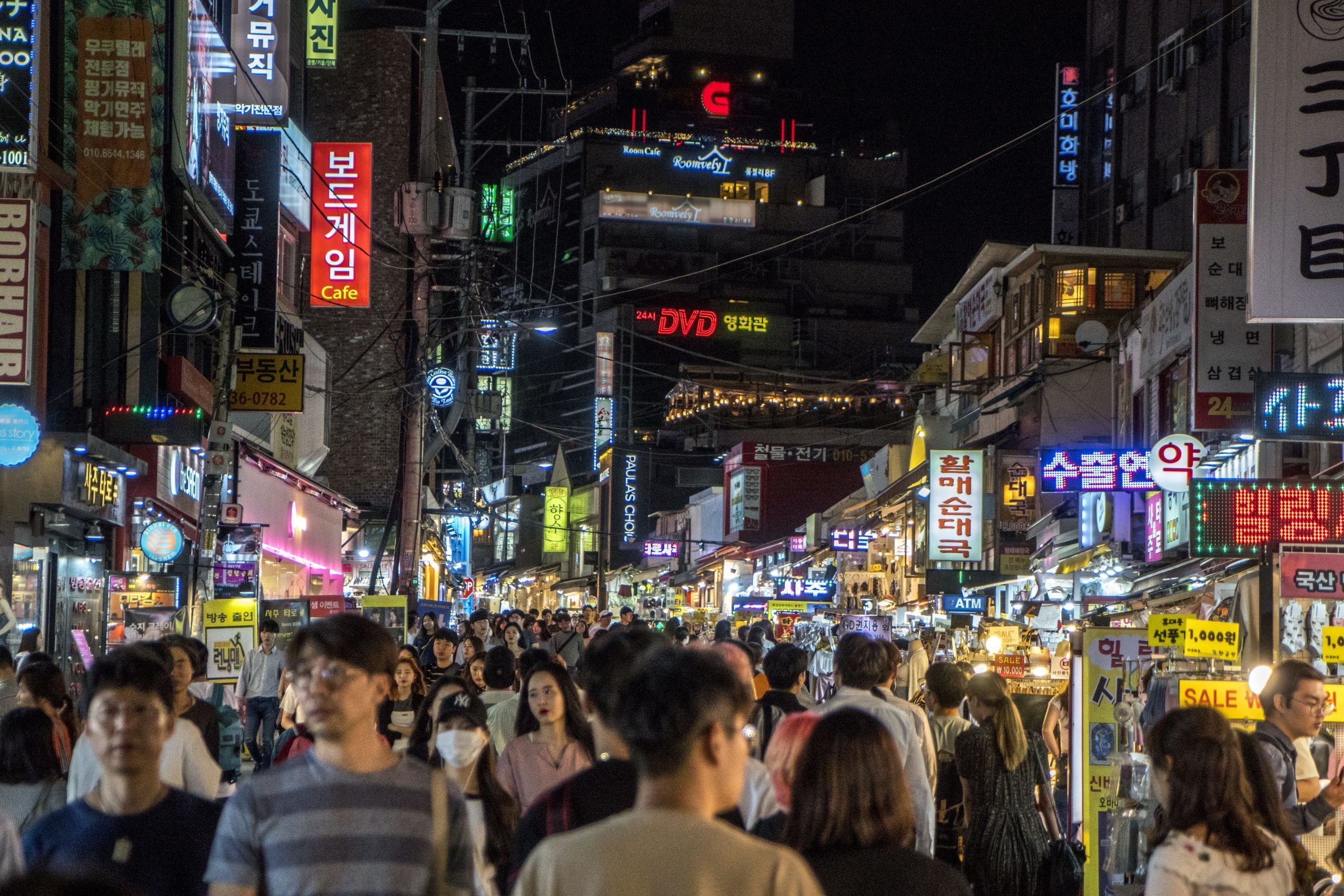
On the other side of the main road, there are copious shopping streets to be found, replete with everything your heart may (or may not) desire. It’s also where one can find Meerkat Friends Café.
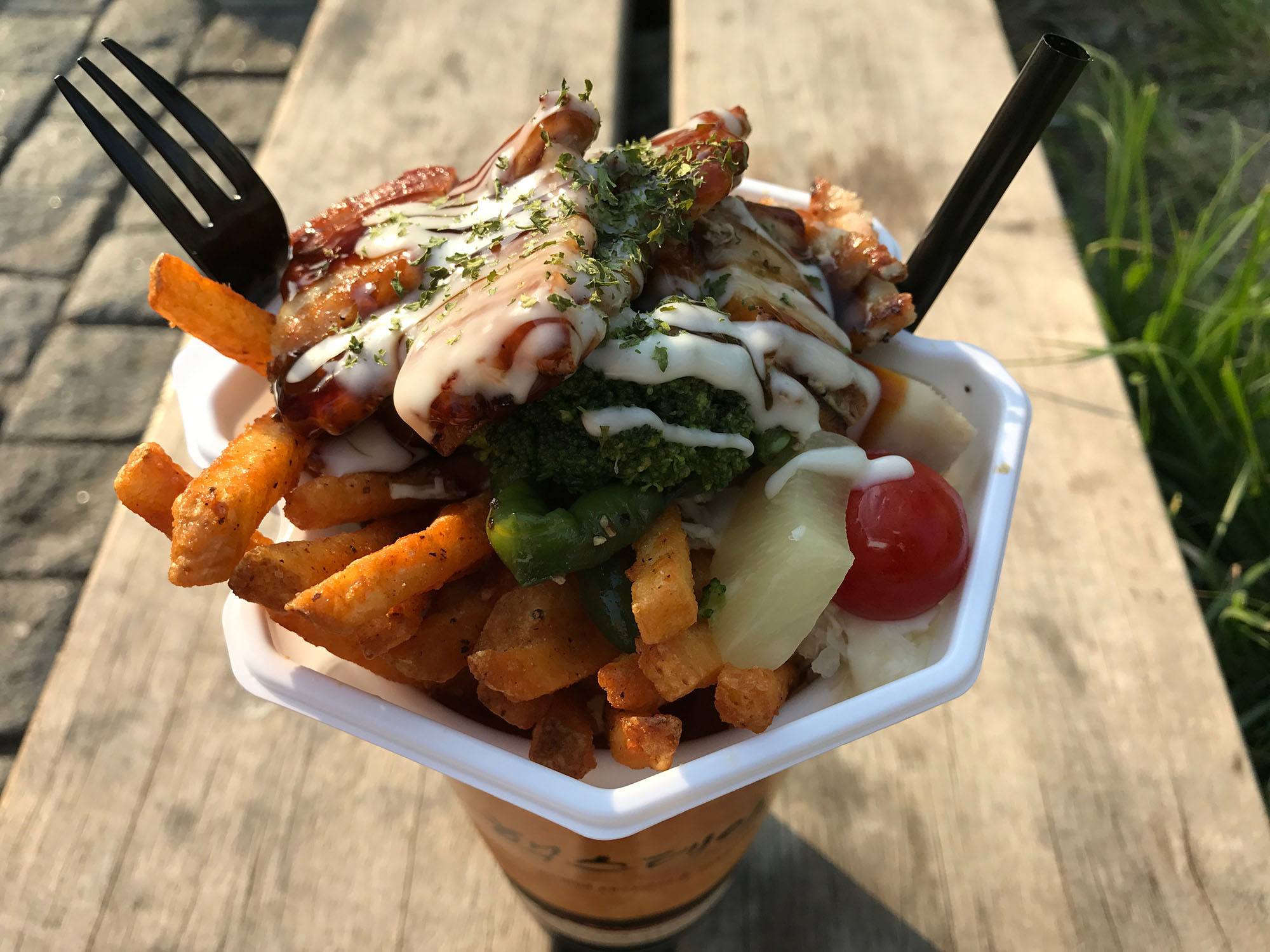
Bukhansan Mountain Summit Hike
Visible from most standpoints throughout Seoul, the three-horned mountain lives peacefully on the city’s northern periphery. A hike to its highest peak - Baegundae - is a must.

Aside from the exhilaration you will derive from arriving at the top, ceaseless amusement will be provided by the droves of Koreans taking a leisurely stroll to the top – it’s quasi-free entertainment. After all, hiking is to Koreans as beer is to Germans. It’s a favourite pastime, particularly popular at the weekend.
The hike isn’t as gruelling as you may think, so don’t be put off: I made it without having trained, two months after contracting pneumonia.
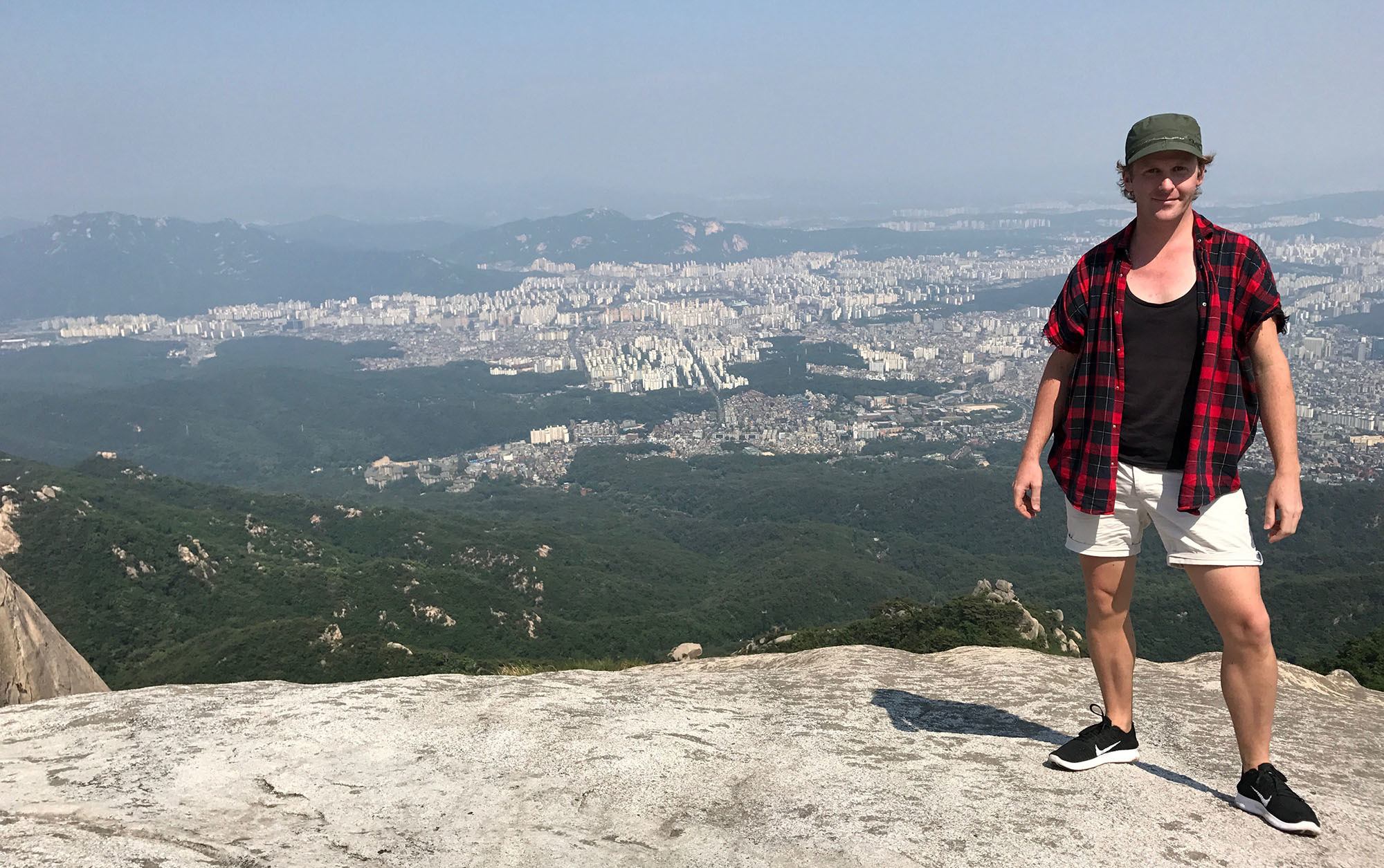
Take it slowly, stop intermittently to eat the carbohydrate-laden snacks you have brought with, and enjoy the journey.
It took approximately five hours to complete the circuit, with additional time required to get to and from city-centre accommodation.
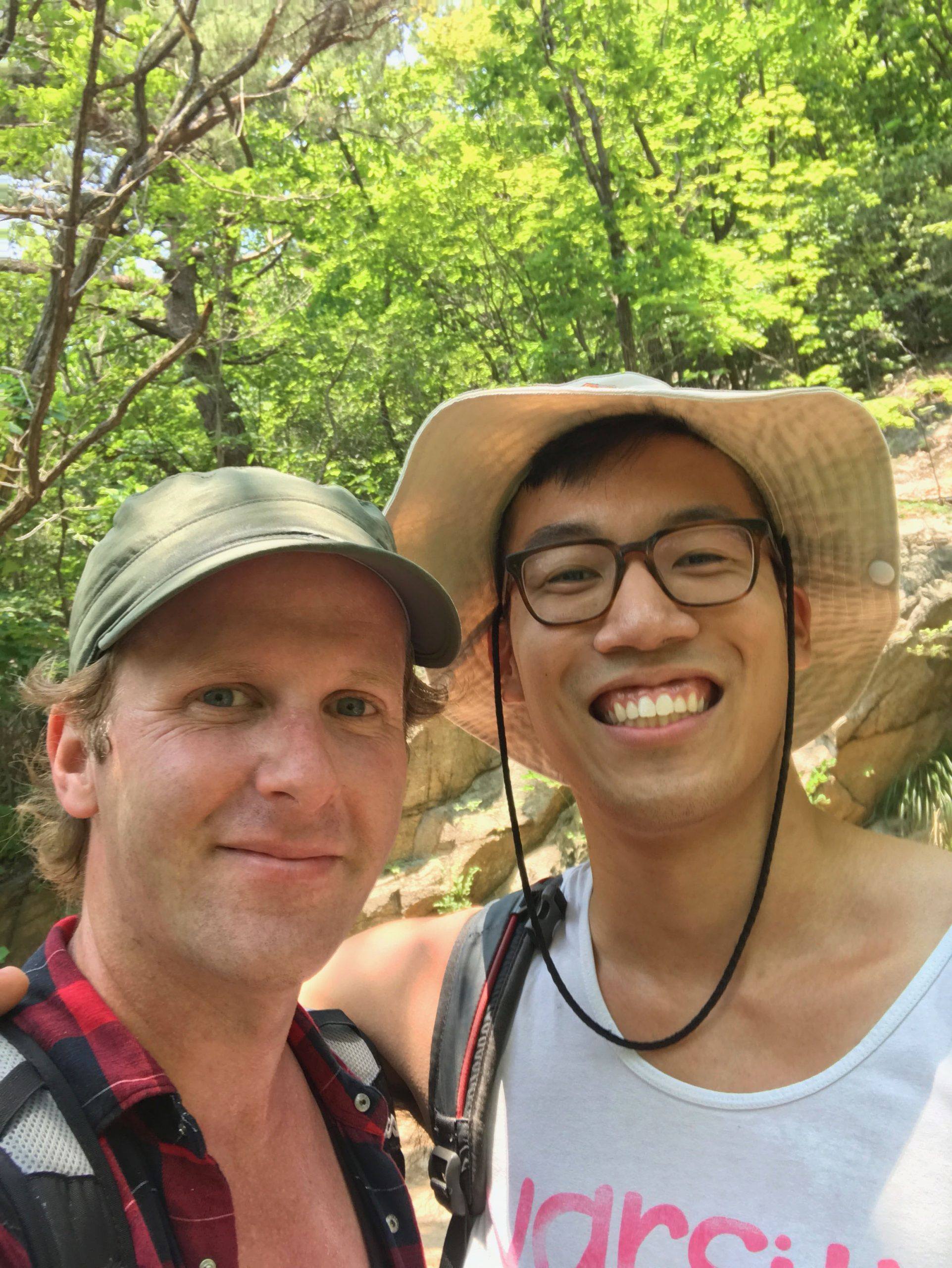

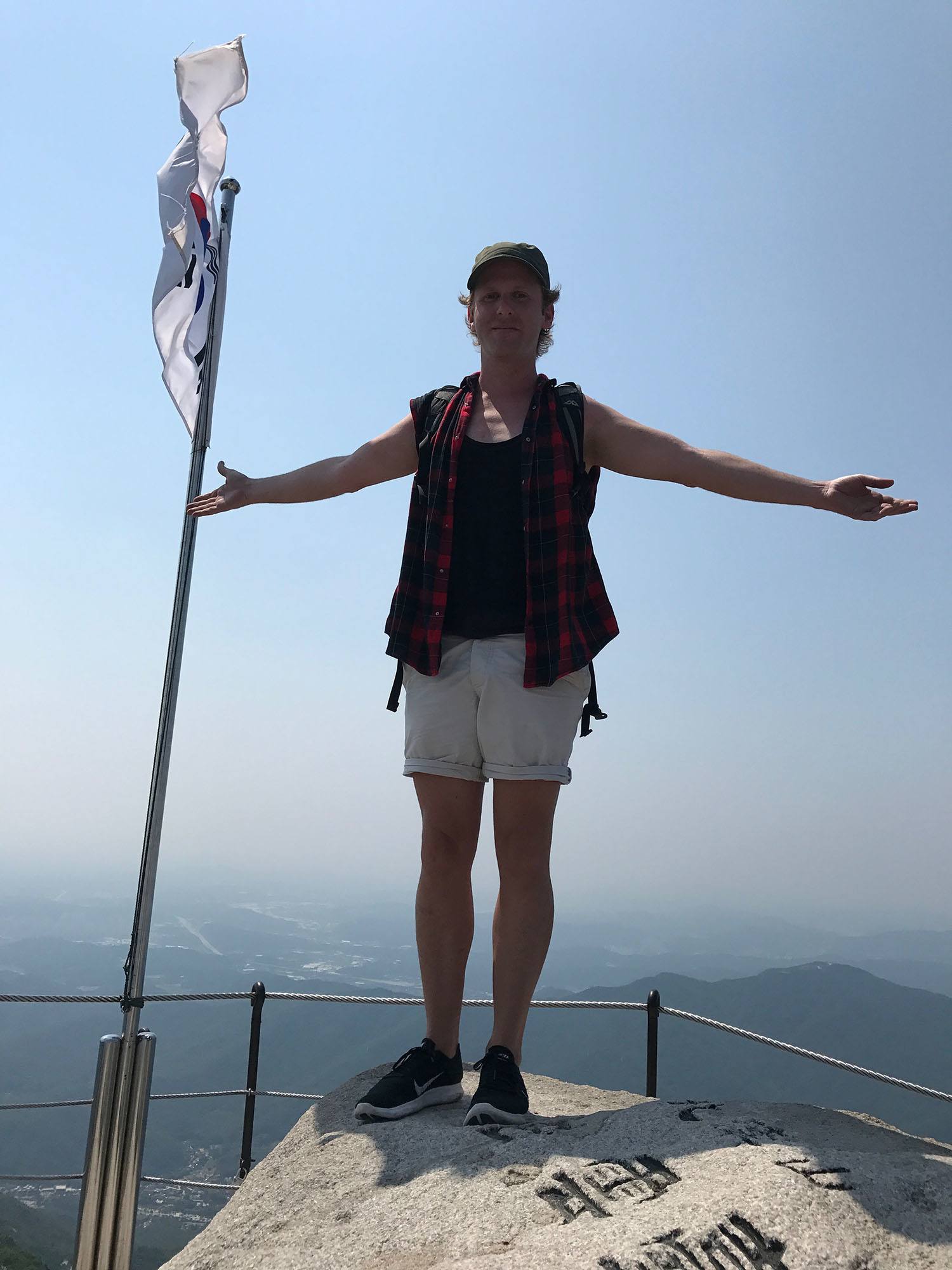
Arriving at the starting point is simple. Take Seoul’s metropolitan line three to Gupabal station. Leave the station via exit one. Take bus 704 towards the fortress, and get off at the park entrance.
Don’t be concerned about where to get off: you will see a bus full of people bedecked in full hiking paraphernalia pile off, so just follow suit.
Dragon Hill Spa
Getting completely naked surrounded by others is never personally enticing, but it is a trademark of Korean culture, and a necessary K-experience while visiting Seoul.
Recently made internationally renowned by William Shatner and his entourage in ‘Better Late Than Never’, the jjimjilbang – or Korean bathhouse – requires little local promotion: visited daily by hundreds – if not thousands – of Seoul residents, finding a possie in the bubbling 35-degree Celsius spa at certain times of day may prove challenging.
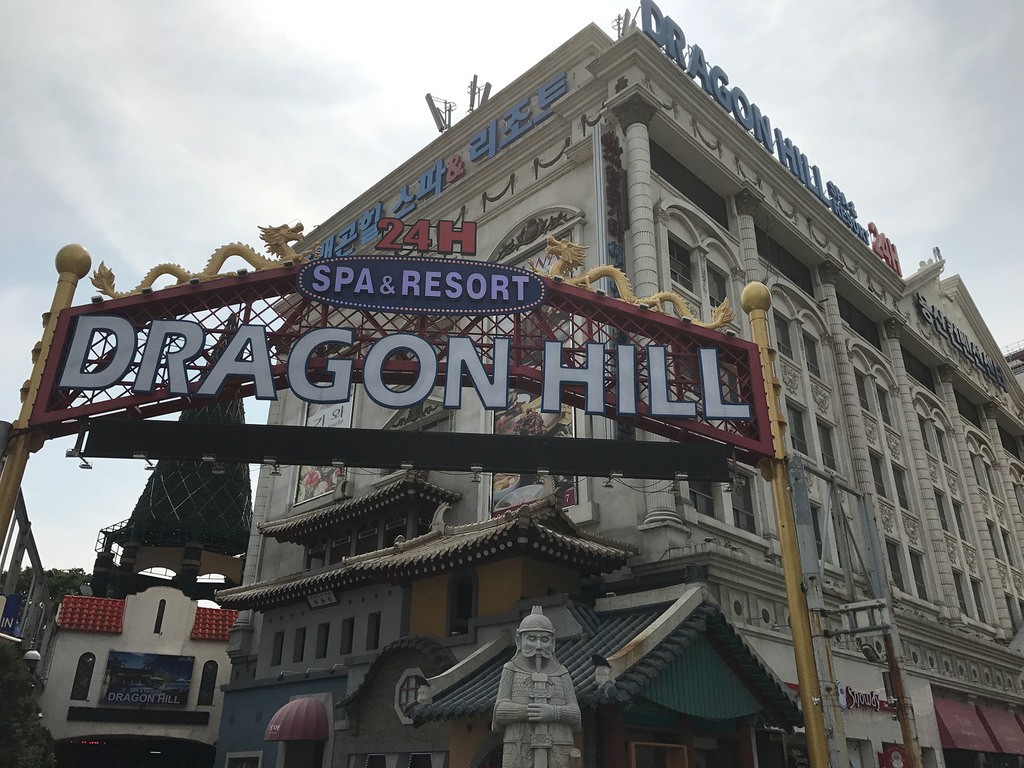
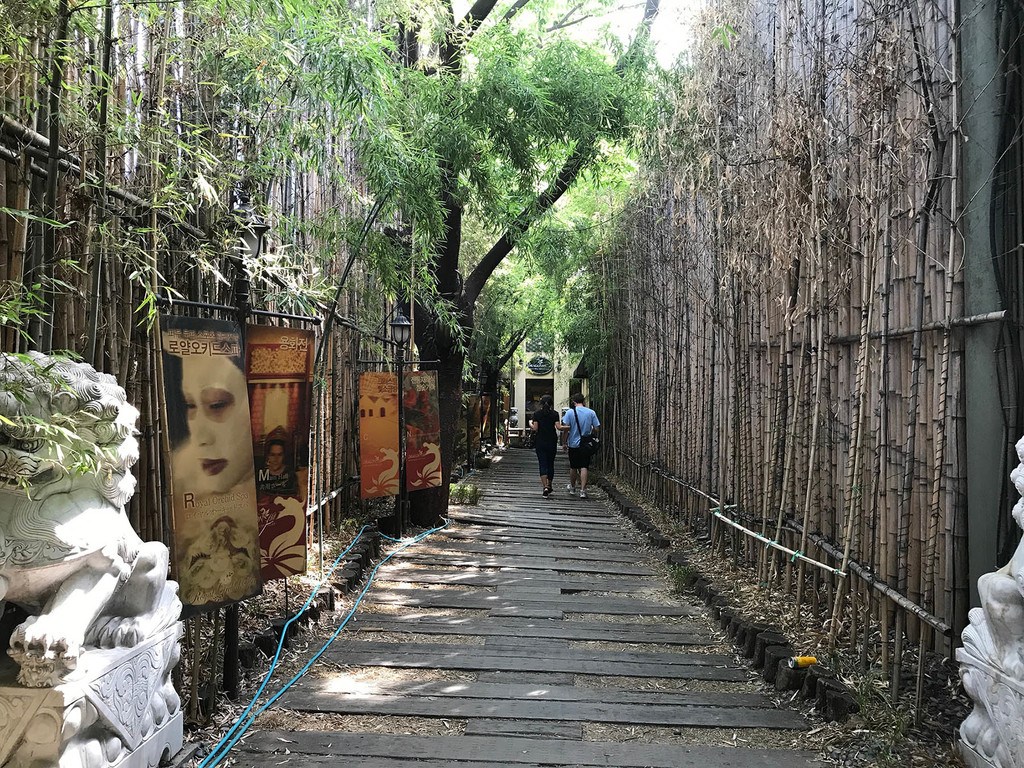
The seven-storey complex – that’s also gender segregated in the ‘nudie’ areas – is an institution, a place in which to escape the city’s chaos and drift into a world of serenity. From hot and cold baths, saunas and salons in the respective ‘no clothes’ areas to salt rooms, quiet areas, a cinema and a restaurant in the unisex zone, there’s no possibility of getting bored.
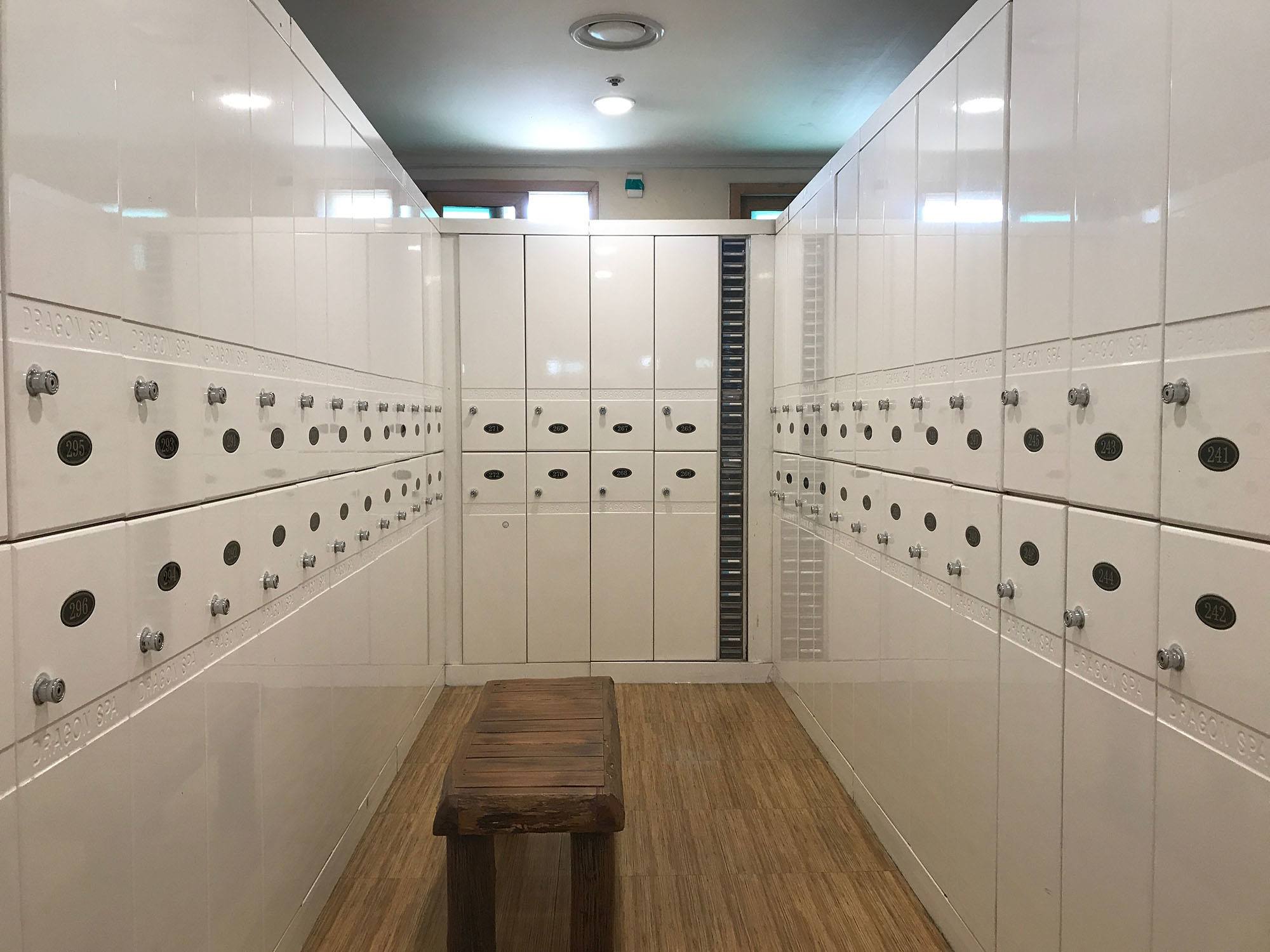
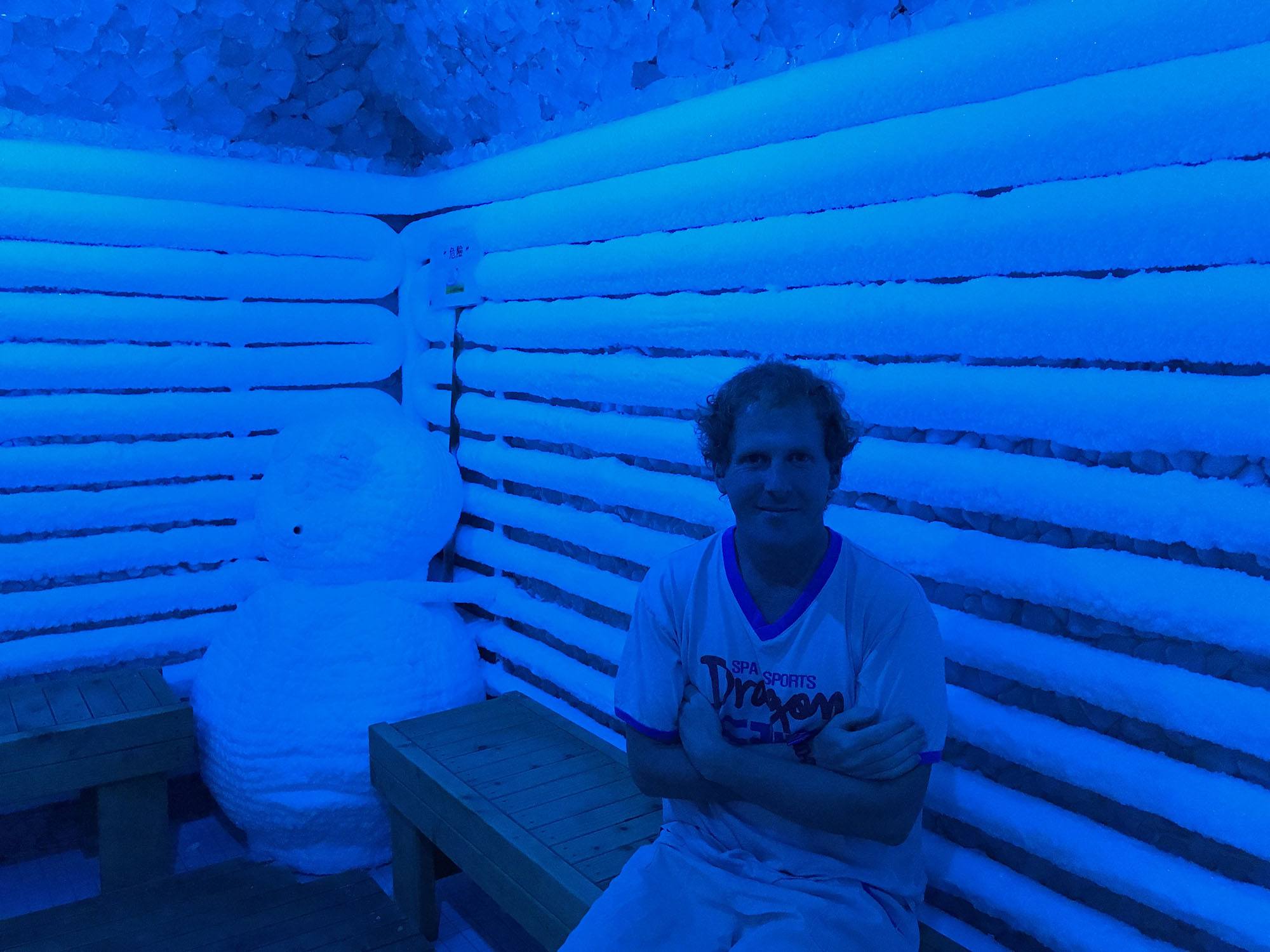
In fact, some people I met found it so addictive, they spent the night – sleeping on the floor in true Korean style, of course.
Gwangjang Market
Based in Jongno-gu, the traditional undercover market is home to 5000 shops; a shopper’s paradise, yes?
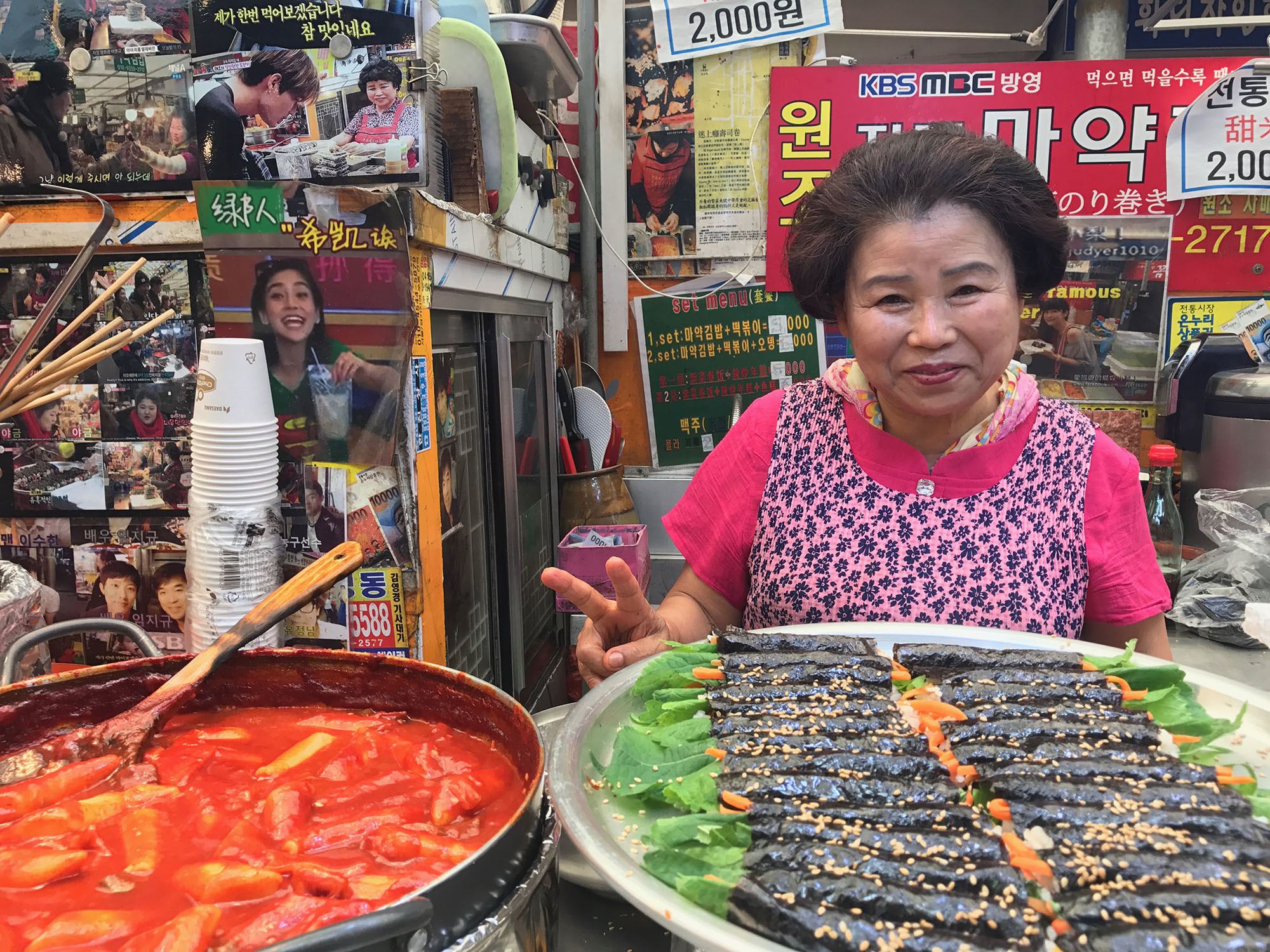
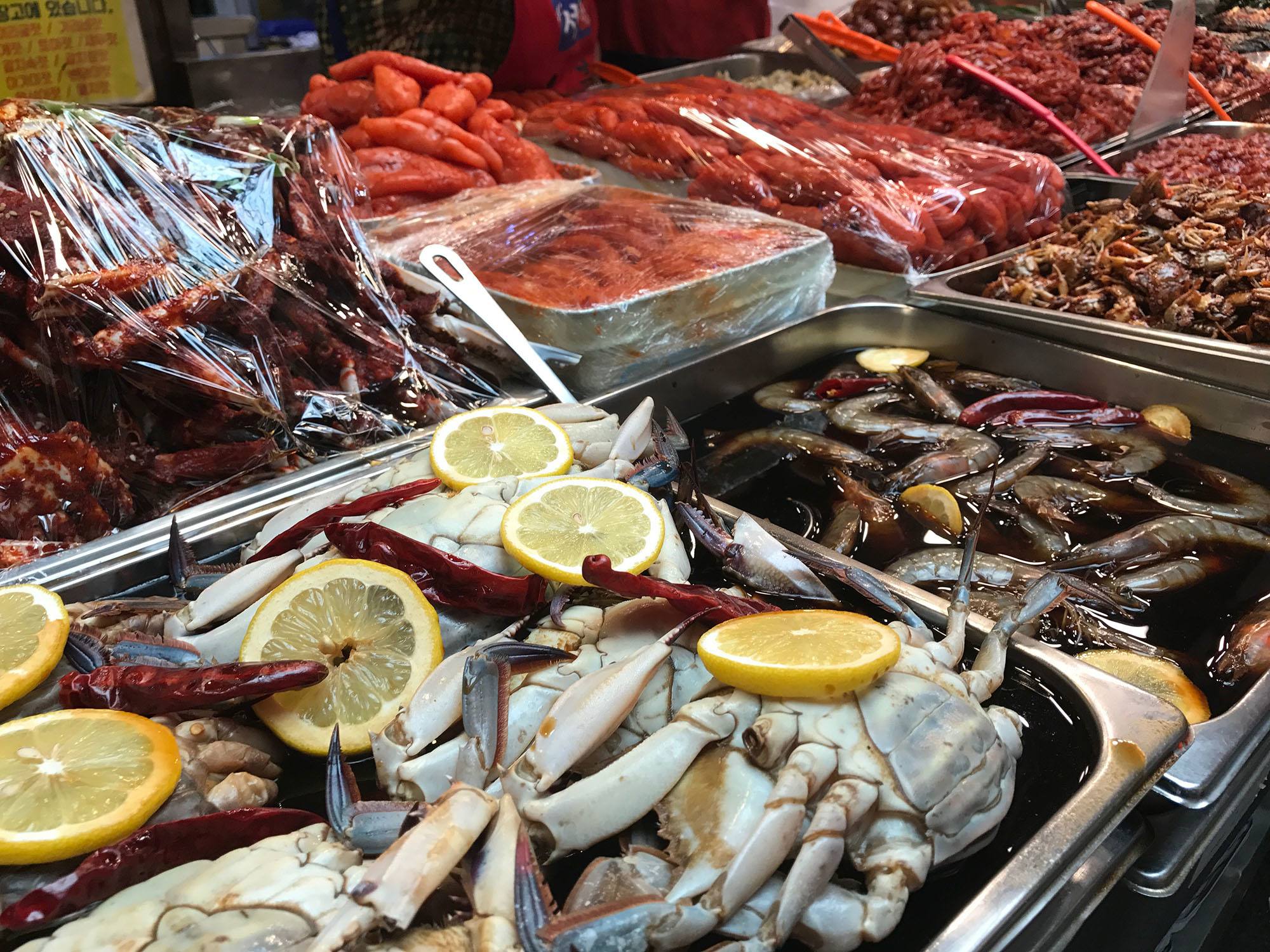
As one of the largest markets in Korea, it plays host to nearly 70,000 visitors each day. Don’t fret: as it covers an enormous surface area, the crowds are manageable, and escaping – although difficult – can be done by dropping into one of the many diverse shops selling a host of items from food (particularly fresh seafood) to textiles, traditional medicine, souvenirs and clothing.
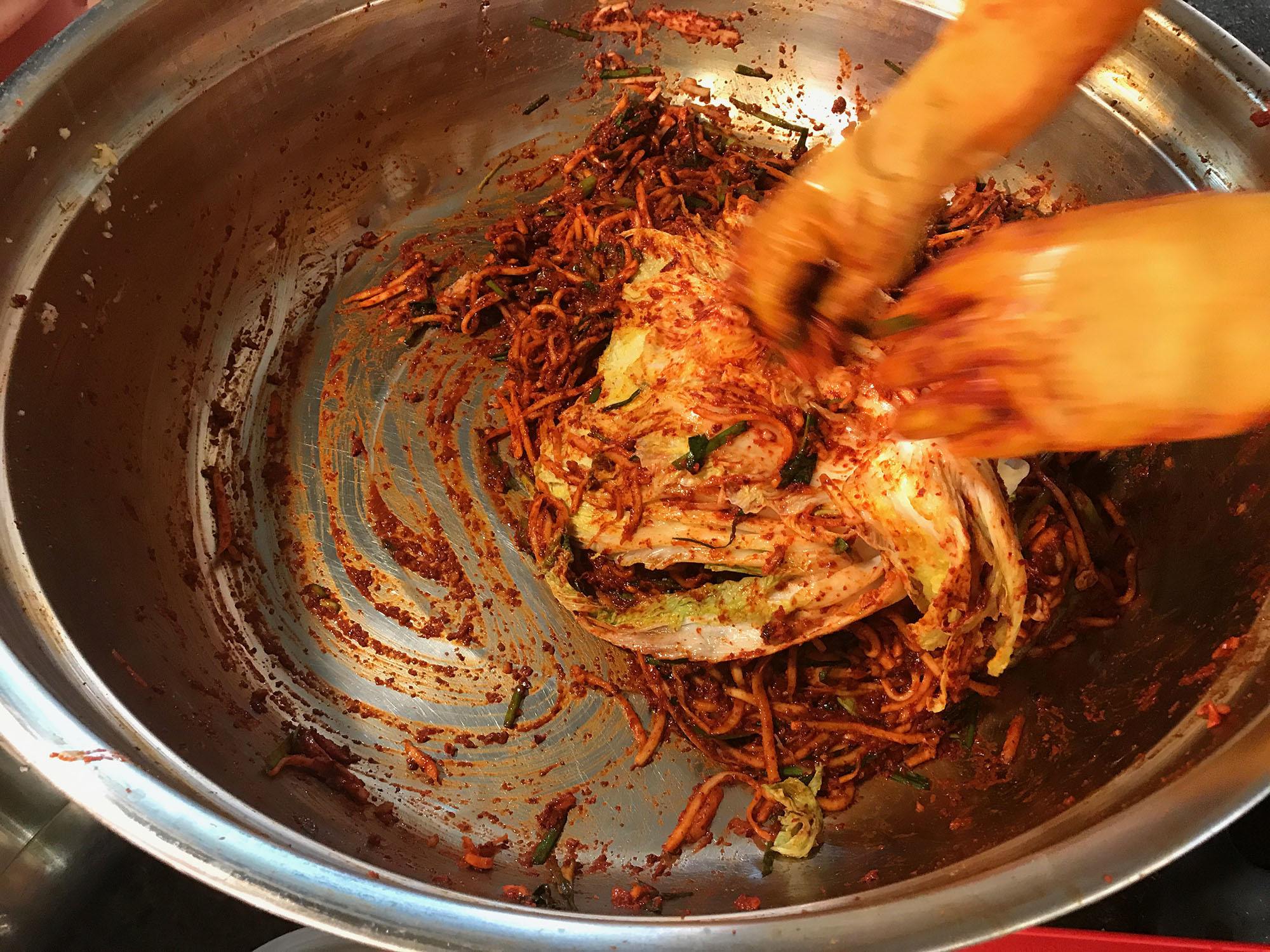
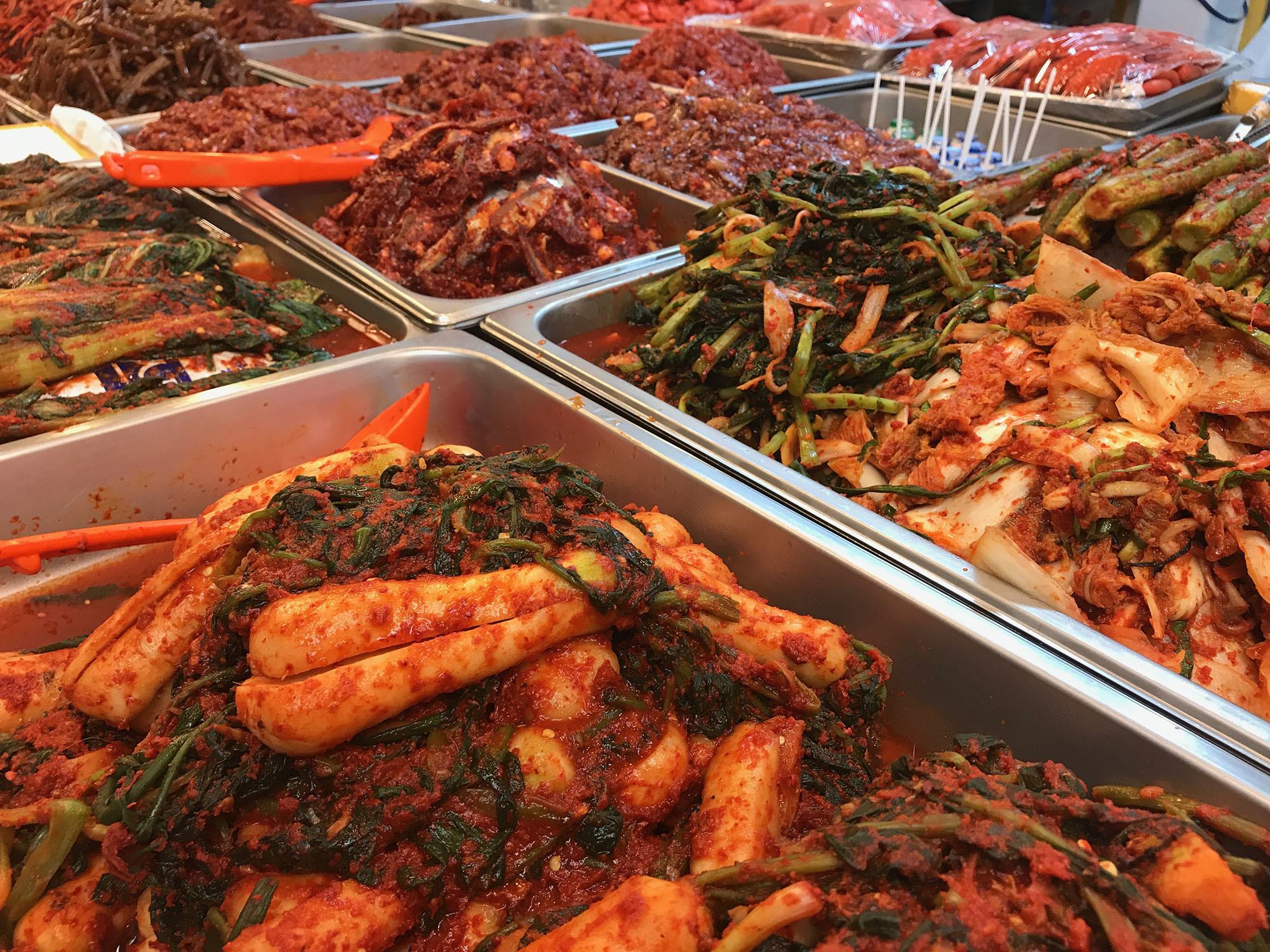
It was here that I tried chicken feet, a common addition to dinner plates across the nation.
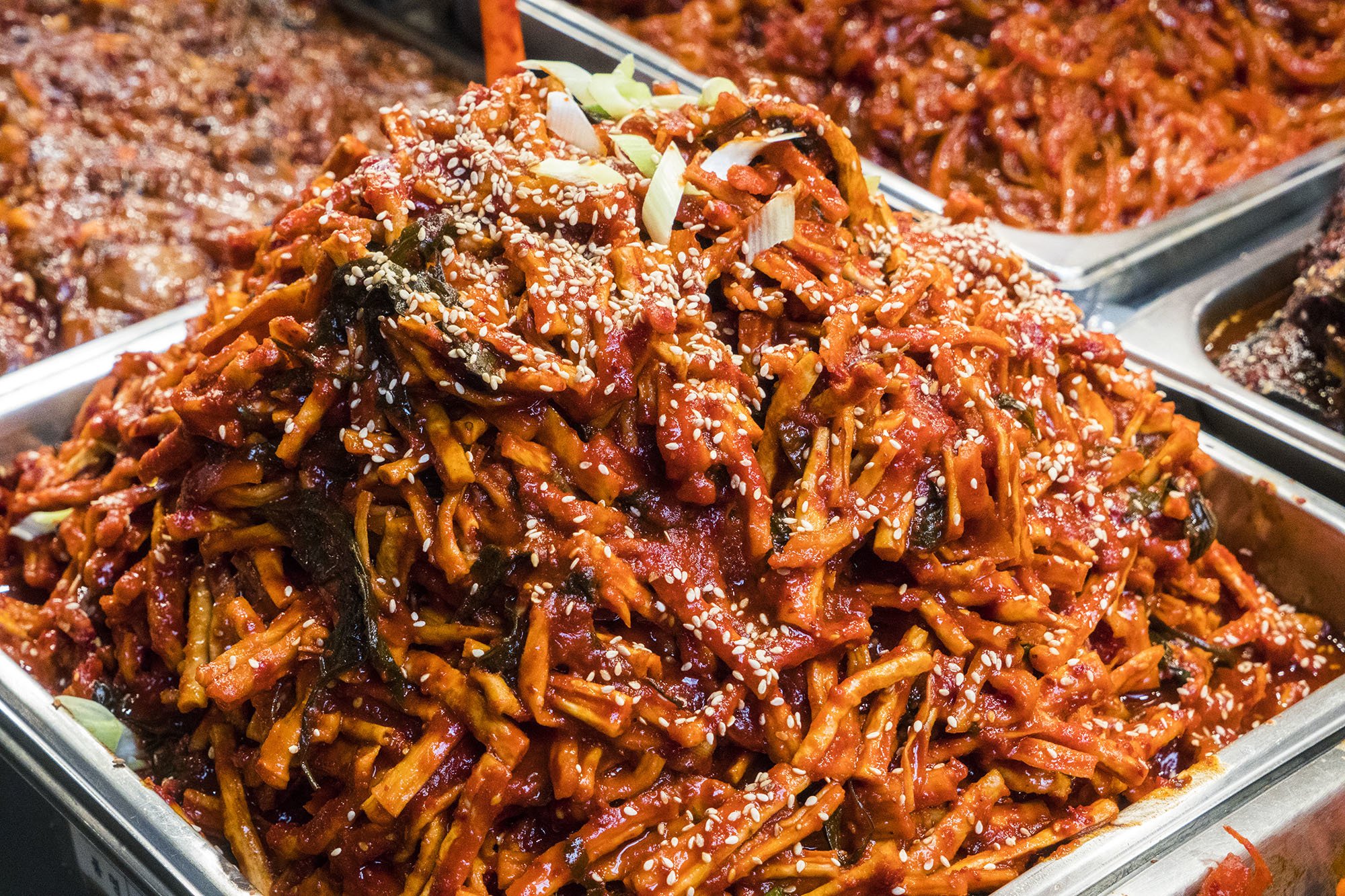
Cheonggyecheon Stream
If it’s more serenity you are after, especially following the clamour of Gwangjang Market, then a walk along this 5.8-kilometre stream is akin to visiting Dragon Hill Spa.
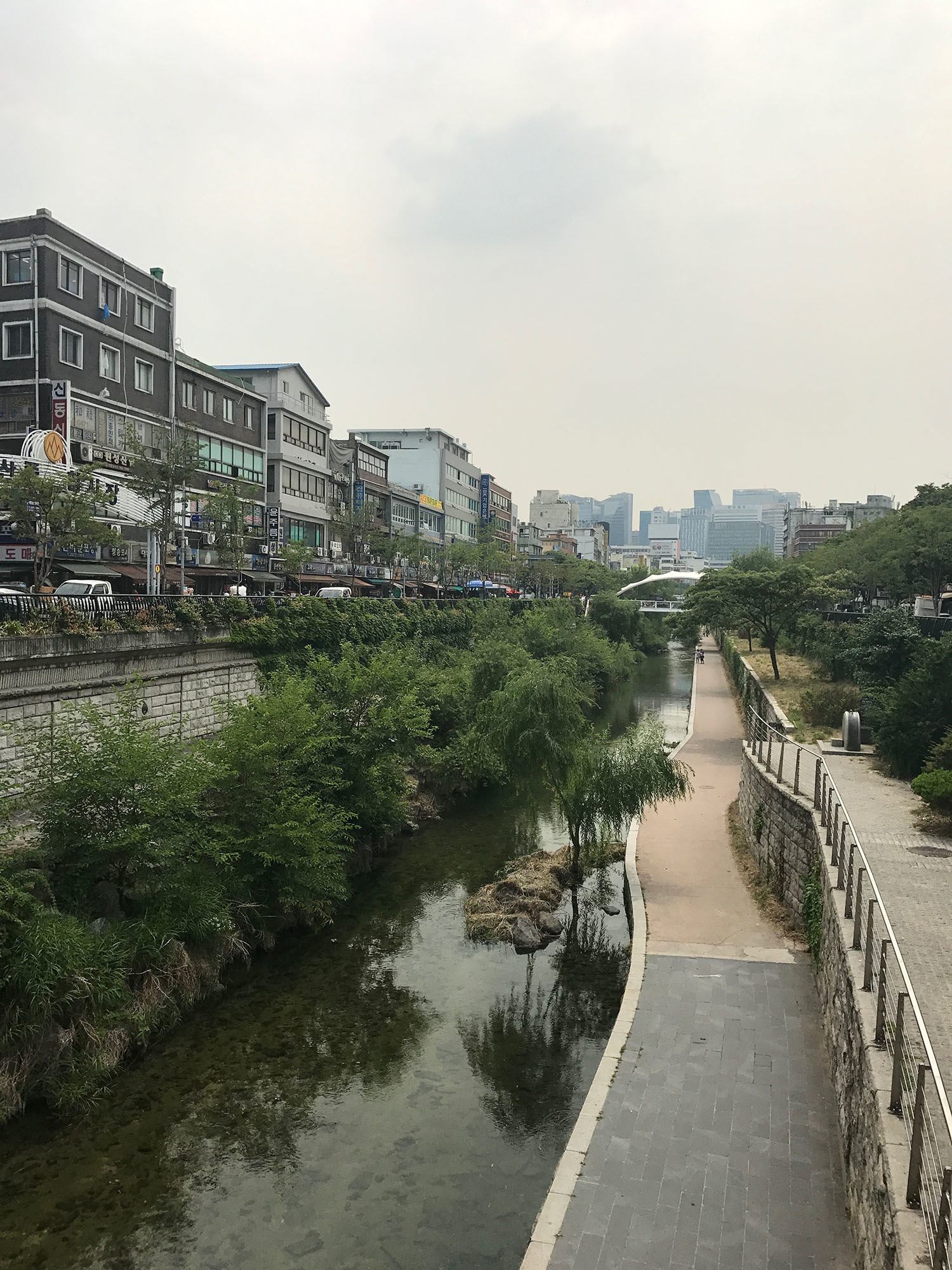
Despite its position beside one of Seoul’s busiest roads, it’s surprisingly quiet thanks to a trench-like location a few metres below street-level. A meander along the ‘banks’ of the stream cleanses the soul, frees the mind and – after passing under several bridges – prepares you adequately for a visit to the intergalactic-like Dongdaemun Design Plaza.
Dongdaemun Design Plaza
An eyesore to some, being imbued by a sense of neo-futurism is guaranteed as you approach – from any angle - the Hadid-Samoo masterpiece. Built to serve as a launch pad for Korea’s creative industry, it embodies design at its greatest.
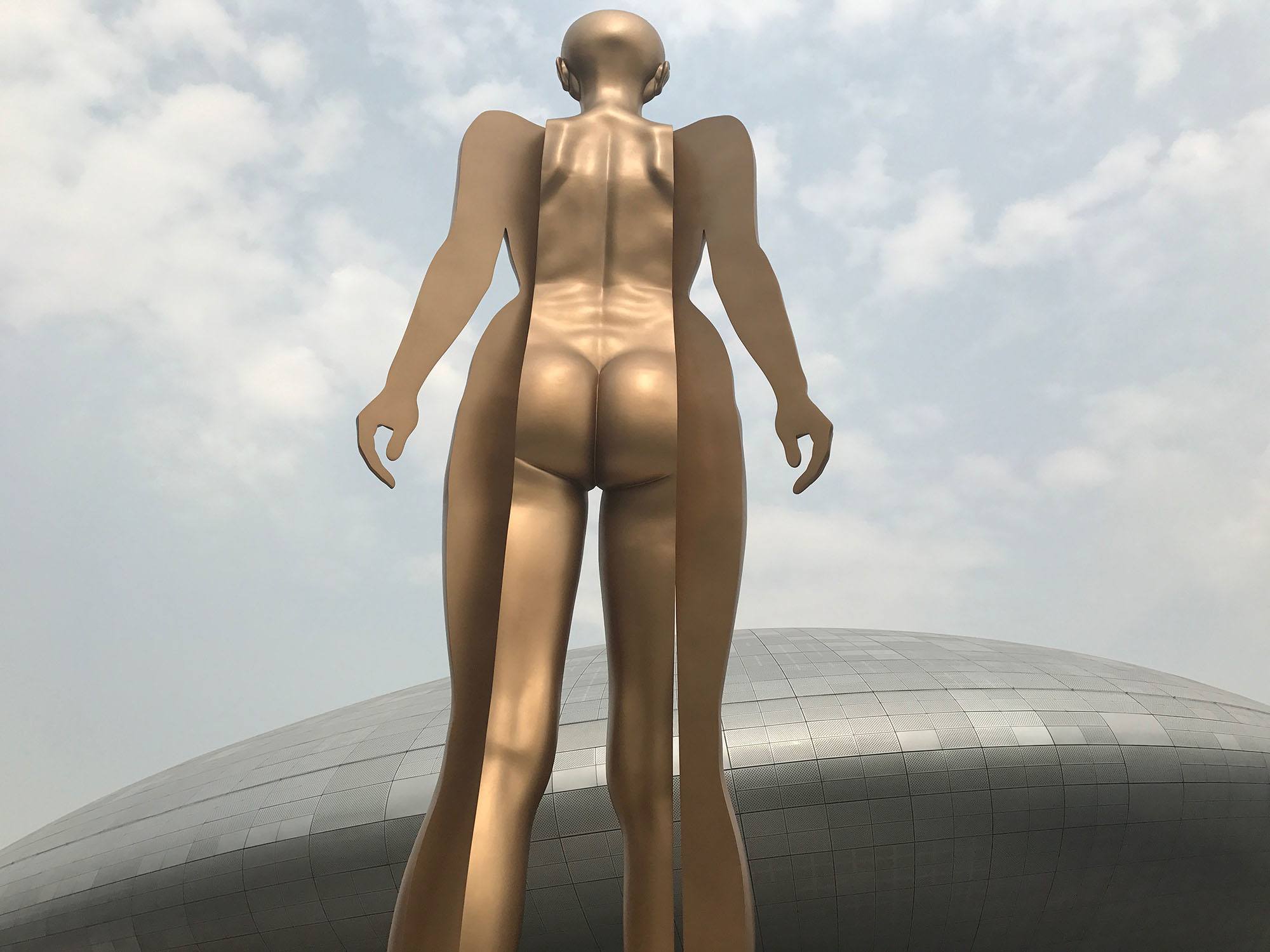
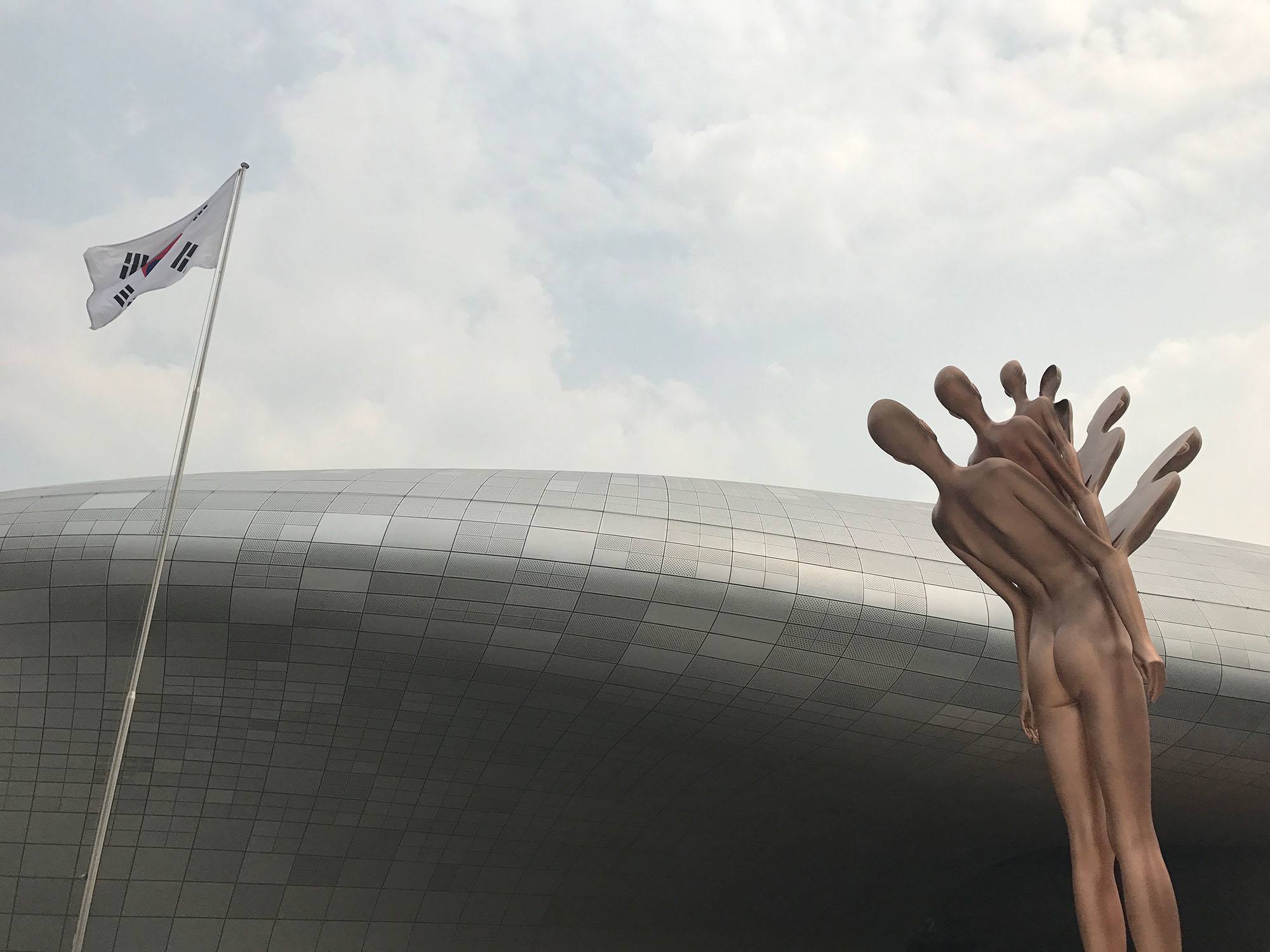
From futuristic retail stores to eclectic exhibition spaces and a park on the roof, there is no single space – externally or internally – that leaves visitors without mouths agape in awe.
I spent hours going from one artistic space to the next, getting lost in a plexus of creative hideouts.
Leeum Samsung Museum of Art
Not as futuristic as Dongdaemun Design Plaza on the outside, the Leeum Samsung Museum of Art comprises two galleries, one of which slings art admirers well ahead of the 21st century. However, step across the foyer to the other half of the modern construction, and it becomes possible to rewind clocks to a distant time in Korean history.
There is no shortfall in eclecticism.
Don’t be surprised – for true aficionados – if you get trapped in an art-warp and lose yourself entirely for a day (or more).
Meetkat Café
There’s no surprise – given the country’s propensity for gearing entertainment to an eccentric population – that, along with other animal cafes, there exists one almost wholly devoted to the African meerkat.
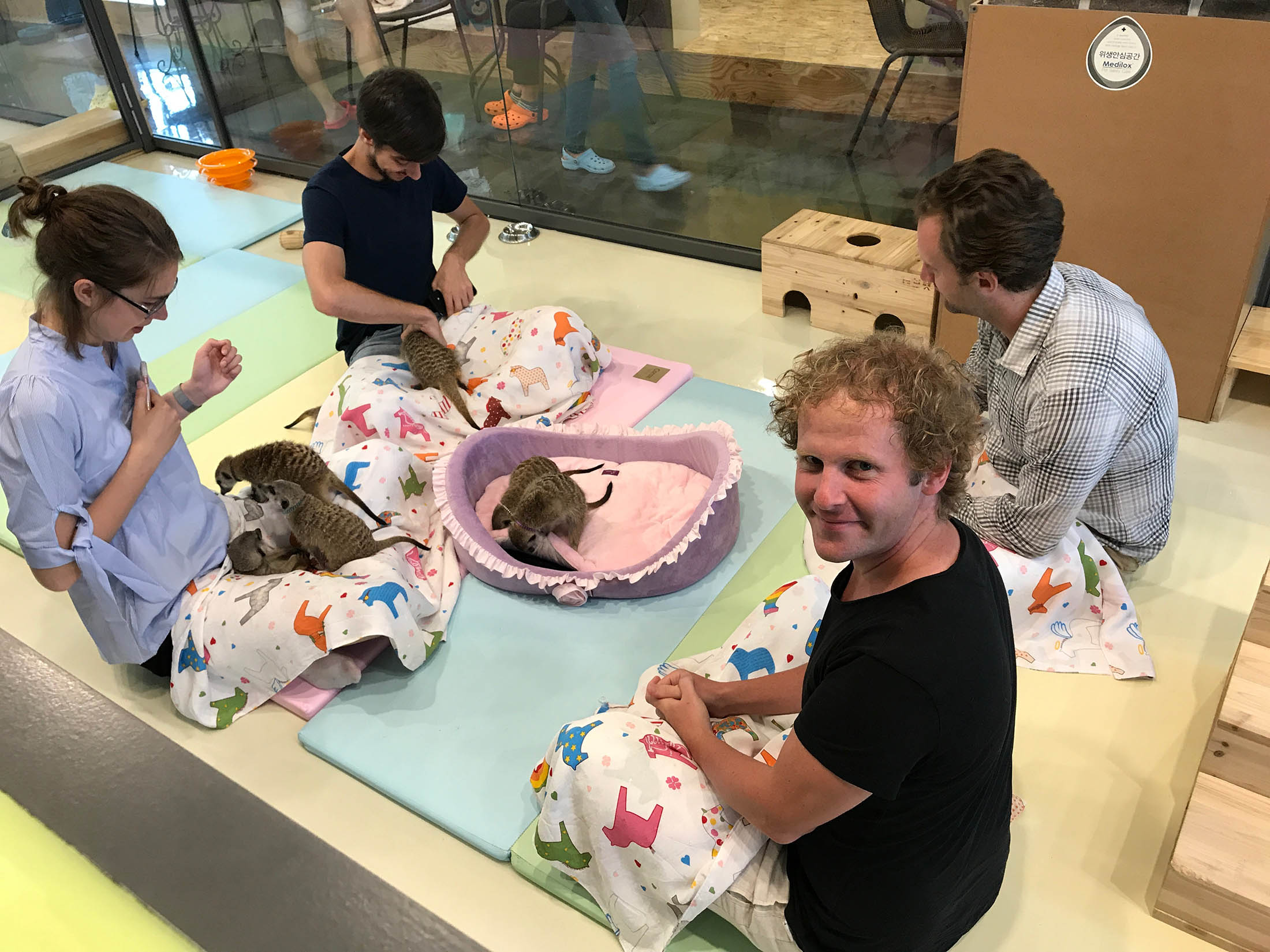
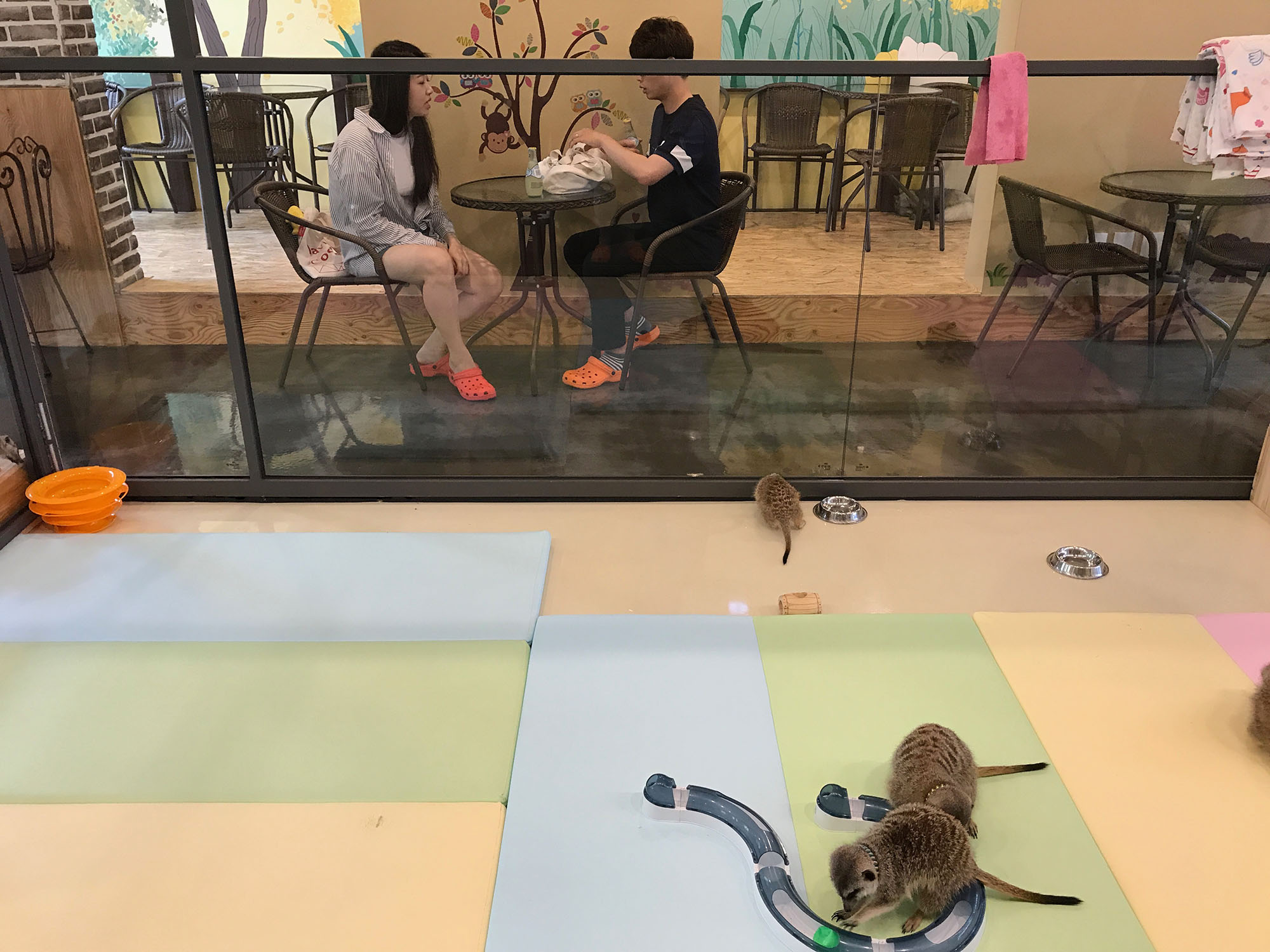
Despite the obvious controversial – and ethical – considerations, stopping by the Hongdae establishment is actually worthwhile. Aside from the opportunity to get up close and personal – for 10 restricted minutes – with the pint-sized animals, all proceeds from the entrance ticket go towards keeping the foraging insectivores happy and healthy, a task assumed by the fanatical staff who run the cafe.
See this article for full details regarding a visit to the famous café.
Namsan Seoul Tower
Located on Namsan Mountain, the observation tower is the second highest point in Seoul.
Half the fun in visiting the tower is the cable car ride up the side of Mount Namsan. Granted, you can walk, but obtaining breathtaking broad-sweeping views of Seoul while being hauled up the mountain in an almost-flying metal box - squashed inside like a sardine - is far superior.
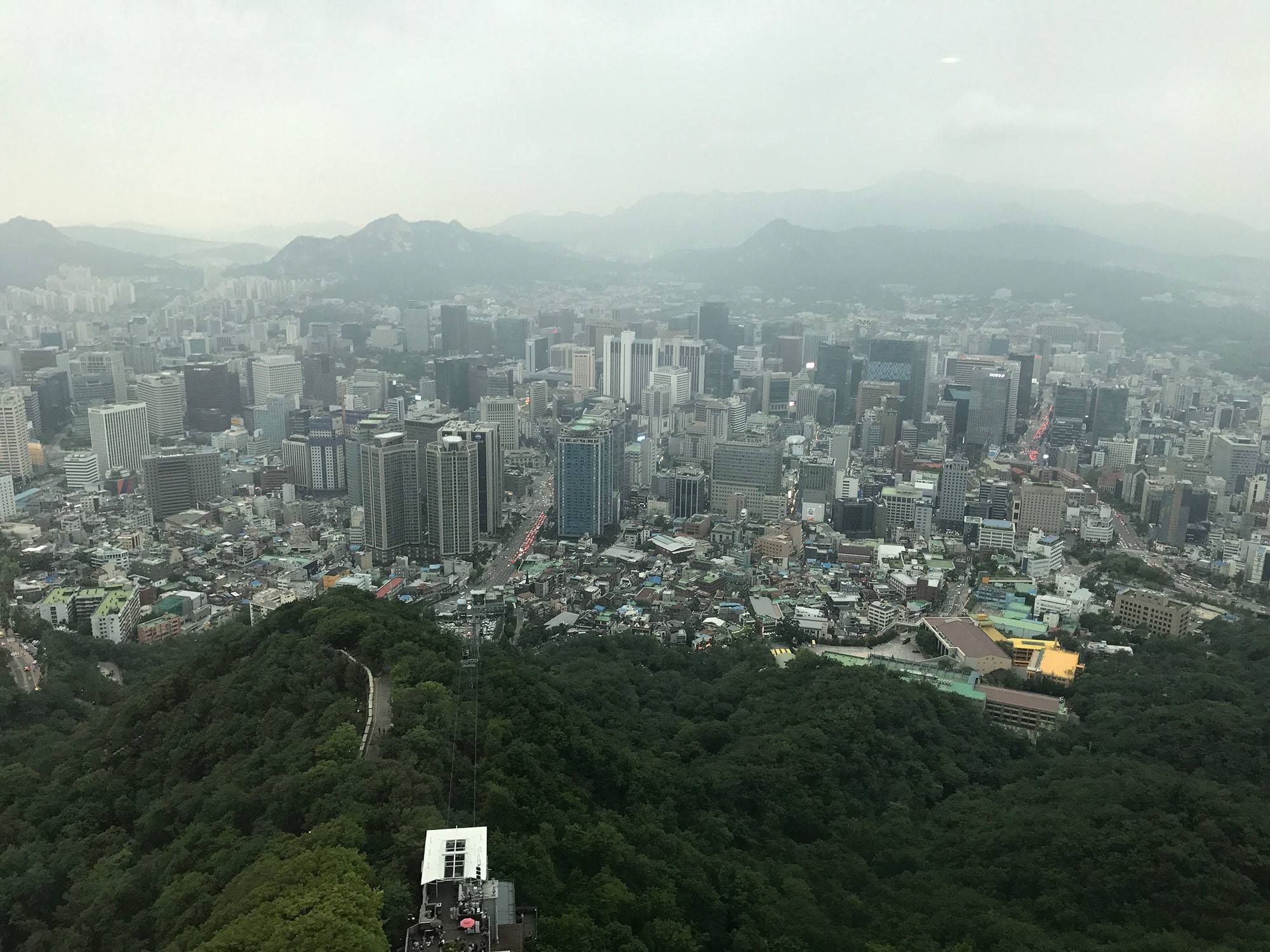
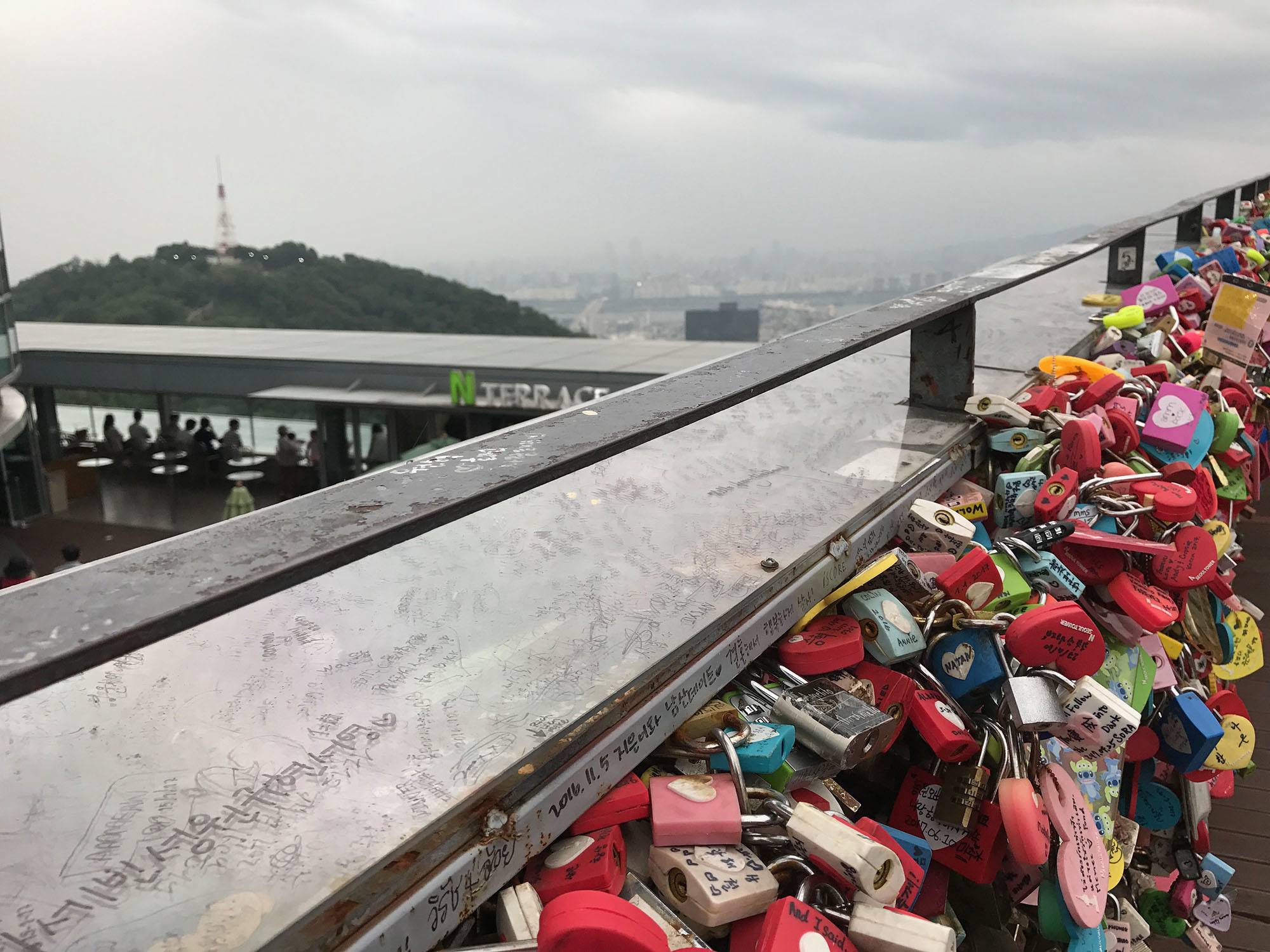
The fun does not stop there.
Once at the top, aside from the exquisite views – best seen at dusk – from the observatory on level three, there are numerous other ways to be entertained: dining on delicious fare at one of the many restaurants; throwing coins into the wishing well on level two; spending up in the shops scattered throughout (including the sweet store on the observatory level); and hanging a named padlock on the Tower fence to symbolise your undying love for your precious other are but a few.
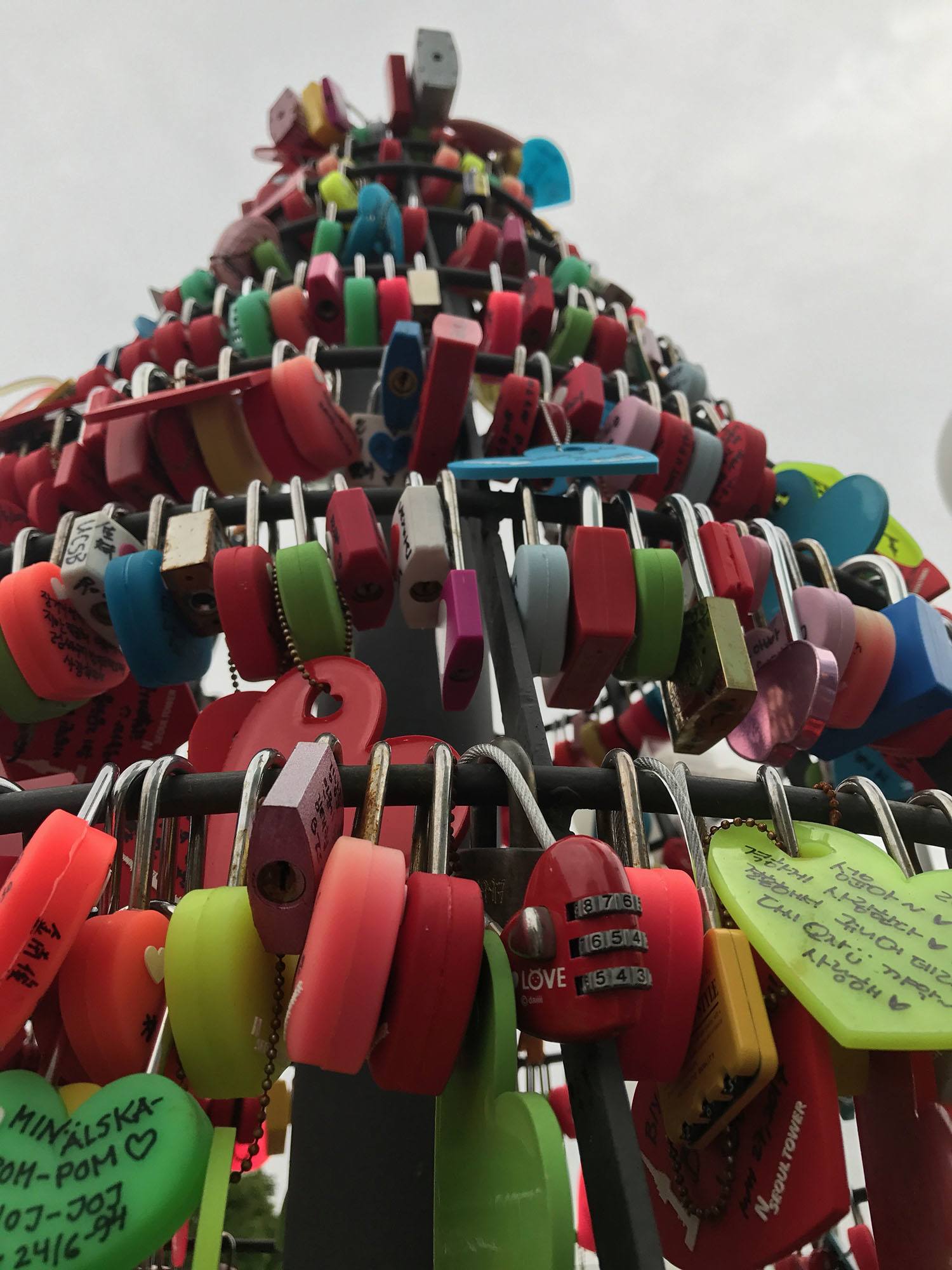
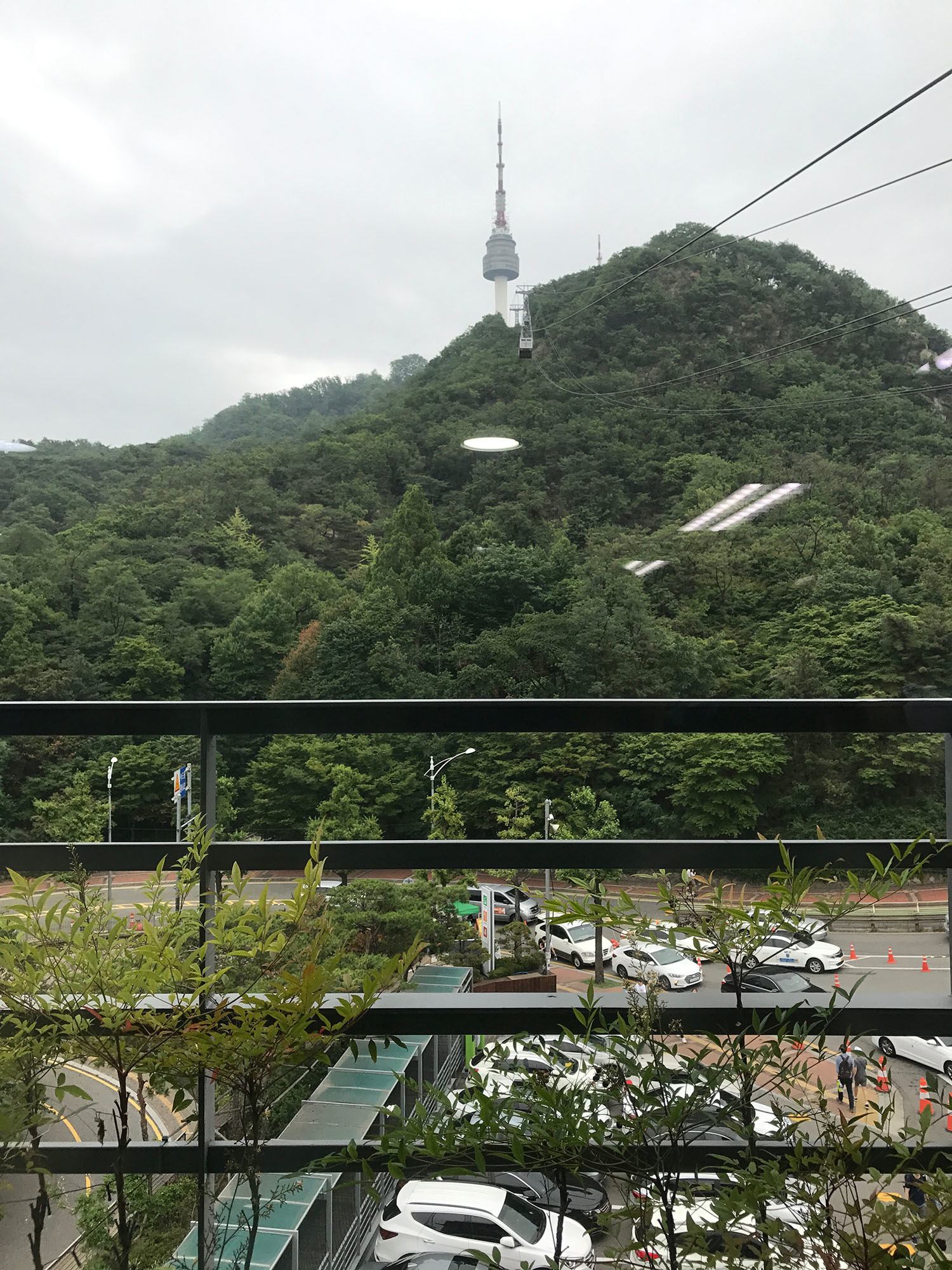
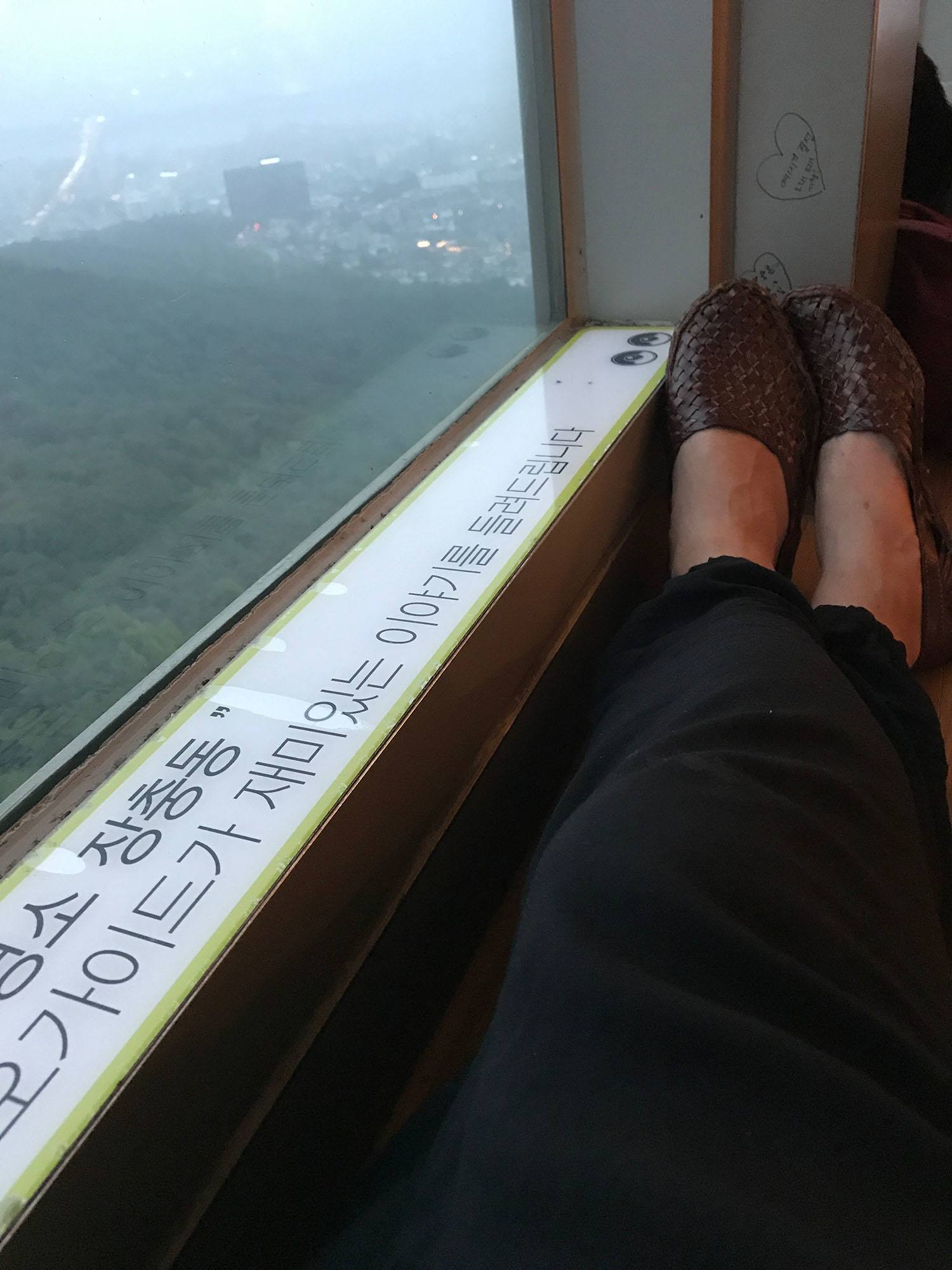
The demilitarized zone (DMZ) and the Joint Security Area (JSA)
For an opportunity to get up close and personal with the Republic of Korea’s infamous northern counterpart, book a tour (which is obligatory) to the Demilitarized Zone and the Joint Security Area. Several operators run half and full day tours, most of which can be booked through your accommodation or directly with a city-based travel agency. Hurry, as things are deteriorating in North Korea and, based on the current media output, a visit may soon be impossible.
I was personally unable to go, thanks to a bout of food poisoning the night before. However, travellers I met in Seoul who’d visited both zones all highly recommended the excursion.
For a guided experience with a chance to visit the Red Suspension Bridge, check out the Best DMZ Tour Korea from Seoul. This tour offers an insightful visit to the DMZ, including a knowledgeable guide to help you understand the history and significance of this unique location.
➡ Click here to book your tour
Recommended Length of Stay in Seoul
Four to five days.
Spend the first day acclimatising and finding your K-legs, followed by three to four solid days of exploration. There are countless options in terms of sights, activities and experiences, so much so you'll be hard pressed to achieve it all in this timeframe.
Accommodation - Staying in Seoul
As a well-visited mega metropolis, there’s an unending list of accommodation options spread throughout the city. Choosing the place that best suits your needs, subsequently, can sometimes result in decision fatigue.
For those following a two week Korea itinerary, choosing accommodation close to major attractions can save precious time and make exploring the city more convenient.
I've done some of the research and come up with a few great options within each price range. Here they are:
Budget: Seoul Guesthouse
I chose to stay at Seoul Guesthouse and was pleased with the location, quality, and price. Just steps from the subway, it’s a great spot for solo travellers looking to explore Seoul.
The terrace was a nice bonus, and the staff were super friendly and helpful, making me feel right at home. While sharing one bathroom was occasionally limiting, it actually added to the social vibe. I’d recommend it for anyone looking for a convenient and welcoming stay in Hongdae.
Mid-Range: Hongdae Style Guesthouse
For a comfortable stay in Seoul without breaking the bank, Hongdae Style Guesthouse hits all the marks. Just steps away from Hongik University Subway Station, it’s an ideal base for exploring Seoul, especially if you're traveling solo. With private bathrooms, a communal kitchen, and plenty of restaurants nearby, it’s the perfect spot to unwind after a day out—and the location truly can’t be beat!
➡ Click here to book Hongdae Style Guesthouse
High-End: Signiel Seoul
If you’re ready to splurge on luxury, Signiel Seoul is an experience in itself. Located high up in the Lotte World Tower, every room offers sweeping views of Seoul’s skyline, and the amenities are just as impressive — think a Michelin-starred Korean restaurant, a champagne bar, and an indoor pool.
With its seamless access to Jamsil Station and top-tier service, it’s the perfect spot for travellers who want to indulge in Seoul’s high life.
➡ Click here to book Signiel Seoul
Food - Eating in Seoul
Just like accommodation, there are so many food options throughout the city it's hard to know where to start. In fact, it's more common in Seoul to eat out than to cook at home, so it makes sense there are streets and avenues lined with restaurants.
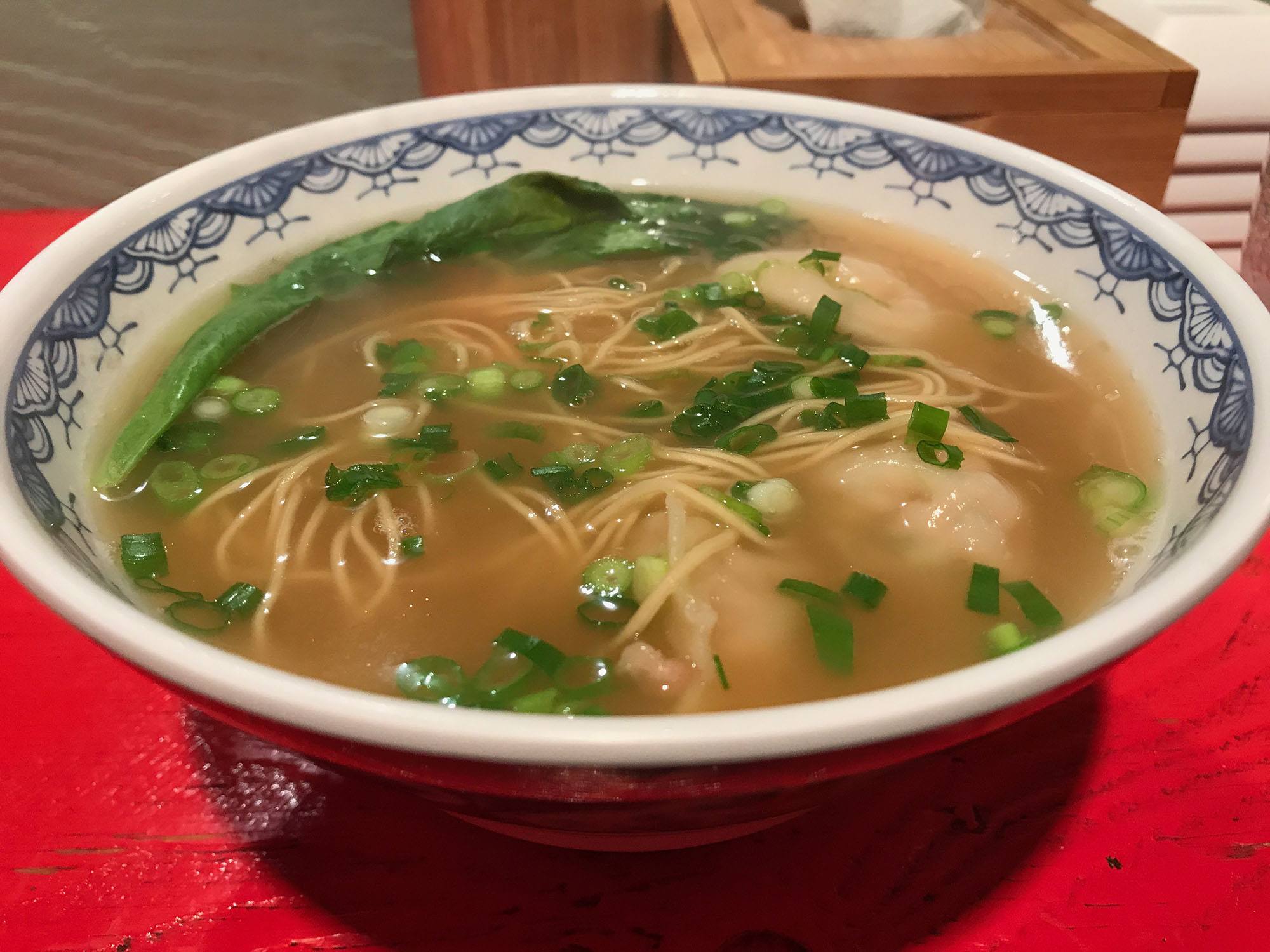
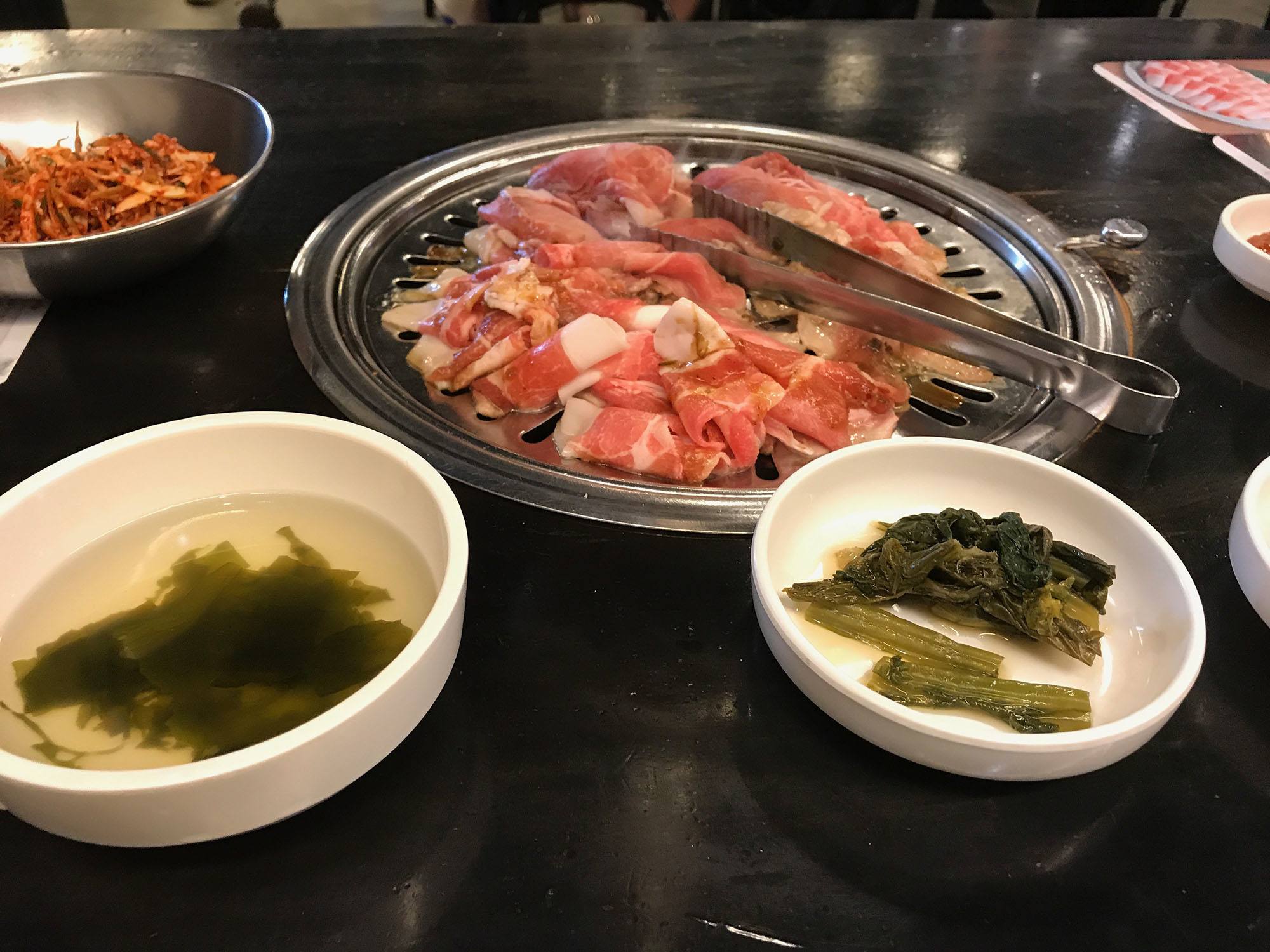
If I was at or near the hostel, then I ate close-by, in and around Hongdae. If I was out and about exploring the city, I found a local spot and experimented with new options.
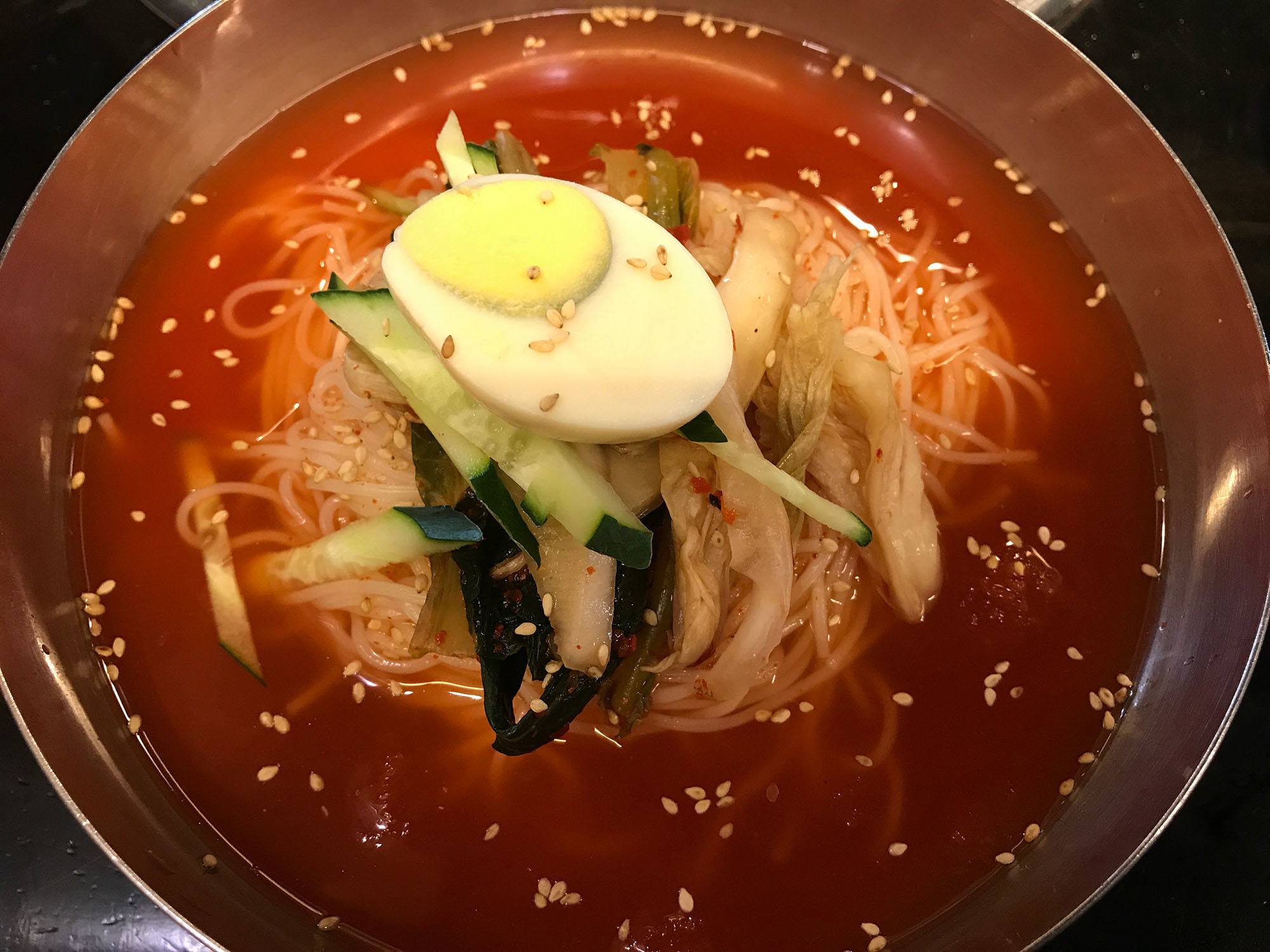
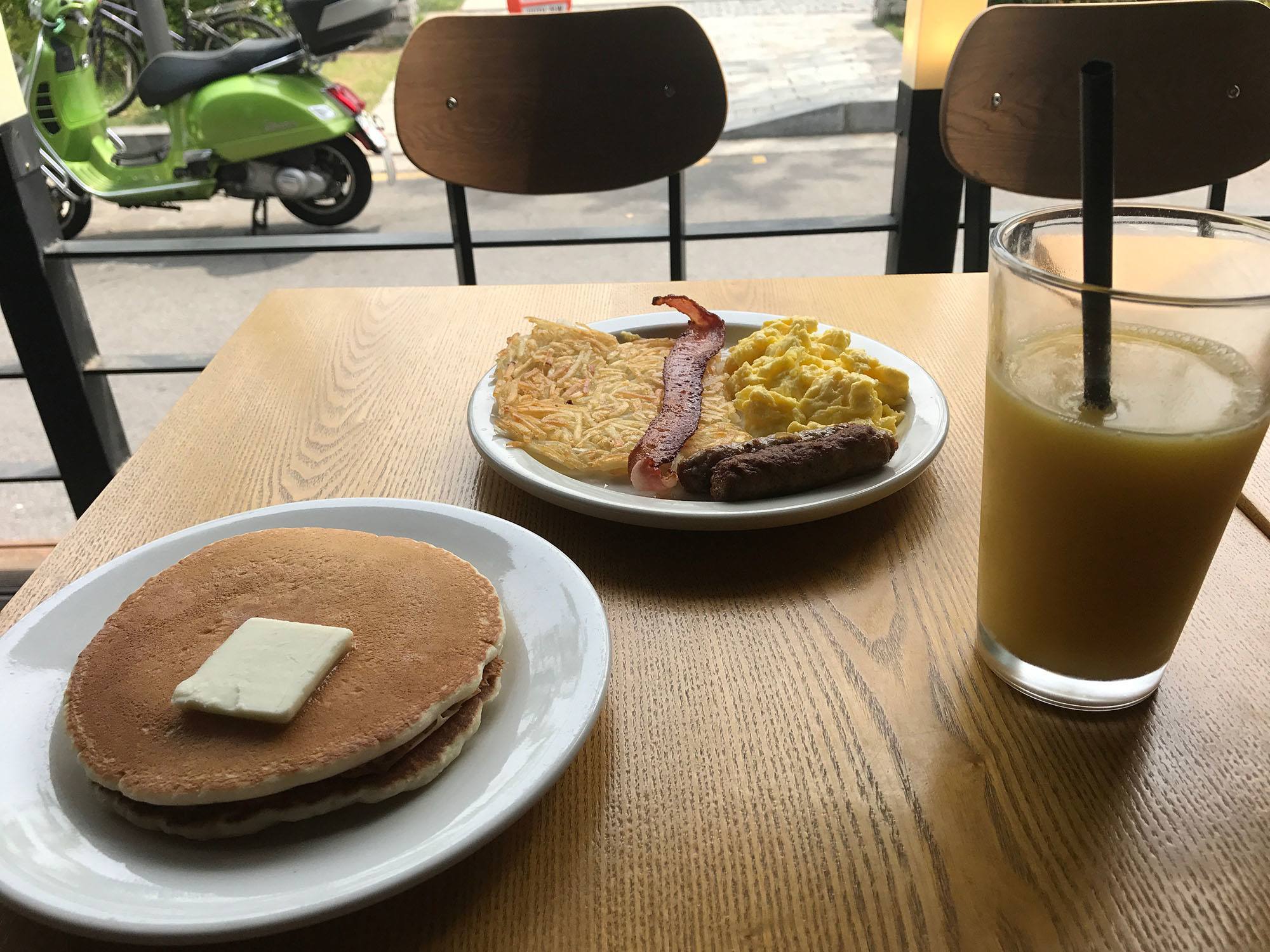
From my personal experience (aside from one episode of food poisoning), you'll be hard pressed to find poor quality food, so I recommend tapping into your sense of adventure, following your nose and choosing a spot that speaks to you. Otherwise, take a look at the recommendations in the following article:
Here's a visual sample of some of the food I tried while in Seoul, to get you going.
Transportation - Getting around Seoul
Although there are multiple ways of navigating the city, I've included the most popular here.
By Bicycle and On Foot
As one of the most densely populated cities in the world, with a labyrinth of windy roads that don't seem to follow a particular system of organisation, getting around on foot or with a bicycle can be challenging. Mountains and skyscrapers interrupt pathways, and locals won't always know how to direct you to your destination.
My best advice is to familiarise yourself with the city's major landmarks and subway stations. Use Google Maps if it works. Otherwise, follow the river. Most smaller waterways will eventually flow back into the Han, which courses its way through the city. Identify the major landmarks close to the river, and you can't go wrong.
By Subway
It's incredibly extensive and just as busy as it is large. Personally, it was the easiest and most efficient means of exploring the city.
- There are 18 lines, all colour coded (however some colours are very similar and distinguishing between the different lines can present obvious challenges)
- It covers most of the city, so getting to almost any desired destination is possible by using it
- Transferring between lines requires lengthy walks which can consume a fair chunk of time
- Some exits do not have escalators so be prepared to sling your luggage - whatever it may be - over your shoulder and hike it up many stairs
- Phone coverage is great, even underground
- Names are written in Korean and English
- The names of the previous and next station are indicated on the platform in the direction of travel
- Fares are paid using the T-Money card, and are based on the distance travelled
- It is not operational 24 hours a day, so consider this when planning your day's activities
By Bus
There is a very well-organised and efficient bus system throughout the city. They are divided in colour categories: yellow, green, blue and red-and-green.
- Yellow: they service the tourist-heavy areas
- Green: these buses service local areas, such as city neighbourhoods
- Blue: they traverse the city
- Red-and-green: these ones travel to other cities, aka intercity buses.
- A fare will cost an adult traveller with a T-Money card ₩1,200 (alternatively ₩1,300 with cash).
Transportation - Getting to Seoul
As the starting point for most travellers to South Korea, flights will be the most likely mode of arrival. There are a host of airlines that service South Korea, so please see the information at the end of this article about getting to South Korea.
In terms of getting to and from Seoul in relation to other parts of the country, please see each respective city below for details.
Save this itinerary for future reference!
SOKCHO (속초) (Days 5-6)
In contrast to the hustle and bustle of Seoul, a 2.5-hour bus journey to South Korea’s east coast transports nature enthusiasts to Sokcho, a coastal city that’s also a stepping stone to Korean paradise: Seoraksan National Park.
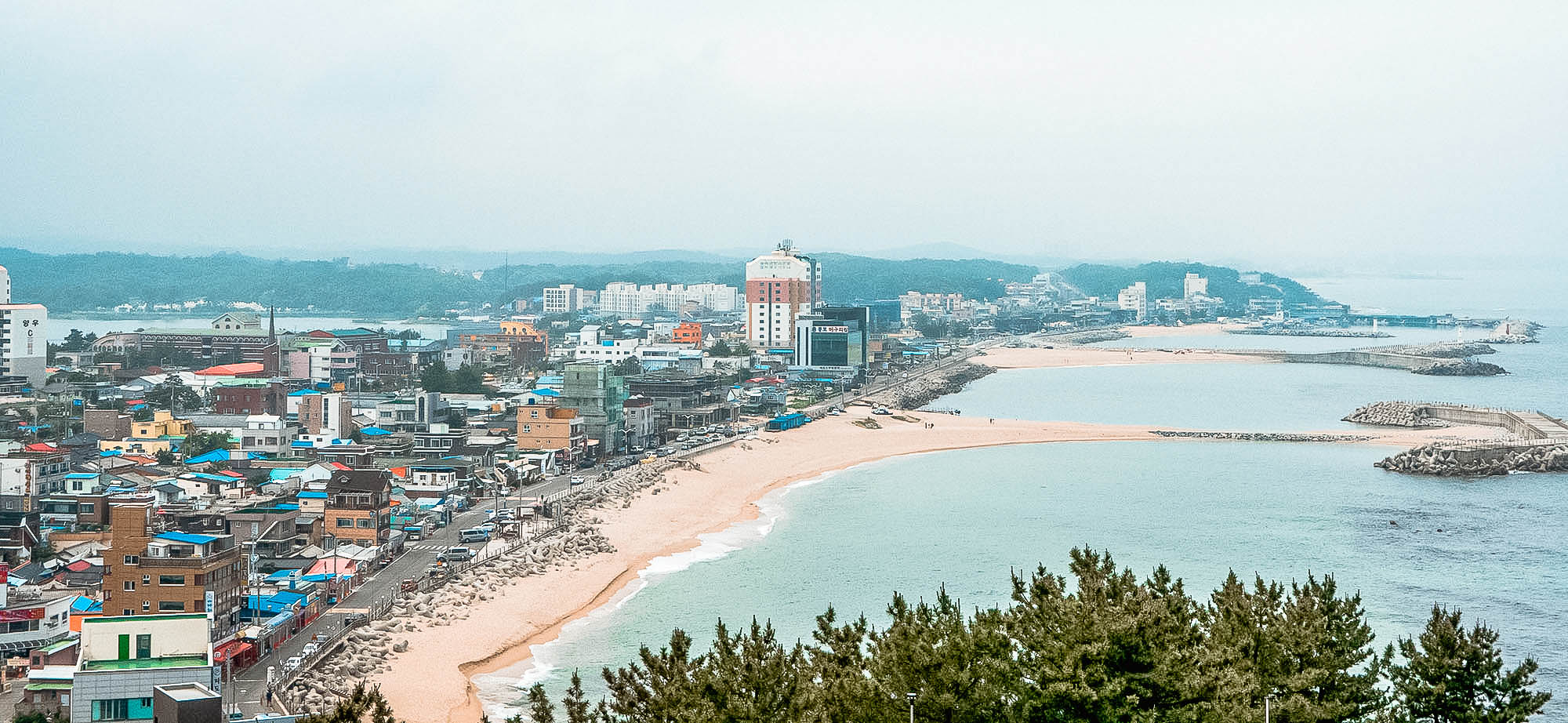
A feature on the peninsula, it is filled with all essential national park requisites: peculiarly shaped mountains; native fauna; and ancient temples dating to the Shilla era.
There’s no wonder it was recently dubbed a Biosphere Protection site by UNESCO - it’s a Korean nirvana, of sorts.
Things to Do and Experience in Sokcho During Your 2-Week South Korea Itinerary
Seoraksan National Park
For most east coast-bound travellers, Sokcho is simply a stepping stone to Seoraksan National Park. The biosphere reserve boasts some of the country’s most jaw-dropping sights, and abounds in nature appreciation experiences.
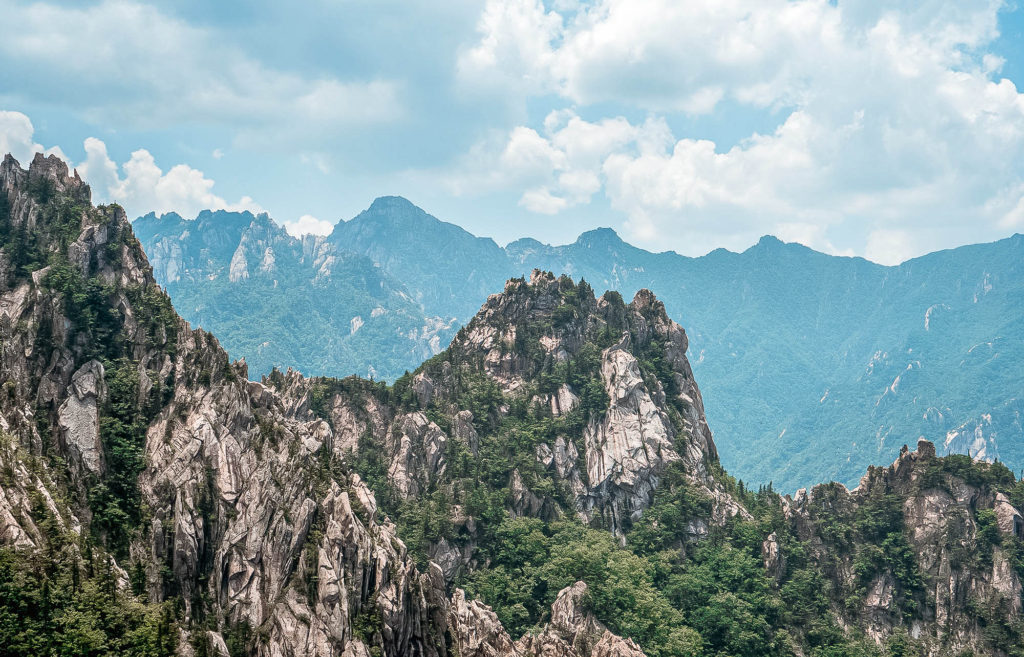
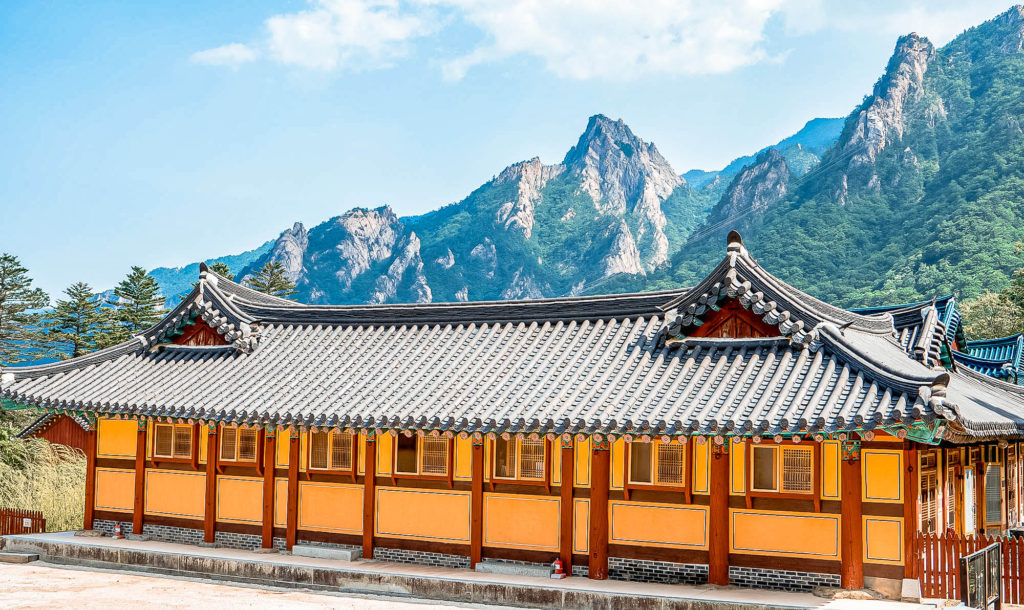
Mountaineers at heart can rise early and leg it to the top of Korea’s third highest peak, Daecheongbong, on top of Mount Seoroksan. Less energetic visitors are not left without choice: from waterfalls to swinging cable cars and ancient temples, activities – and photographic opportunities - abound.
If you're looking for an organised way to experience the best of the park, consider the Easy Trek PKG 1, Seoraksan National Park, Dual Routes in a Day. This guided trek lets you explore two distinct routes in a single day, offering an immersive and well-paced experience of Seoraksan’s stunning natural beauty.
➡ Click here to book your tour
See this article for further details regarding things to do and see in Sokcho as well as transport options.
Recommended Length of Stay in Sokcho
Two to three days
Part of the first day will be spent finding your feet in Sokcho, following arrival from your previous location.
See the local sights then, on day two, head to Seoroksan National Park for immersion in nature.
On the third day, either return to the park to experience the walks you missed on day two, see some other Sokcho attractions or visit the demilitarized zone and the Goseong Unification Observatory if you can arrange transport.
Accommodation - Staying in Sokcho
With a population of only 84,000, Sokcho is classified as a 'sleepy city'. There are accommodation options, but they are fewer than the likes of Seoul.
Budget: The House Hostel
I stayed at The House Hostel and was genuinely impressed by the quality, the warm and welcoming staff, and the tasteful design that made it feel like a home away from home. Its location is idyllic, with easy access to Sokcho’s main attractions, making it an ideal base for exploring the area.
I’d highly recommend it to anyone visiting Sokcho — you won’t be disappointed.
Mid-Range: Sea Cruise Hotel
For a comfortable and convenient stay in Sokcho, Sea Cruise Hotel is a solid mid-range choice. Located close to key attractions like Sokcho Expo Park and Seokbong Ceramic Museum, it offers spacious rooms with city views, free WiFi, and a buffet breakfast to start your day right. With a 24-hour front desk, friendly concierge, and free parking, Sea Cruise Hotel covers all the essentials for a smooth stay, making it easy to explore Sokcho without breaking the bank.
High-End: Homm Marina Sokcho
For a touch of luxury in Sokcho, Homm Marina Sokcho offers a high-end experience with the Banyan Tree brand's signature touch. Located just a short walk from Sokcho Beach, the hotel has beautiful rooms, some with sea views, plus a fitness center and free WiFi.
While you’ll have to pay extra for pool access and the breakfast could be better, the rooms are spacious and the staff is attentive, making it a solid option if you're looking for an upscale stay. Just be mindful that the value for money might not be ideal for all travellers.
Food - Eating in Sokcho
The food journey - and adventurism - continues in Sokcho. Fish and seafood are the buzzwords, thanks largely to the city's location: right on the sea. From fresh fish markets to seaside stalls and restaurants, there are plentiful options and flavours to titillate all variants of tastebud.
I was recommended a host of places at which to eat by the exuberant owner-cum-manager of The House Hostel. He kindly identified their respective locations on a paper map and recommended the 'dish of the house' for each place.
Here are a few places to try:
- Central Market aka Sokcho Tourist and Fishery Market (open 9am - 9pm)
- Large Market by the Northern Harbour (ask at your accommodation for directions)
- 88 Saengseon Gui
- Abai Village
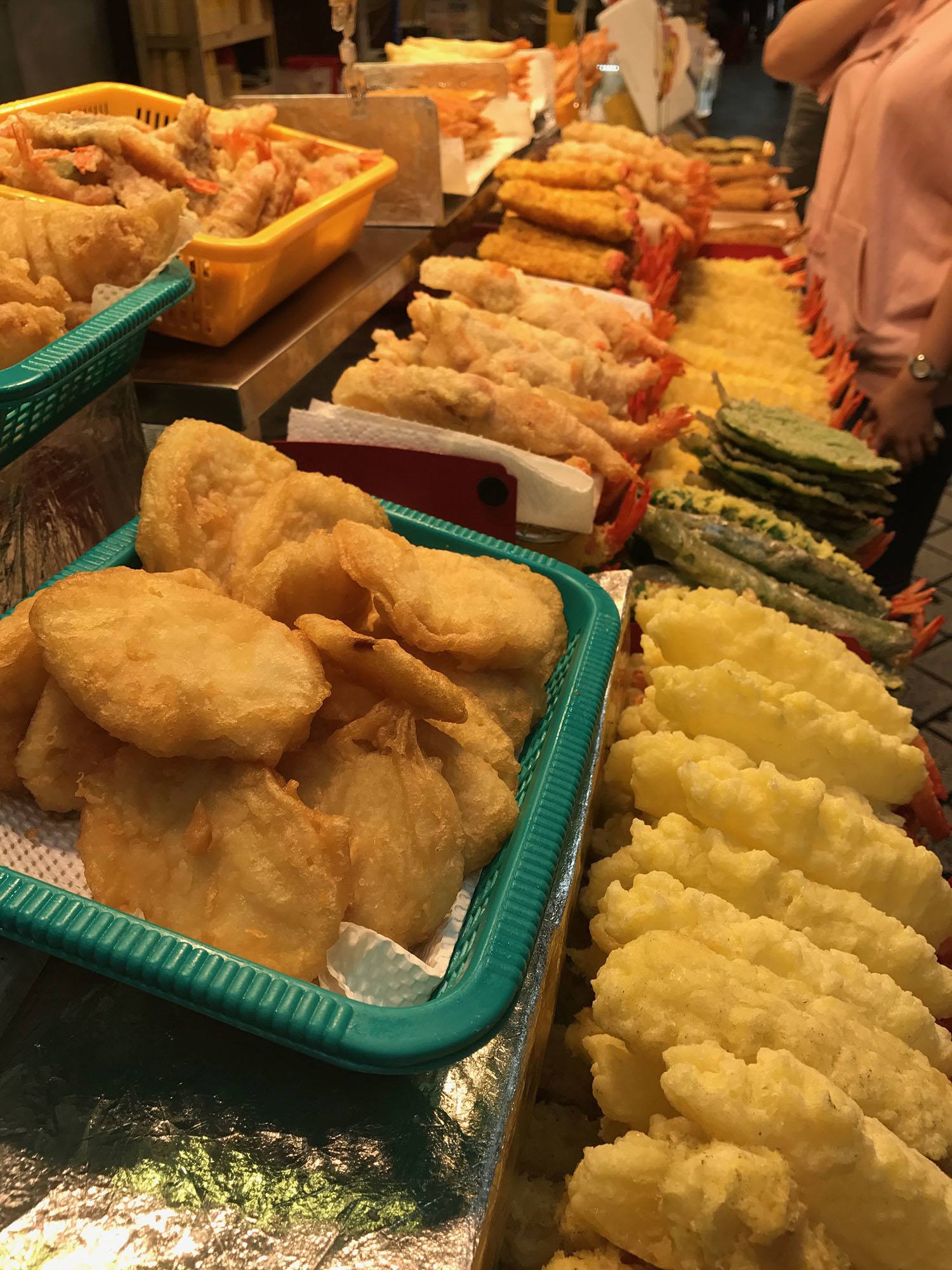
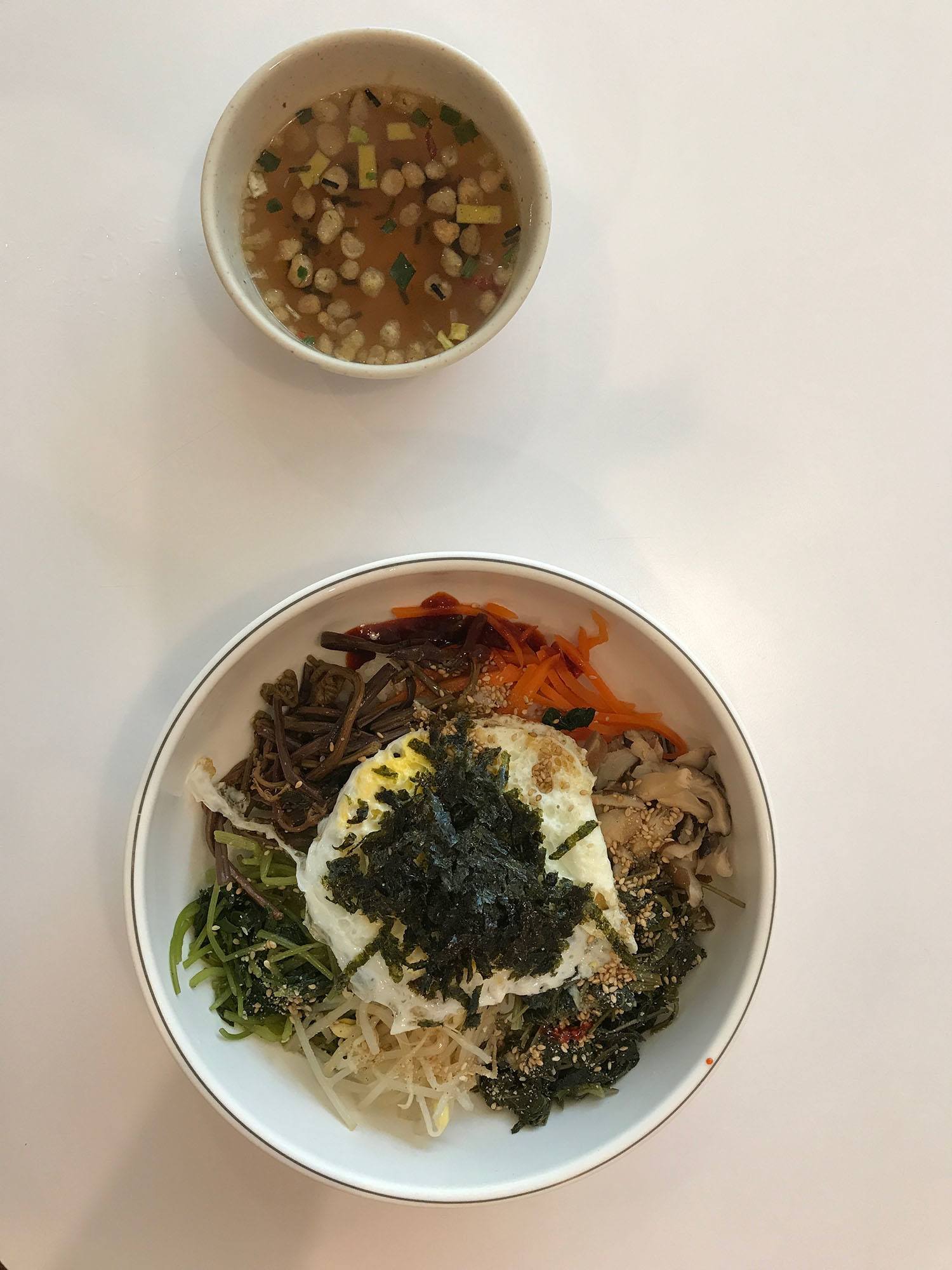
One must-try Sokcho speciality is:
- Dakgangjeong (닭강정)
Transportation - Getting around Sokcho
By Bus
Like most Korean metropolises, Sokcho is spread out. If you plan to explore every finite corner of the city, then you'll need to navigate using buses.
Ask at your accommodation for information about getting around Sokcho using the local bus network.
On Foot
If your plans primarily include only a Seoroksan National Park visit, then walking between your accommodation and a restaurant at the end of the day is all you'll need.
Transportation - Getting to Sokcho
By Bus
Getting to Sokcho from Seoul is quick and easy:
- Take the metro to Gangbyeon Station (the green line, or line two) in Seoul
- Leave the station via exit four
- Dong Seoul bus station is directly across the road from the exit
- Buy a ticket (for any Sokcho-bound bus) and enjoy the ride
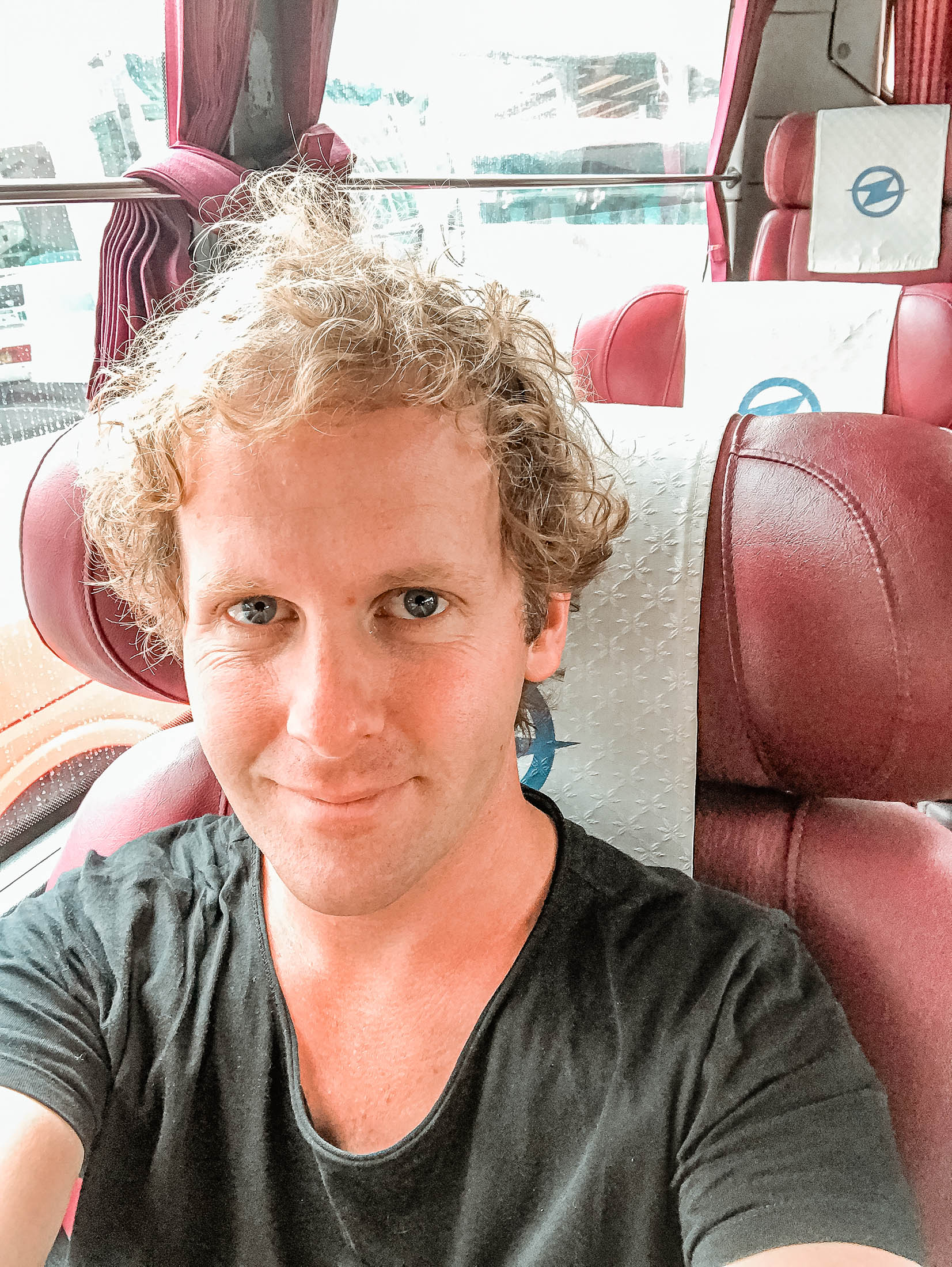
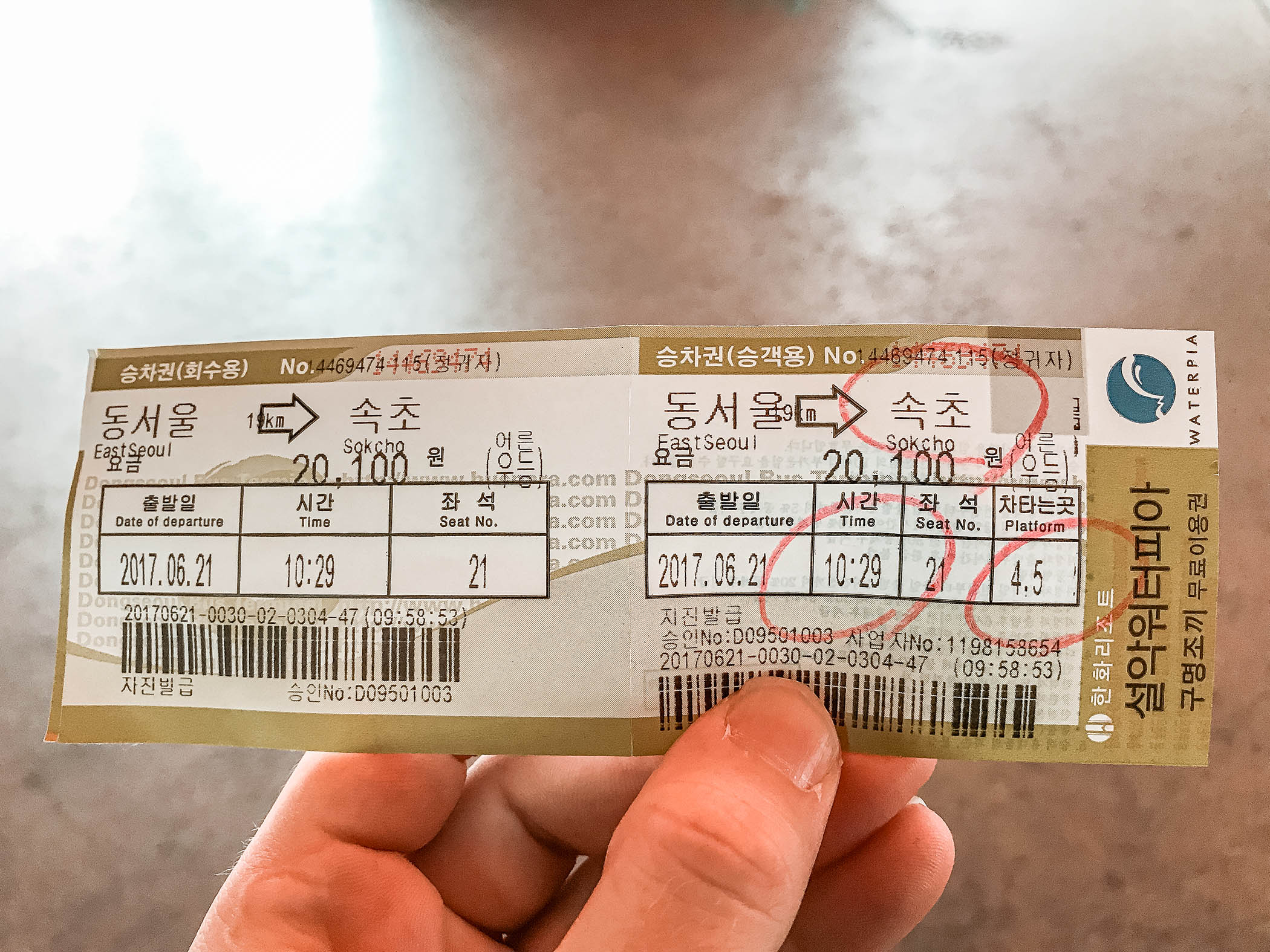
The bus was modern, comfortable and honestly, a little luxurious. It was money well-spent.
There are also regular bus services from Andong to Sokcho.
By Train
There is a train that travels to from Cheongnyangni Station in Seoul to Gangneung, an hour from Sokcho by bus.
ANDONG (안동,安東) AND HAHOE (하회마을) (Days 7-8)
A hop, skip and a small Korean jump south of Sokcho lies the city of Andong. Akin to its northern counterpart Sokcho, Andong’s prizeworthy features reside outside of the city’s expansive periphery. The key drawcard to the region is, in fact, Hahoe Folk Village: it’s a historic masterpiece curated so brilliantly stepping inside makes you believe Korea stopped in time – several thousand years ago.
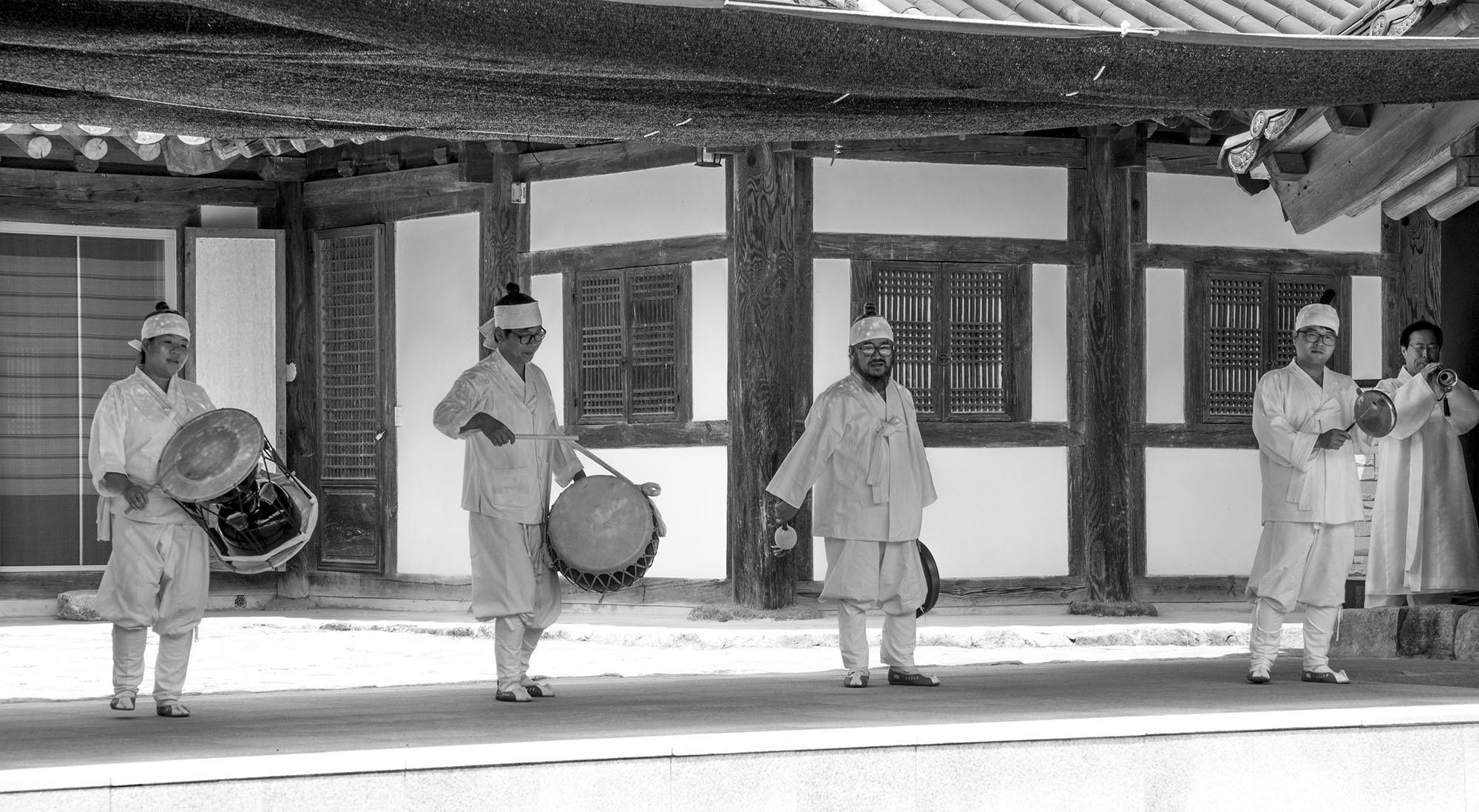
Things to Do and Experience in Andong During Your 2-Week South Korea Itinerary
Hahoe Folk Village
The authenticity prize should be awarded to this centuries-old well-preserved village, alive and buzzing with 230 current Korean residents. Assisted by the Government, the town’s inhabitants have been able to preserve tradition, culturally, naturally and in the finer details of the built environment.
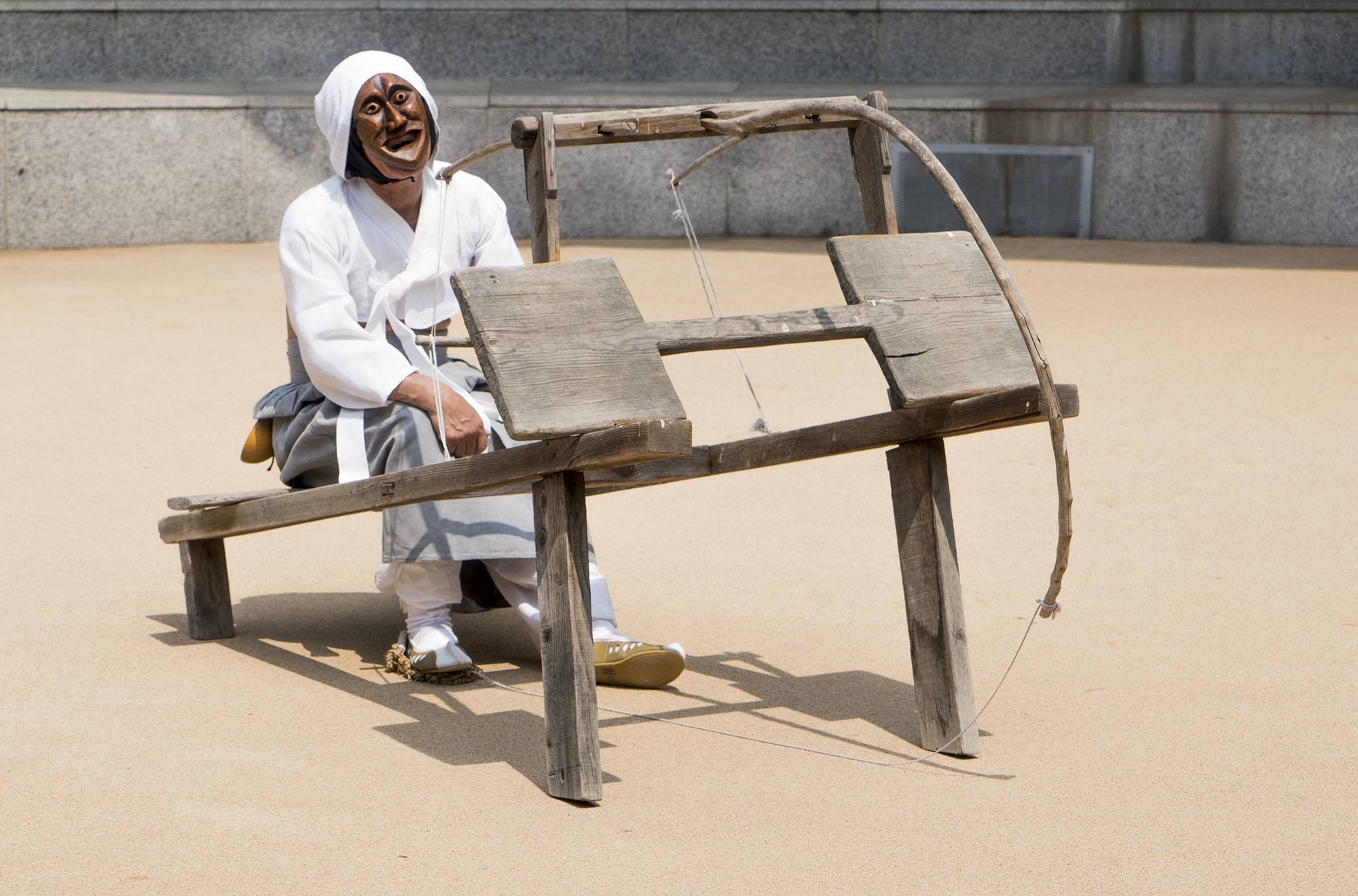
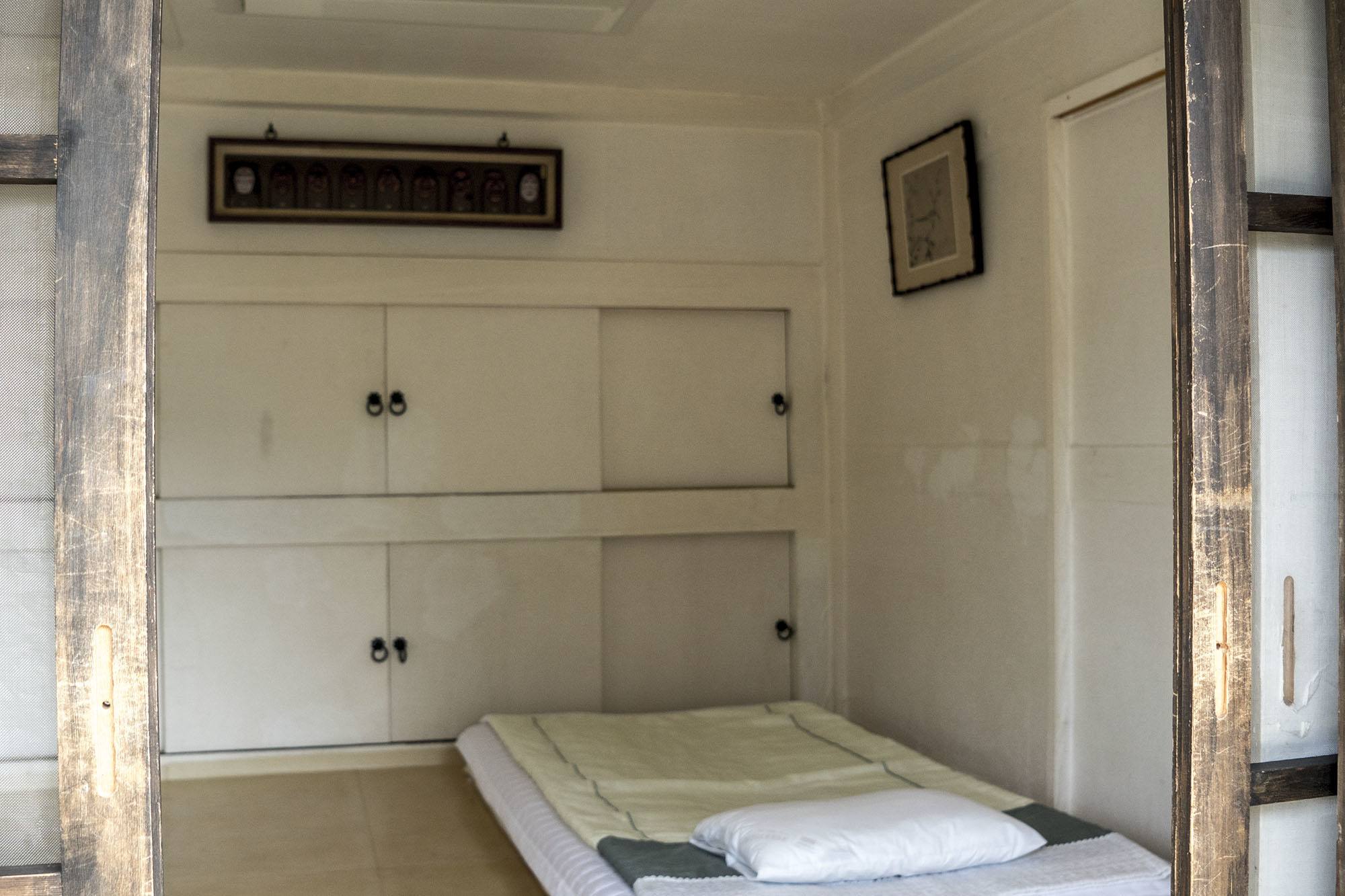
Now classified – justifiably - by UNESCO as a world heritage site, a journey down the dirt path, through fields replete with vegetable vines and around perfectly designed homes will transport you elsewhere.

Stay overnight in a traditional home, and the magic – particularly when silence ensues following dusk – continues.
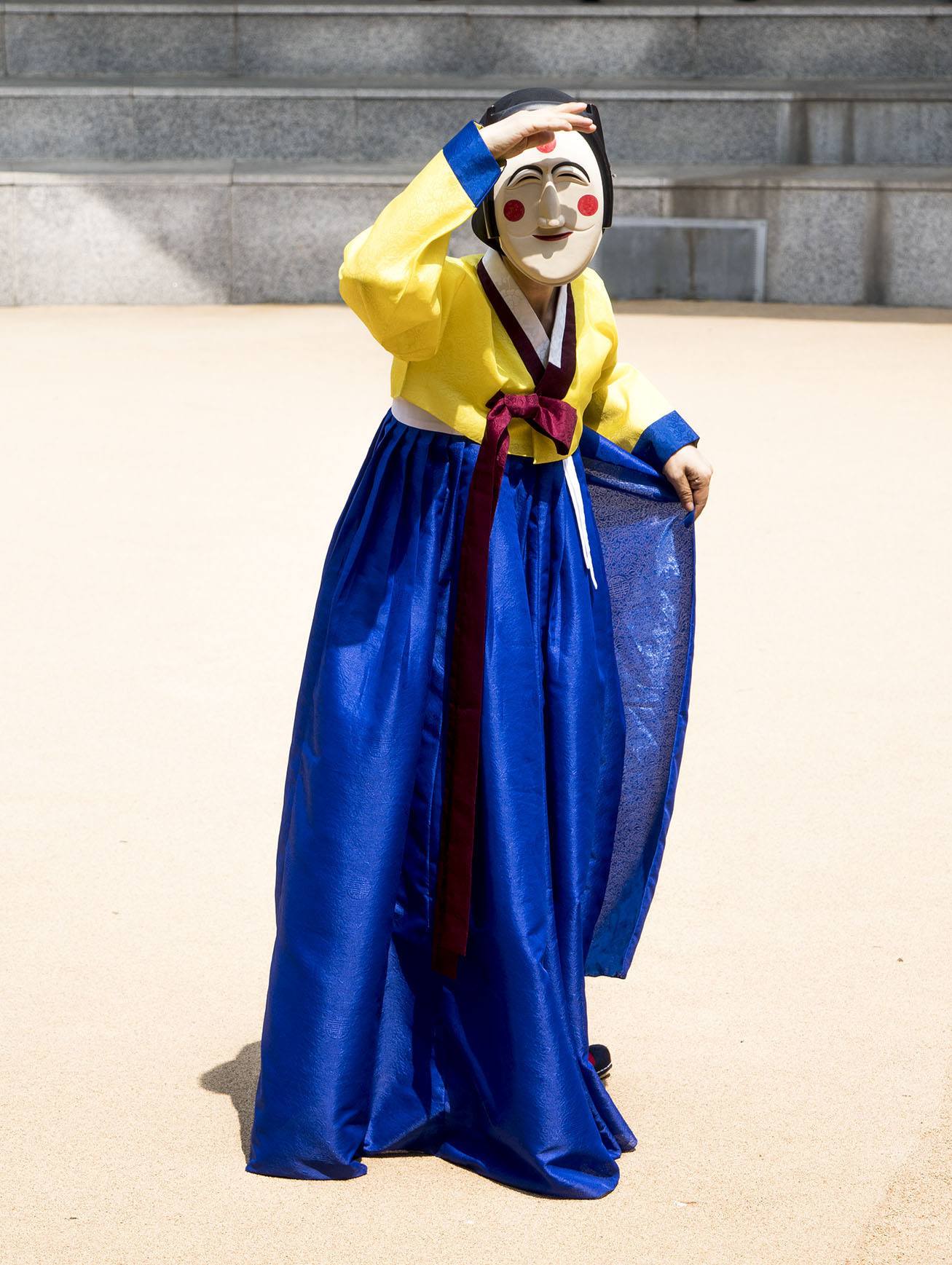
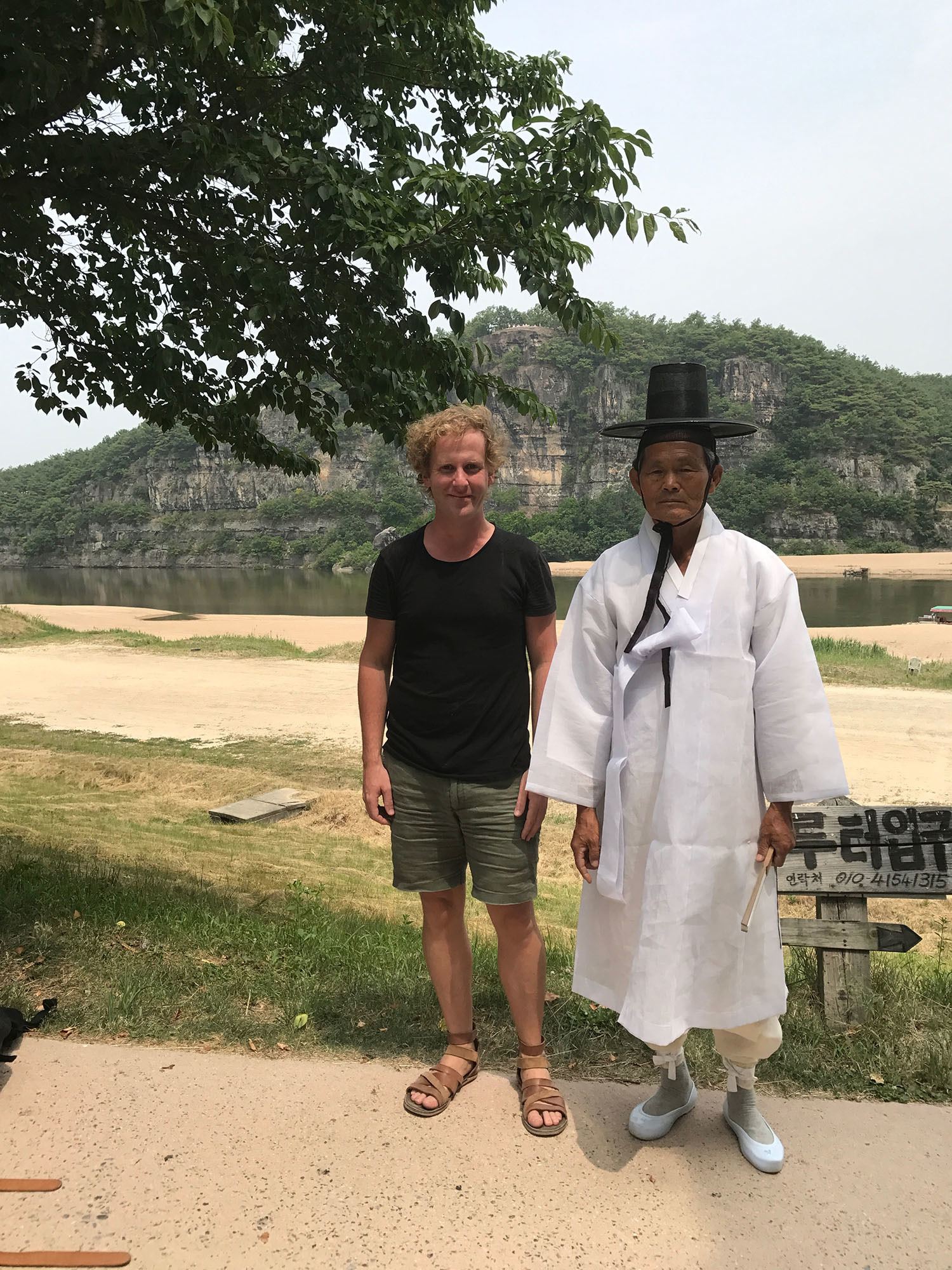
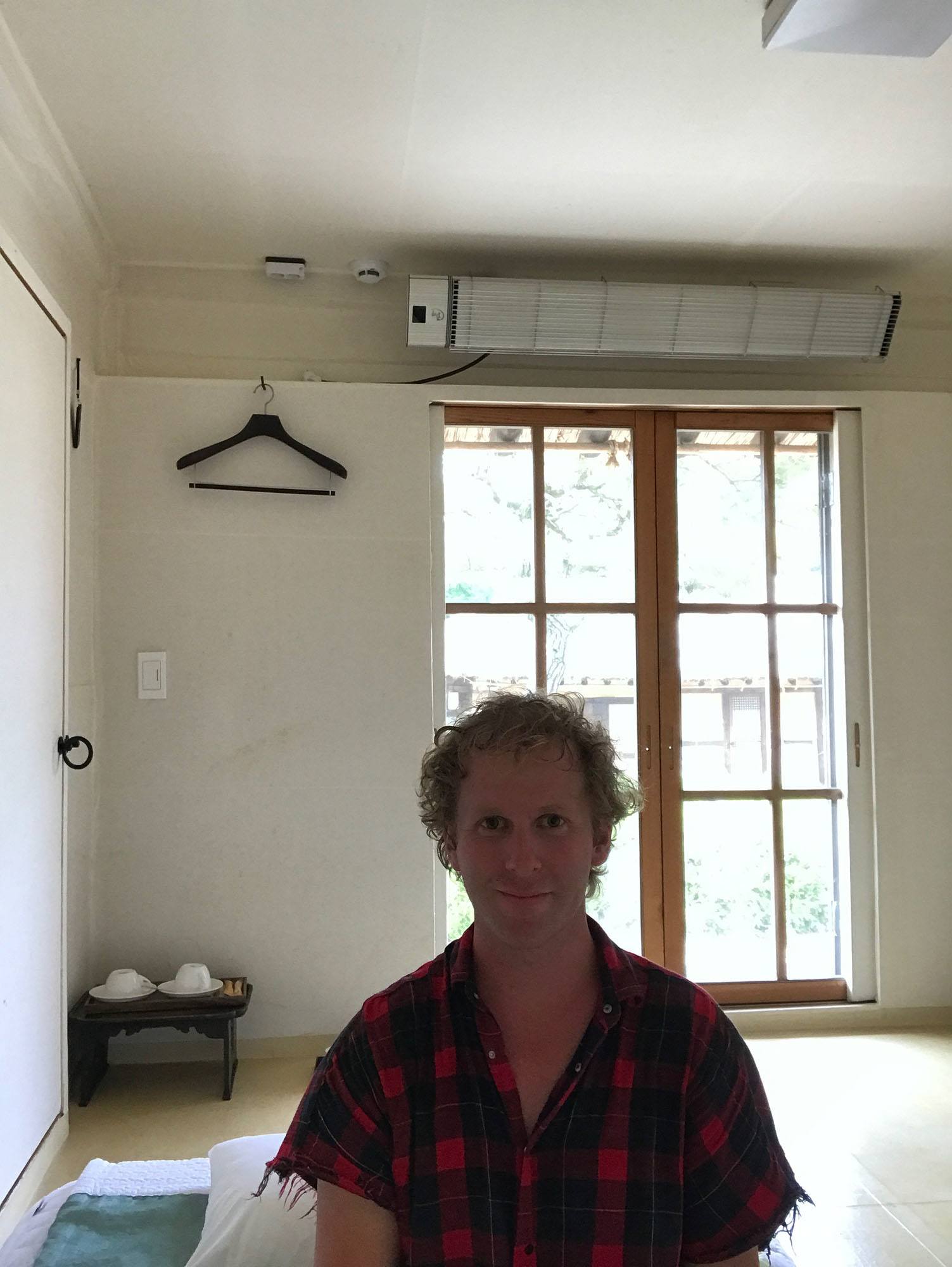
Simply put, visiting Hahoe Folk Village is akin to flipping Korea’s history book back several chapters to the 14th century. It’s hypnotic and, frankly, unmissable.
For further recommendations of activities to undertake in Hahoe, see this article.
Recommended Length of Stay in Andong and Hahoe
Two to three days
Spend the first day finding your feet, exploring Andong and navigating your way by public transport.
On day two (and possibly three), visit Hahoe Folk Village. Undertake the activities recommended here. Spend a little, treat yourself and stay overnight in a traditional home.
Accommodation - Staying in Andong
Budget: Haru The Guesthouse
For a budget-friendly stay in Andong, Haru The Guesthouse is a welcoming spot with everything you need. Rooms are simple but comfortable, and there’s a shared kitchen if you want to prepare your own meals. Travellers seem to love the relaxing garden, which is perfect after a day of exploring.
Solo travellers especially appreciate the location, making it a solid choice if you're looking to experience Andong without stretching your budget.
Mid-Range #1: Wolyeongchae
Wolyeongchae offers a peaceful hanok experience in a quiet residential area, making it a unique mid-range option in Andong. Staying here feels like stepping into a slice of traditional Korean life, with quiet surroundings and the charm of a classic hanok home.
While it’s a bit tucked away, it’s conveniently located just a short drive from Wolyeonggyo Bridge and other cultural sites, making it a great choice for those who want both comfort and a taste of Korean heritage.
Mid-Range #2: Eoulim House
For another comfortable mid-range stay in Andong, Eoulim House provides a peaceful and welcoming atmosphere. The rooms are simple yet well-equipped, each with a private bathroom and thoughtful touches like a kettle, perfect for winding down after a day of sightseeing. With a lovely garden to relax in and an outdoor dining area, it’s a great spot for solo travellers or families looking for a relaxed base to explore Andong’s cultural gems.
Accommodation - Staying in Hahoe
Mid-Range: Rakkojae
Rakkojae was my choice of lodging, located in Hahoe Folk Village. It was perfectly traditional and provided the peace and serenity for which I'd been searching. It certainly wasn't cheap, but to experience a slice of Korean life from centuries ago, it was worth the luxurious spend for one night.

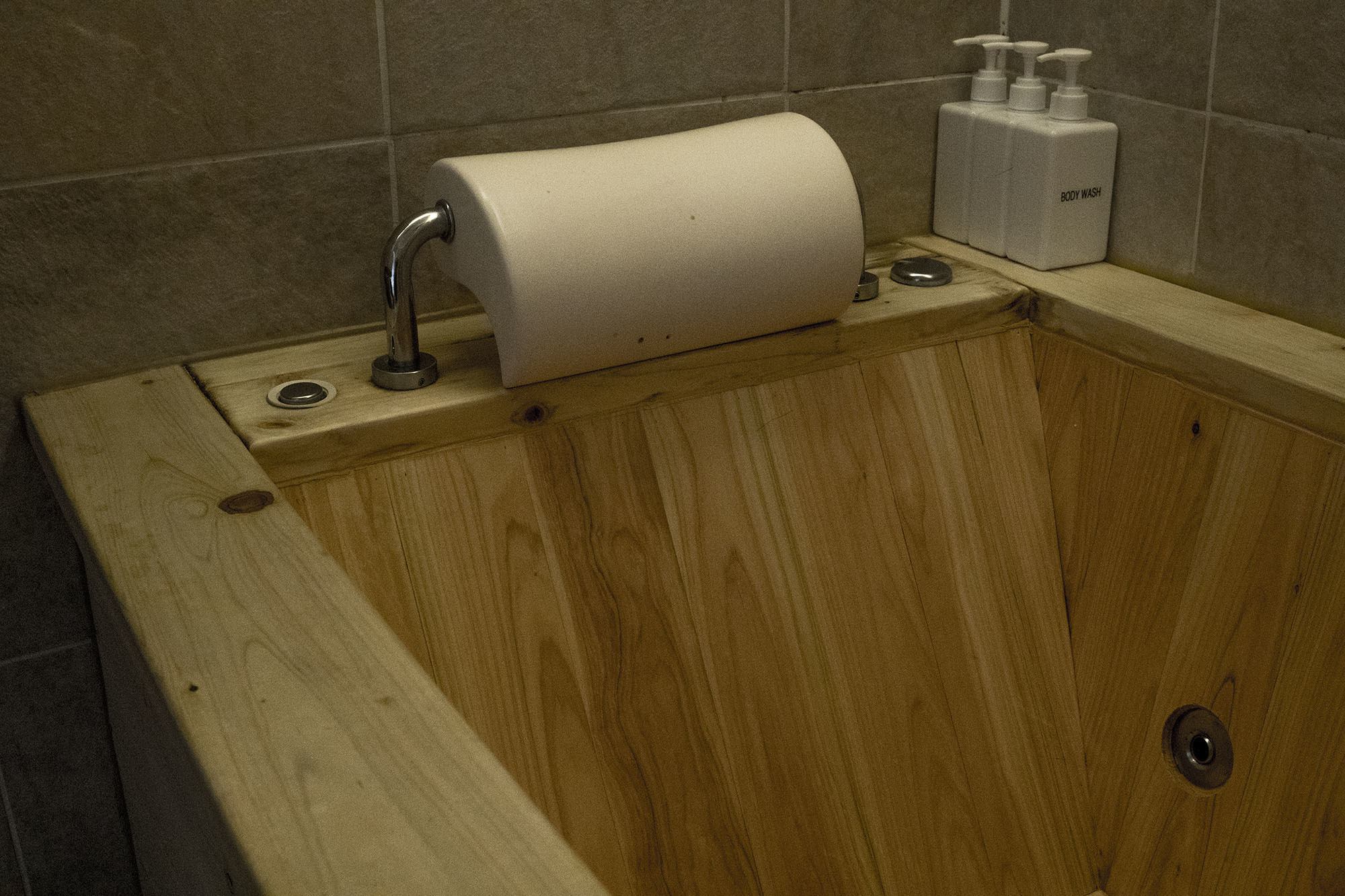
Alternatively, you can stay in Andong (options listed above), which is a short bus ride away.
High-End: Chunghyodang
For another authentic stay right in Hahoe Folk Village, Hahoe Chunghyodang offers a charming, traditional experience with modern comforts. Each room has its own private entrance, allowing you to come and go with ease, and the garden provides a peaceful spot to unwind.
With rooms that blend hanok style and comfort, it’s a perfect choice for families or anyone wanting a quiet retreat just steps from the heart of Hahoe.
Food - Eating in Andong and Hahoe
Andong
As with most Korean towns and cities, Andong is not short on food options. I didn't stay - or eat - in Andong, so I cannot make personal recommendations. However, according to other travellers, there are some great places to try. Here are a few recommendations:
- Andong Jjimdak Jongson (the Old Market) - famous for varieties of jjimdak
- Andong Godunga - great for salted mackerel which is a speciality in this region
- The diner - great for coffee and brunch options
Hahoe
There are only a handful of small shops in Hahoe from which you can purchase food.
If you're on a day-visit, then buying a snack for lunch won't be an issue. However, if you've booked to stay the night in a traditional home, ensure that you request dinner from the owner. Otherwise, you may end up feeling a little h-angry come morning.
Transportation - Getting around Andong
On Foot
Andong is known to have a walkable centre, but not all attractions are close by. Walking is typically feasible within the central area but may require a bus or taxi to reach some outer attractions.
By Bus
Most local buses arrive at and depart from the central train station, servicing the key tourist attractions. Information at the bus stops is written in Korean (which can be a challenge if your local language skills are limited). However, there is an information office inside, the staff at which speak English.
Here are a few things to note:
- Seoul T-money cards can be used on the buses in Andong
- Fares can be paid in cash (however avoid paying using large notes as drivers won't be impressed)
- Fares are charged based on the length of the route
- Start at the train station (which is also the main bus terminal for intercity services) to get a sense of orientation to Andong
By Taxi
Taxis aren’t as plentiful in Andong as in larger cities, so the train station is often the most reliable place to find one quickly. If you’re heading out from a less central area, have a taxi number on hand from your accommodation to call for pickups.
Tip: Taxi drivers may not speak much English, so it can help to have your destination written in Korean or saved on your phone to show them.
Transportation - Getting around Hahoe
On Foot
Hahoe Folk Village is tiny so it's best explored on foot. Walking through the village’s narrow lanes and past centuries-old hanoks offers a sense of stepping back in time. Strolling on foot lets you appreciate the intricate architectural details, lush surroundings, and glimpses of village life at a leisurely pace.
You won’t need to rush — take your time to enjoy the atmosphere and perhaps catch a traditional performance or ceremony along the way.
By Bicycle
Cycling through Hahoe Folk Village is a scenic and convenient way to explore the area at your own pace.
Rentals are available near the entrance, giving you an easy way to cover more ground and visit tucked-away spots around the village. Pedaling through the historic lanes and around traditional homes adds to the charm, especially on sunny days. Just remember that some paths are narrow and slightly uneven, so ride carefully and enjoy the unique views along the way.
Transportation - Getting to Andong
By Train
Regular services run to Andong from the following cities in South Korea:
- Busan (direct)
- Daegu (direct)
- Gwangju (direct)
- Seoul (high-speed to Daegu with a local transfer to Andong or semi-fast direct from Seoul to Andong)
By Bus
There are services to Andong from the following locations in South Korea:
- Seoul
- East Terminal (outside Kangbyeon subway station)
- Buses run every 10 to 15 minutes
- The journey takes 2.5 hours
- Seoul
- Gangham Express Terminal
- Buses run every 40 to 60 minutes
- The journey takes nearly three hours
- Daejeon
- Dong-gu Express Bus Terminal
- Buses run every hour
- The journey takes slightly more than two hours
Transportation - Getting to Hahoe
By Bus
Bus 46 (₩1800, 50 minutes, eight daily) runs to Hahoe from Andong.
Save this guide for future reference!
GYEONGJU (경주시) (Days 9-11)
While southward-bound, circumventing the mystique of Gyeongju would be foolish. In fact, even with its multiple palaces, not even Seoul can compete with Gyeongju’s historical legacy and grandeur.
Affectionately known as the ‘museum without walls’, it’s not shy on ruins, statuary, temples and tombs.
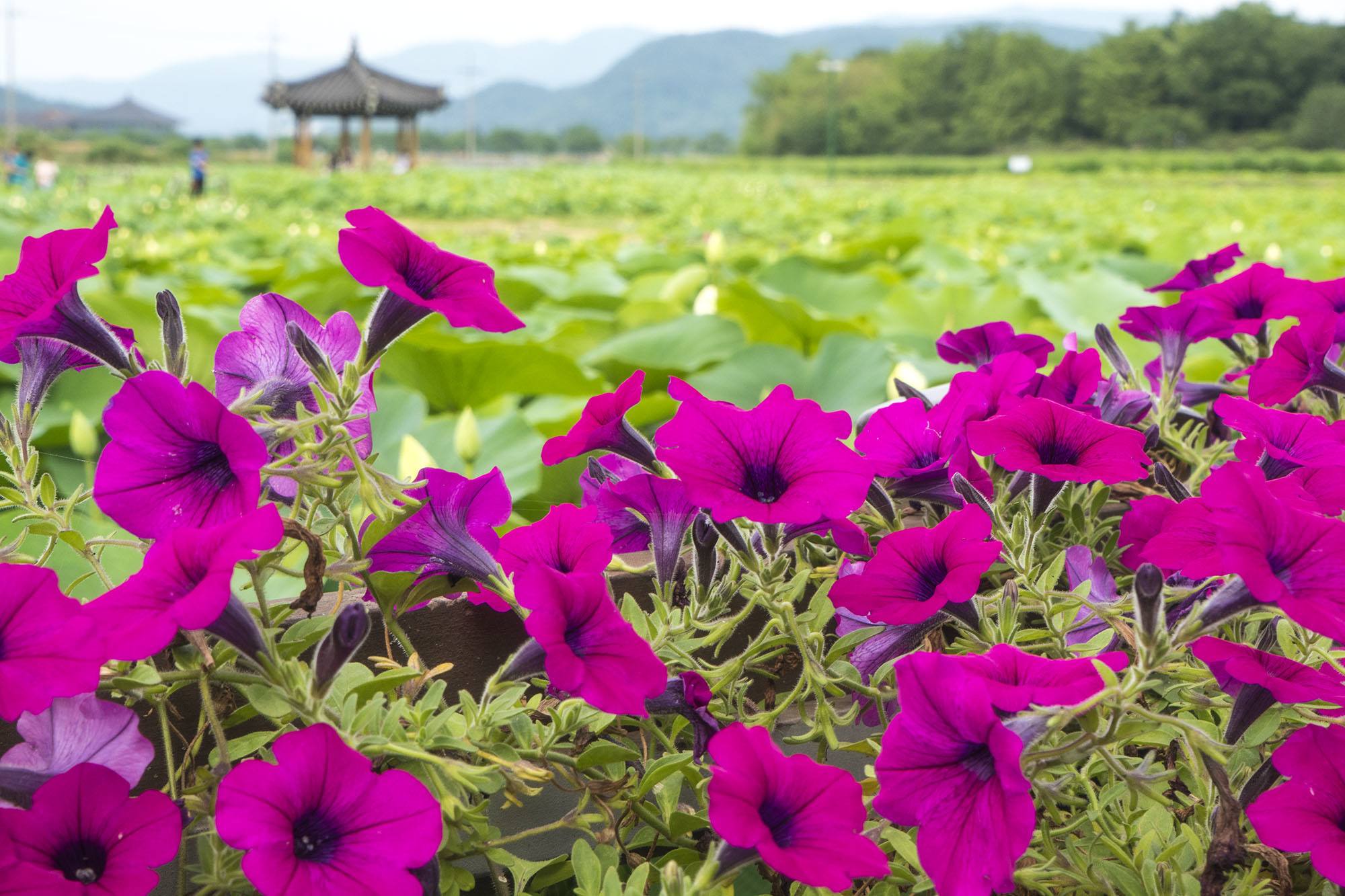
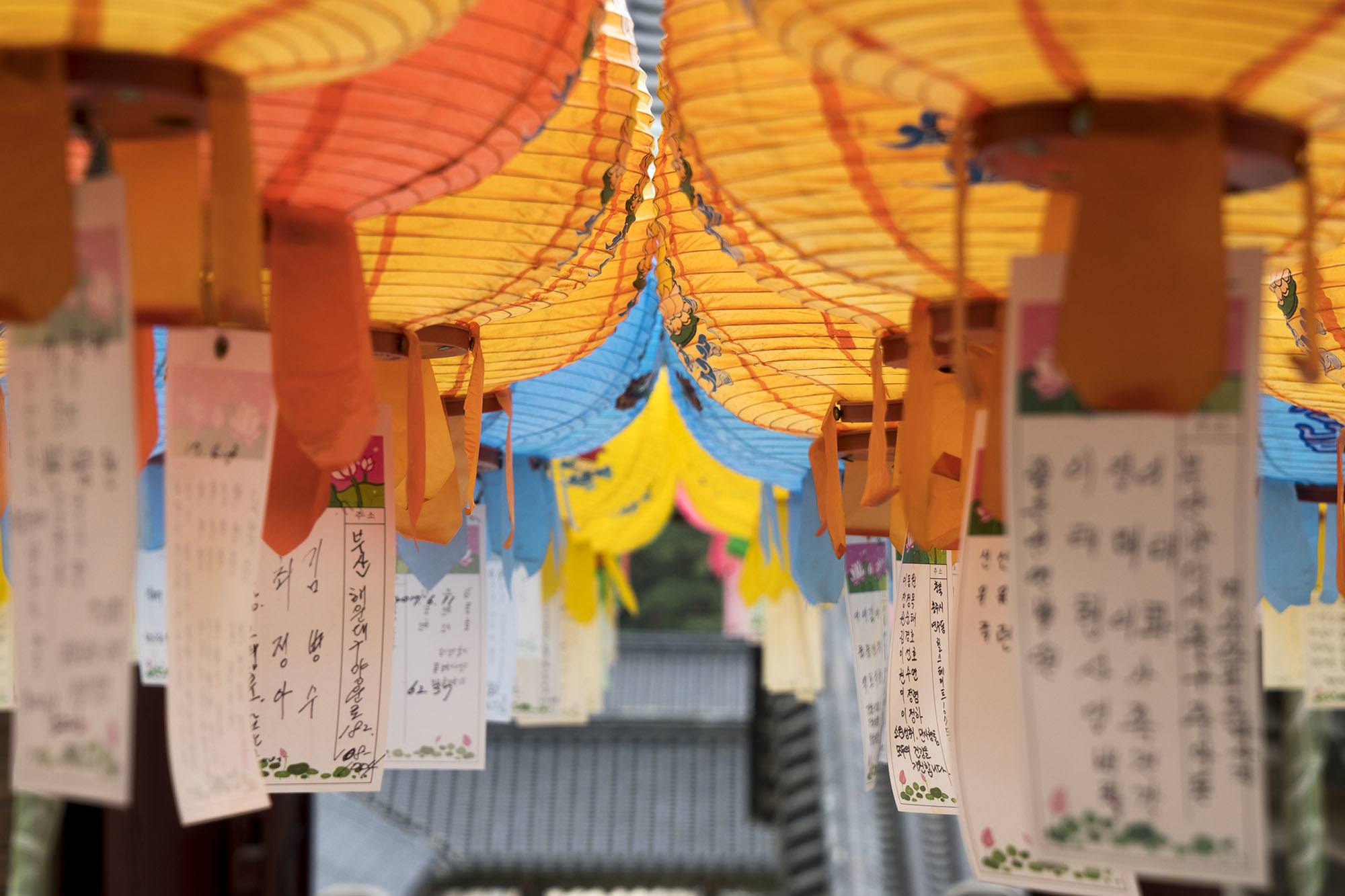
You will be hard pressed to see every finite artefact, especially if time is of the essence. The following are notable sights worthy of a spot on a two-to-three-day Gyeongju itinerary.
Things to Do and Experience in Gyeongju During Your 2-Week South Korea Itinerary
Donggung Palace and Anapji (Wolji) Pond
A great example of Silla architecture, the ancient – and recently reconstructed – secondary palace to the royal entourage is best visited at dusk.
It played host to royals during the time in which Gyeongju was the capital of the country.
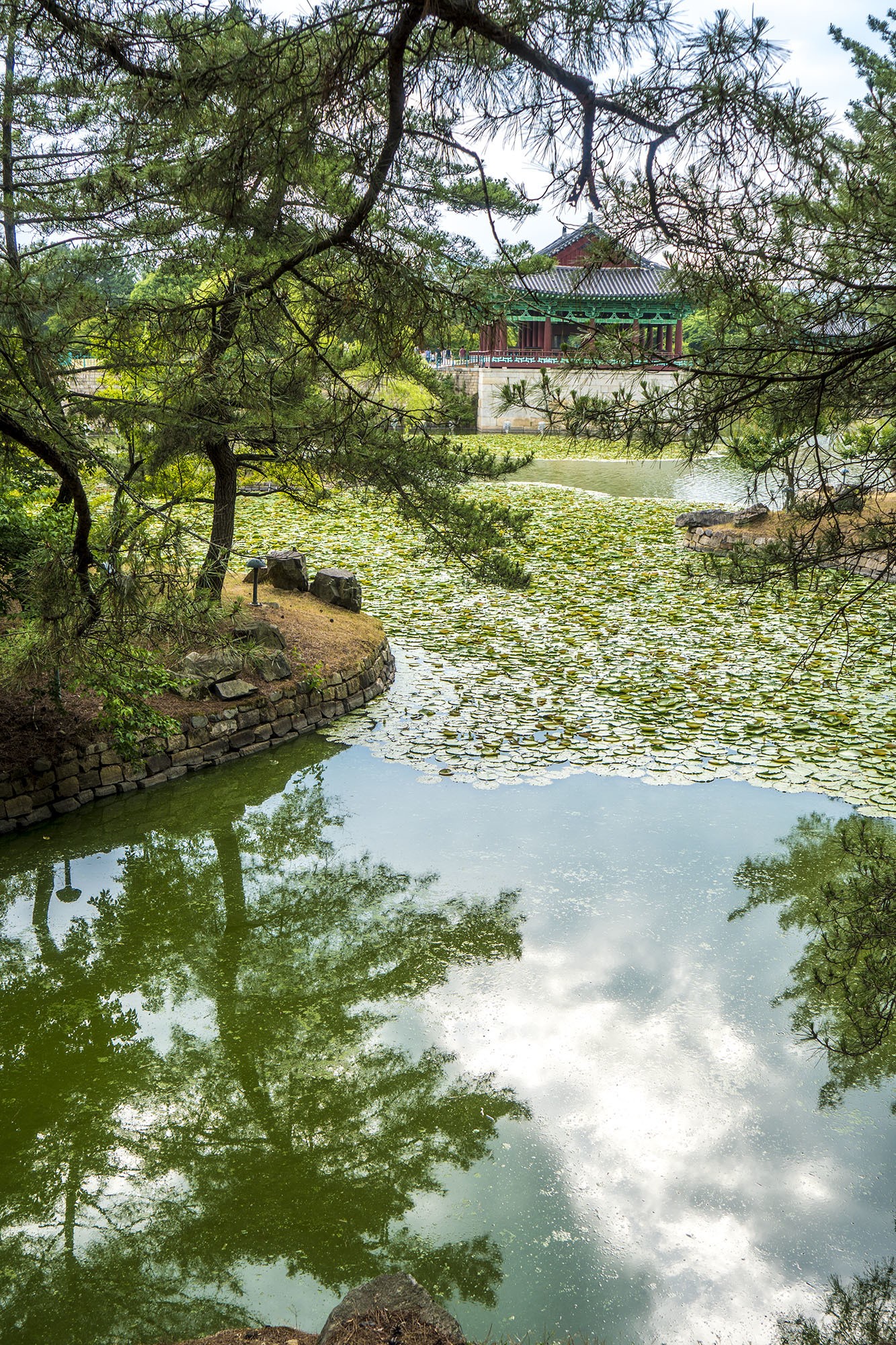
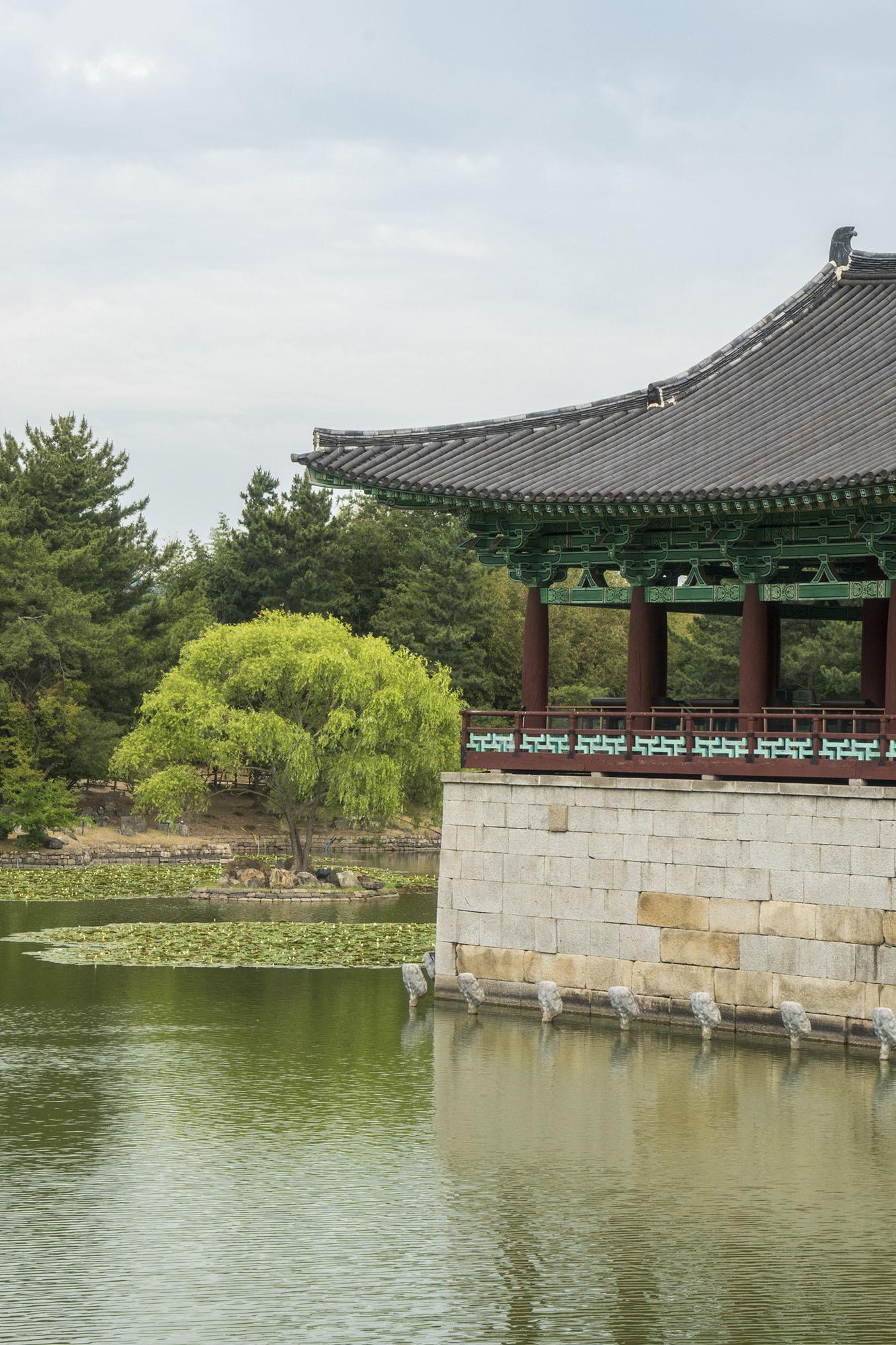
Stroll languidly around the pond and occasionally pull out a tripod to capture the changing light of the sky – reflected brilliantly in the still waters - as dusk morphs to night.
The palace, with its pond, exemplifies the grace and elegance of those who ruled the nation from the first to the 10th century.
For a deep dive into Gyeongju’s UNESCO-listed treasures (including those below), consider booking the Gyeongju UNESCO Sites Private Tour with Licensed Tour Guide. This private tour takes you through some of the most significant historical sites in the region, with an expert guide to help you understand the rich history and cultural importance of Gyeongju’s landmarks.
Please note: If you're booking the tour for just one person, the price nearly doubles. It's best to book as part of a group or with others to keep the cost more reasonable.
➡ Click here to book this tour
National Museum
A short walk from the beautiful pond, the National Museum will dazzle even the least historically-imbued at heart.
Home to a gold crown, displays of ornate jewellery, relics of the Shilla dynasty and the most resonant bell in Asia, it’s possibly the most impressive museum in all of pint-sized South Korea.
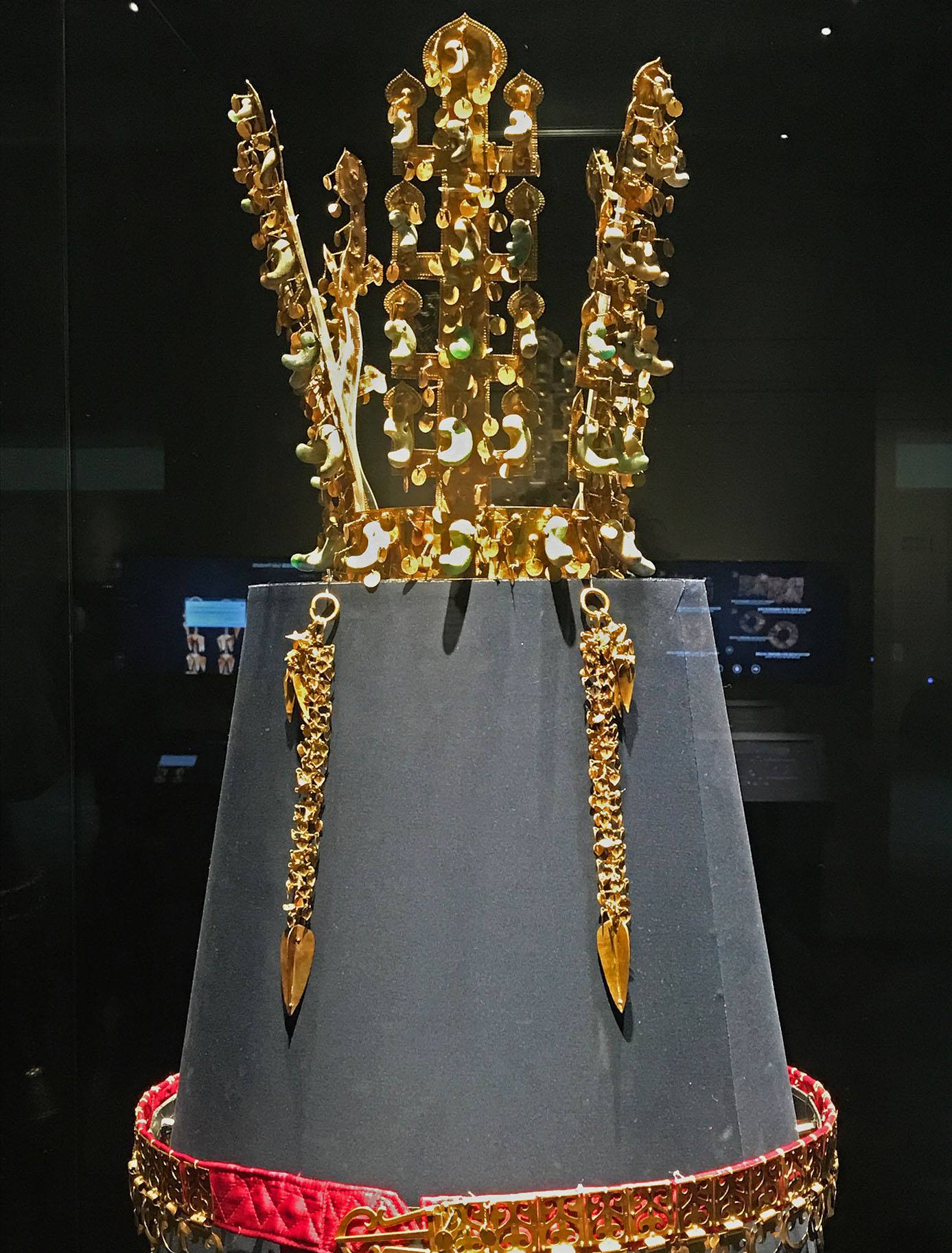
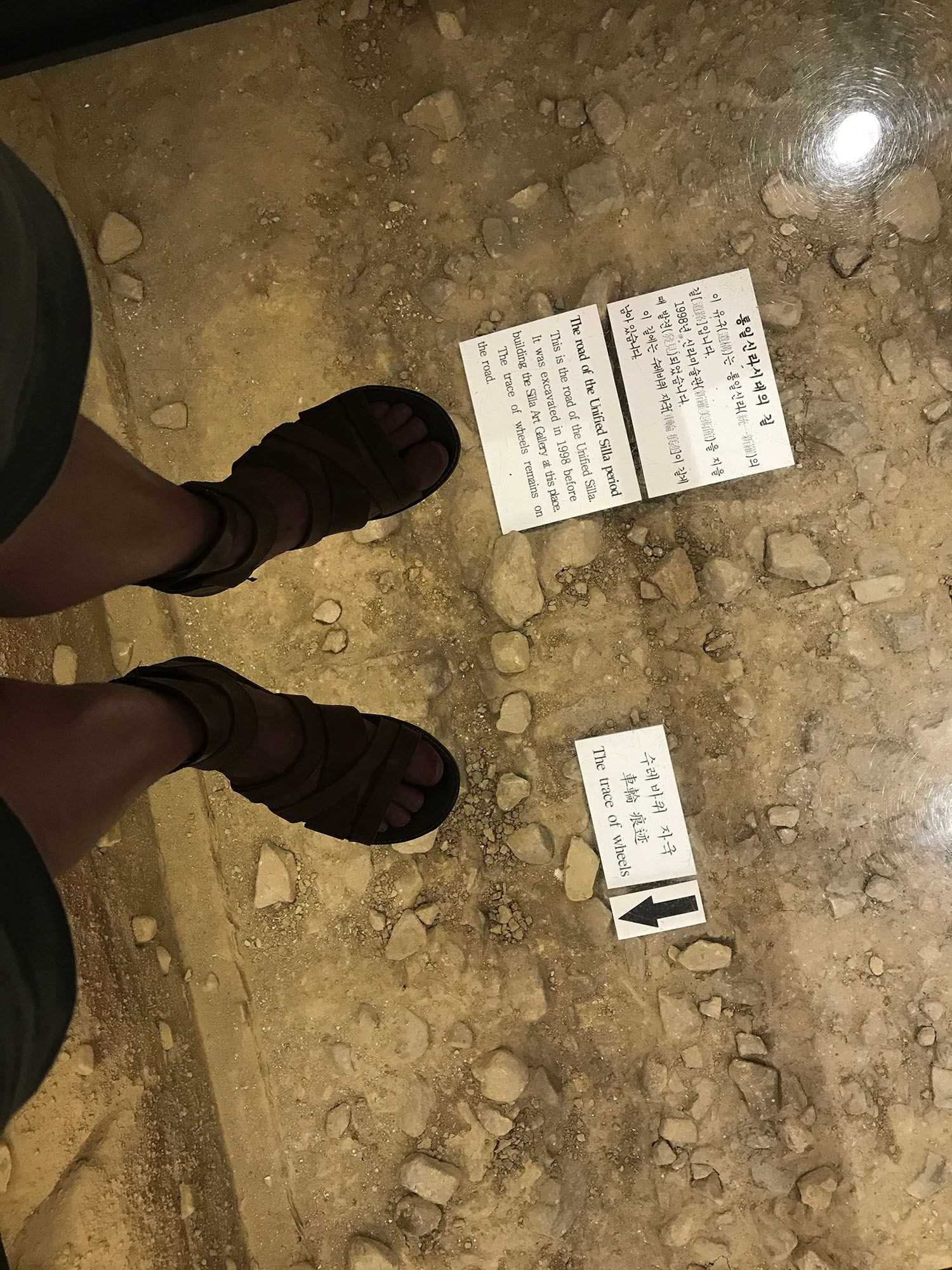
Bulguksa
Built originally in the sixth century, the temple has been renovated and reconstructed several times in various dynasties following its original creation under the Silla. Despite its facelift, the religious architectural site is exemplary, outshining its Korean counterparts in terms of grandeur and beauty in other corners of the country.
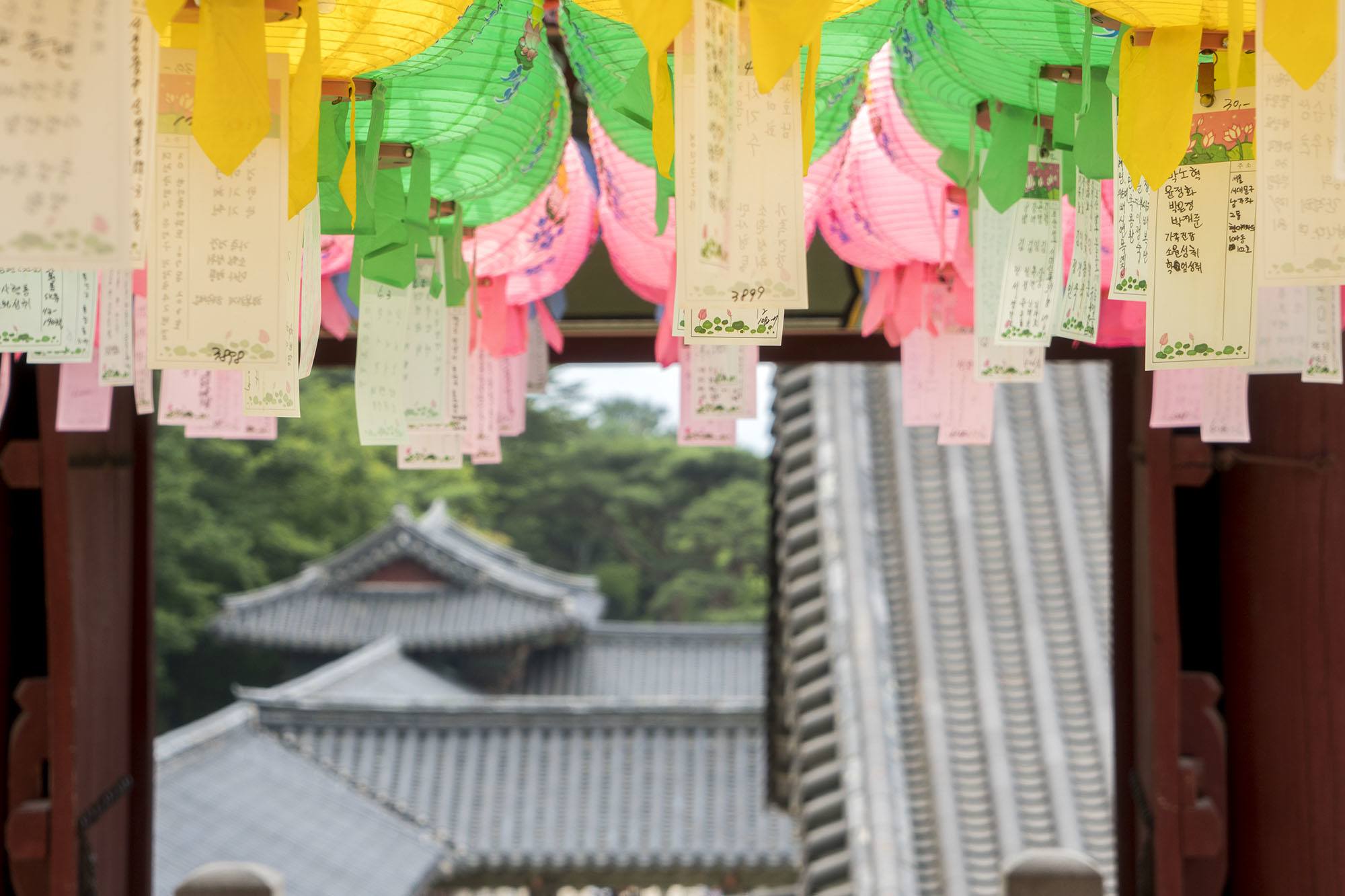

Even with the hordes of Korean tourists creating a flurry of dense activity on any given day, the maze-like temple provides many opportunities to hide, and seek out new treasure.
Take bus number 10 from Gyeongju, and arrive within an hour.
Seokguram
Testament to the ingenuity of its builders, the grotto – inside of which stands a giant non-photographable Buddha – is set high on the slopes of Mount Toham. Looking out to sea, the Buddha – who is surrounded by granite – sits with a concentrated mundra, and is said, by some, to be protector of the region.
Even without underlying Buddhist aspirations, visiting the grotto is worthwhile simply for the view. Contemplating its creation high in the hill is also inspiring.
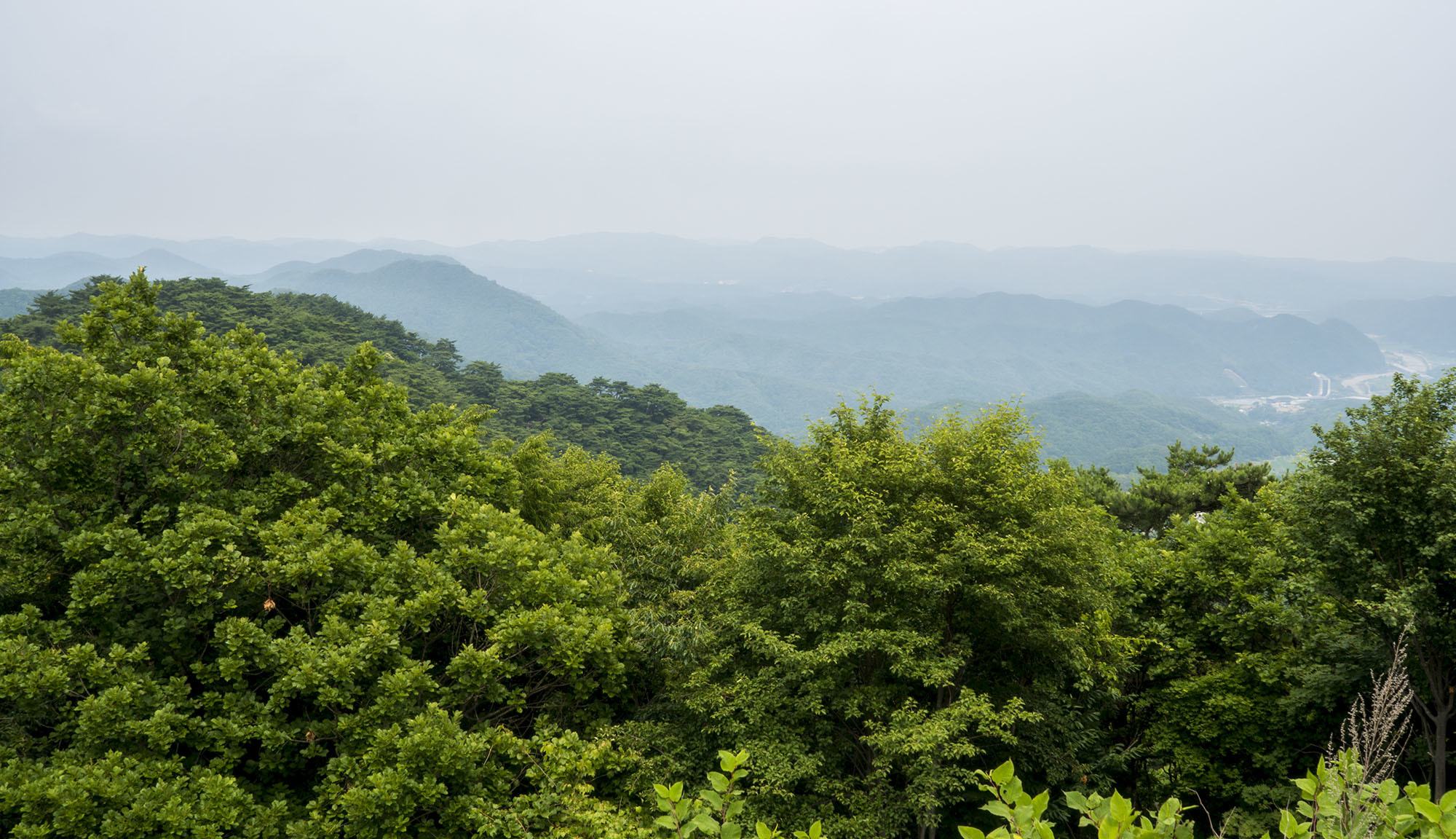
Getting to the grotto is easy: you can hike the steep trail between Bulguksa and Seokguram, or take bus number 12. I lazily chose the latter (which departs hourly), and enjoyed the ride, particularly as the bus wove its way around the precipitous and bendy mountain road.
Gyeongju Hyanggyo Confucian School and Neighbourhood
Located in Gyodong, a short walk from the Cheomseongdae Observatory, the provincial hyanggyo (or school) was commenced during the Joseon period, and now commemorates the Confucian scholar who resided there.
The school aside, the entire neighbourhood oozes historic charm, replete with stone paved roads and architecturally notable homes.
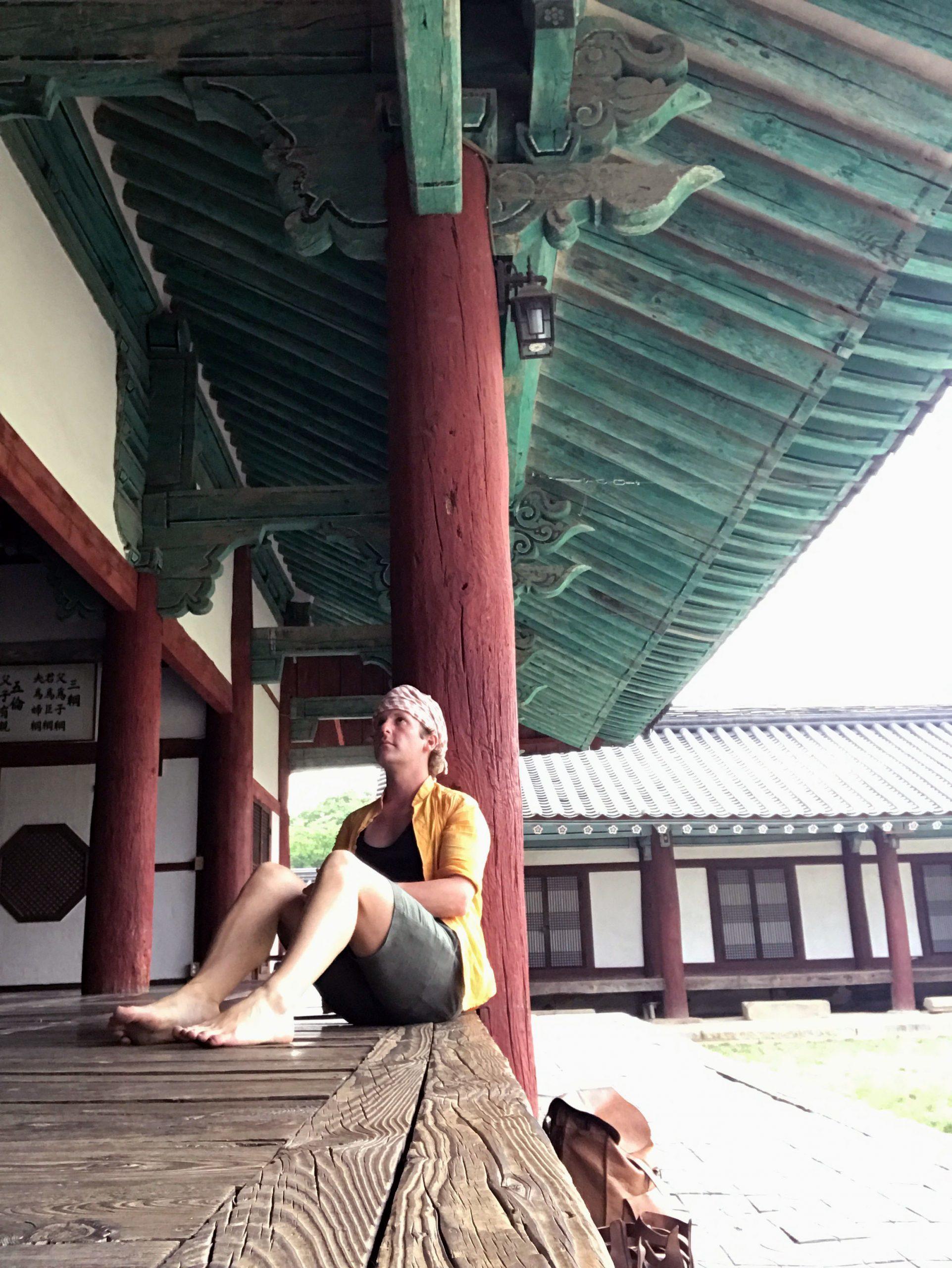
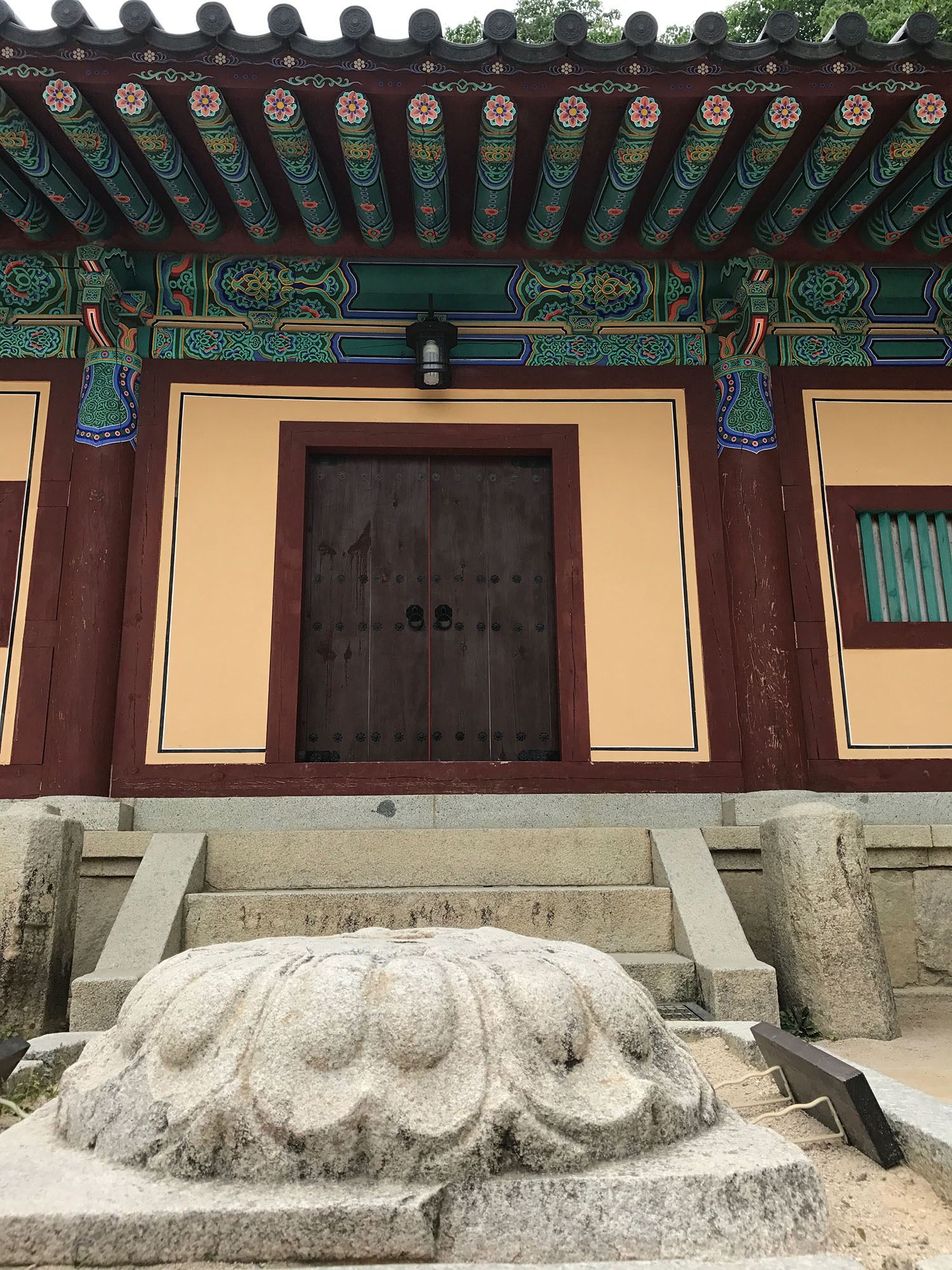
Restaurants - albeit overpriced - abound, as do stores exhibiting all kinds of Korean paraphernalia.
Recommended Length of Stay in Gyeongju
Two to three days
Spend the first two days seeing the historical sights within city limits with day three dedicated to visiting Bulguksa and Seokguram.
Accommodation - Staying in Gyeongju
Budget: Blueboat Hostel Gyeongju
If you're looking for a budget-friendly stay in Gyeongju, Blueboat Hostel is a fantastic choice. I stayed here and really liked it — the hostel is clean, well-organised, and has a friendly vibe. With a shared kitchen, lounge, and a convenient location just steps from Gyeongju Station, it’s an ideal base for exploring the city’s historic sites.
Mid-Range: Yettle Hanok Stay
For a unique mid-range stay in Gyeongju, Yettle Hanok Stay offers a blend of comfort and tradition in a peaceful setting. The charming hanok-style rooms, complete with modern amenities, provide a cosy retreat after a day of exploring nearby sites like Anapji Pond and Gyeongju National Museum. With a shared kitchen and lovely garden, it’s a great option for solo travellers and couples alike who want an authentic experience without compromising on comfort.
High-End: Hanok Stay Dagagam
For a luxurious hanok experience in Gyeongju, Hanok Stay Dagagam combines traditional charm with modern comfort. Each unit features a fully equipped kitchenette, a spa bath, and a walk-in shower, offering a blend of relaxation and convenience. With allergy-free rooms and thoughtful touches like bathrobes, slippers, and streaming services, it’s an elegant choice for travellers looking to indulge while staying close to Gyeongju’s cultural sites like Anapji Pond and Cheomseongdae.
Food - Eating in Gyeongju
There are some great places at which to experience Korean food in Gyeongju, although there is nothing particularly famous from this region aside from seafood.
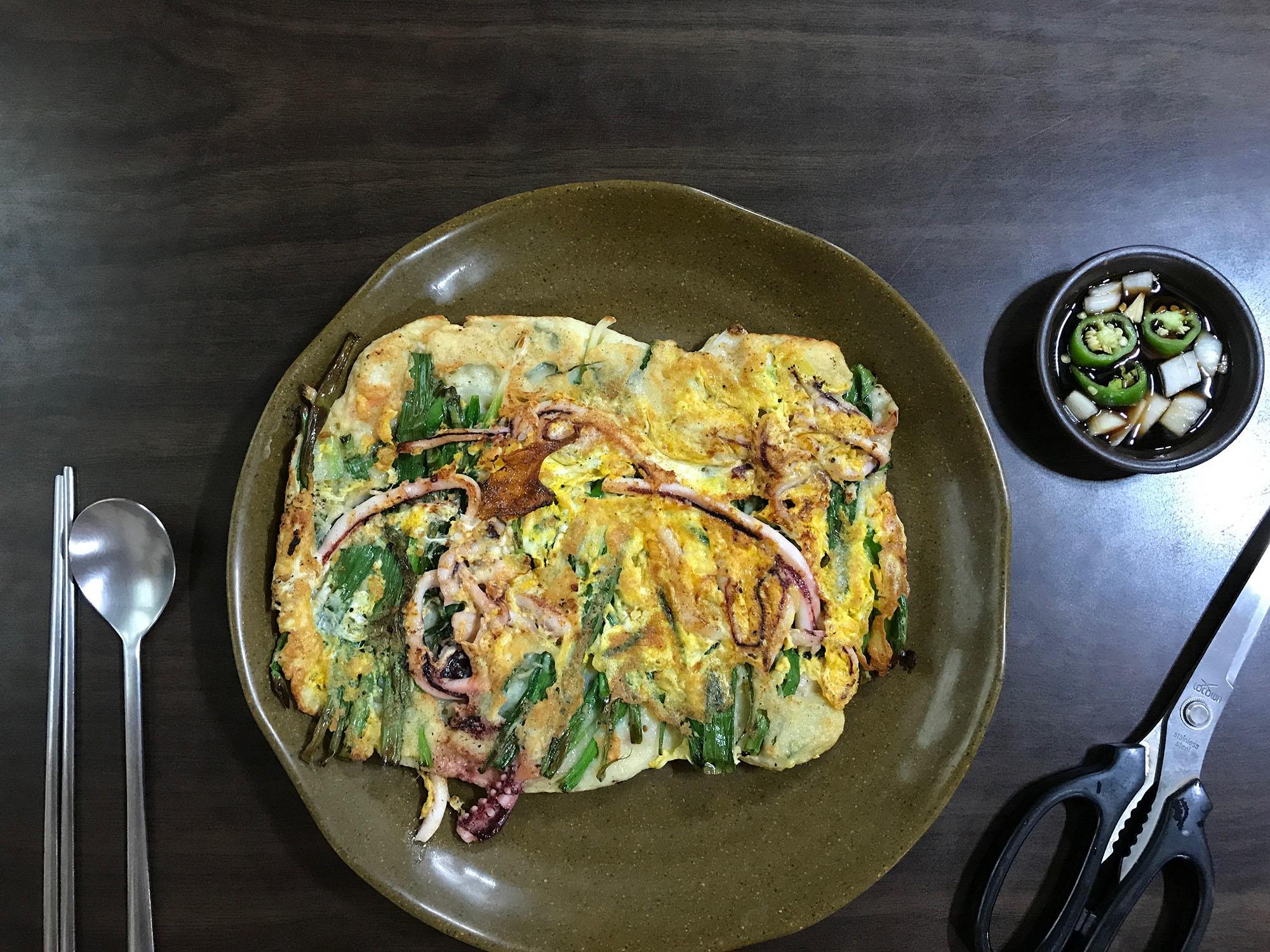
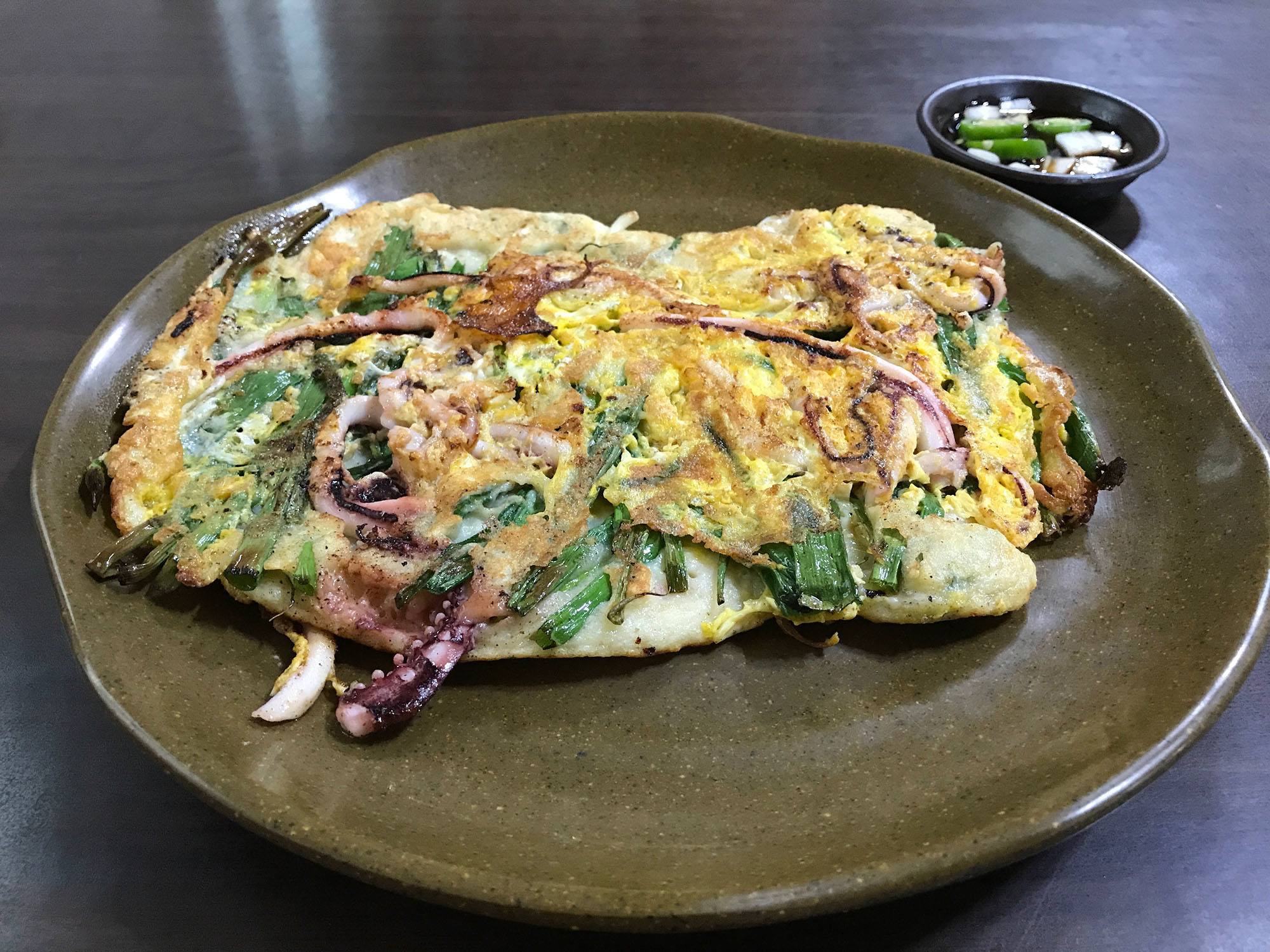
I ate at a different restaurant and market each day and night of my three day stay.
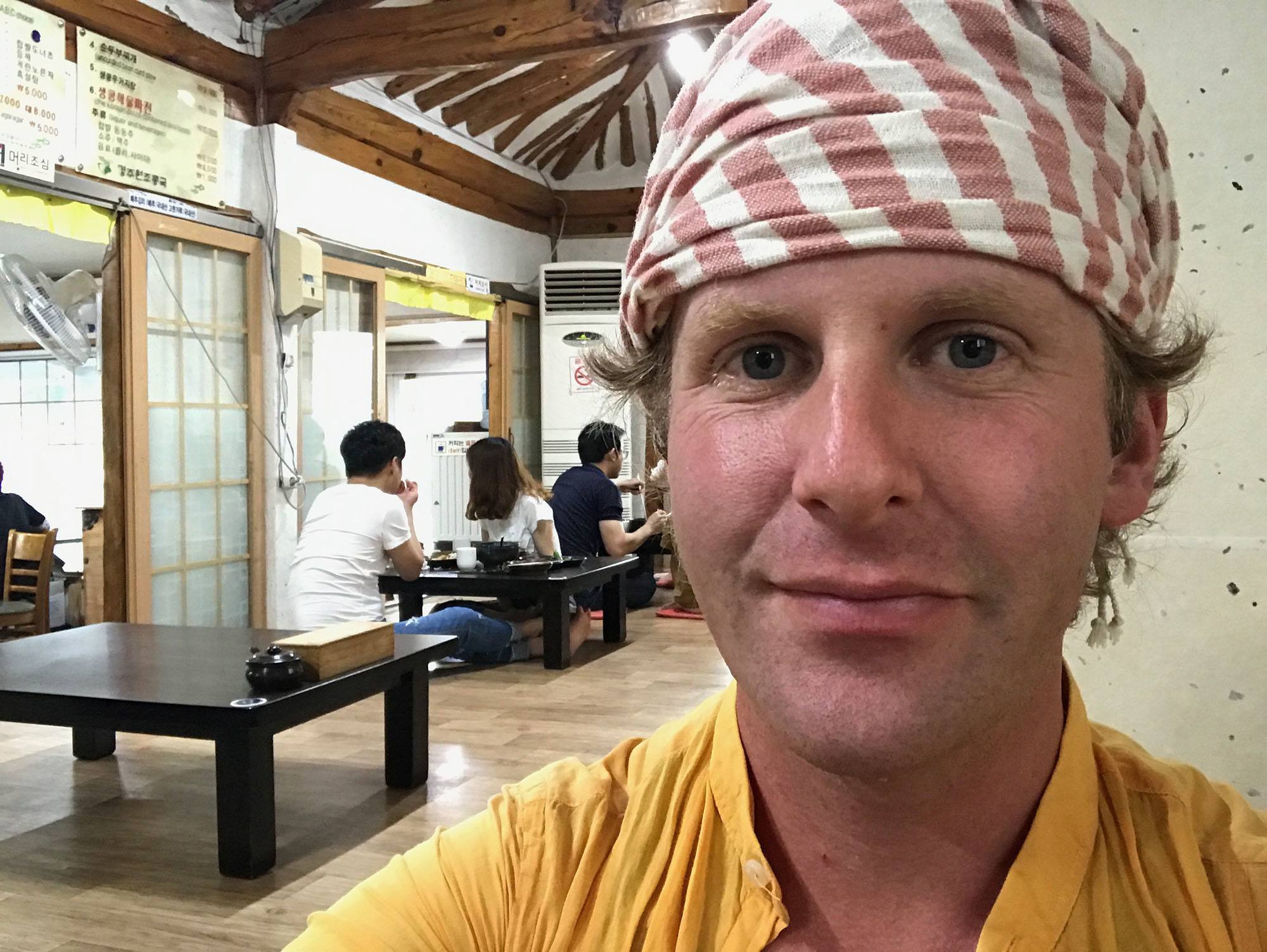
Here are a handful I would suggest trying:
- Do-sol Ma-eul - for a traditional meal in a historical structure
- Jungang Night Market - multi-ethnic cuisine
- Daebak Jip - great barbecue pork and beef
- The area near the bus stop for Bulguksa (near the hostel in which I stayed) is home to a host of restaurants and market stalls serving fresh food
Transportation - Getting around Gyeongju
Collect a map from the main train station before you embark on expeditions around Gyeongju. There are some fantastic sights to see however many of them are scattered about, so a map will prove useful. Your accommodation should have a copy you can take.
On Foot and By Bicycle
I highly recommend getting about on foot, or by bicycle. It's a flat city, which means there is little exertion required.
Alternatively, there are bus services that can be utilised.
By Bus
There are two key buses you'll need, if going between key sights within the city:
- #10 (important 'tourist' stops announced in Korean and English)
- #11 (important 'tourist' stops announced in Korean and English)
For Bulguksa (which is 1.15 hours from Gyeongju) , take any of the following buses:
- 10
- 11
- 700
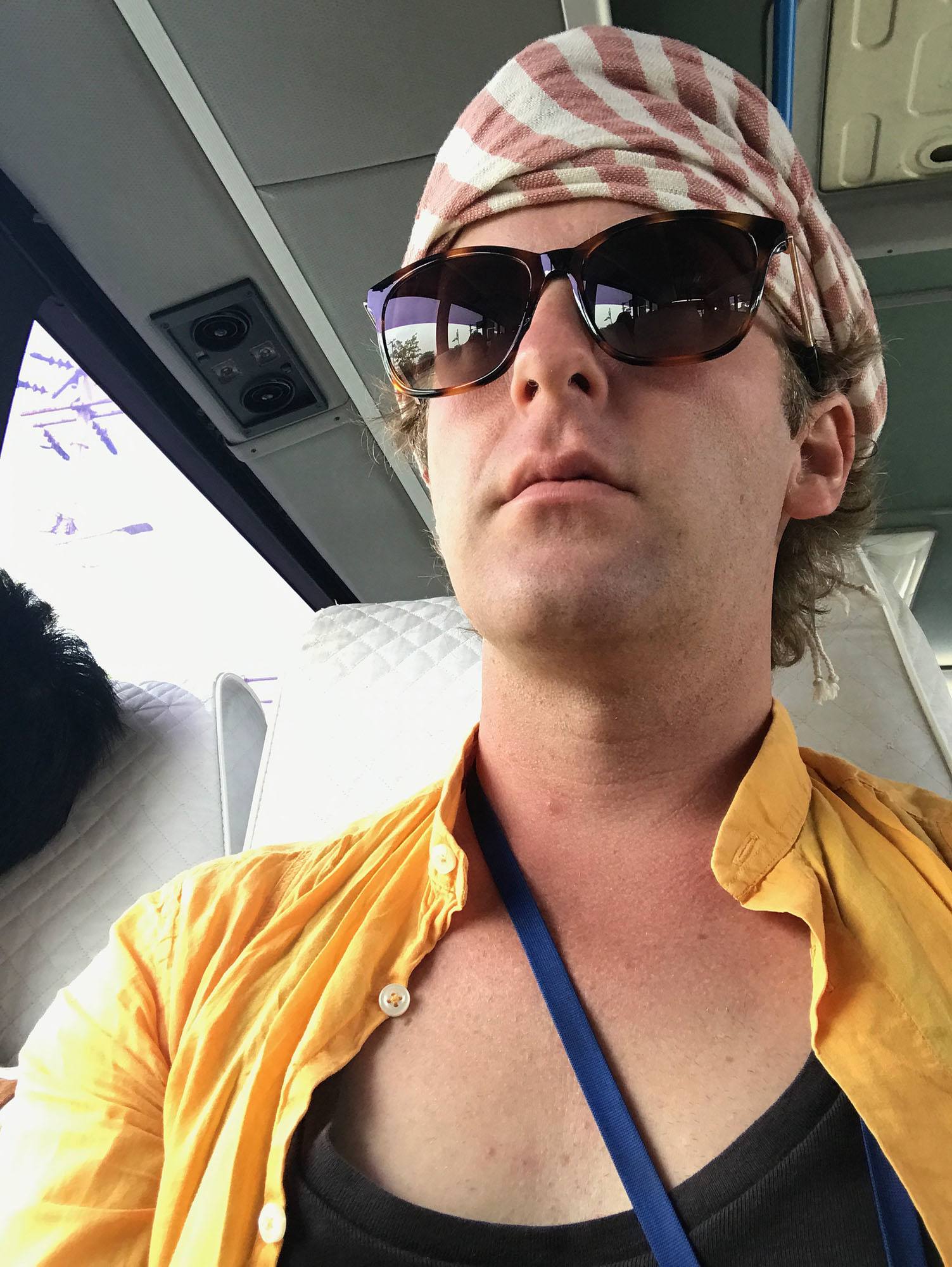
For Seorguram, take the following bus from the parking lot at Bulguksa:
- 12 (at hourly intervals starting 08:40 and ending 17:20)
Transportation - Getting to Gyeongju
By Air
There is no airport in Gyeongju, however there are three airports in nearby cities which can be utilised for quick access to the city from various points within and outside of South Korea:
- Daegu International Airport - one hour by express bus
- Ulsan Airport - one hour by express bus
- Gimhae International Airport (based in Busan) - 1.5 hours by bus (or 50 minutes by train)
By Train
There are daily train services to Gyeonju from various other cities within South Korea. They include:
- Seoul to Gyeongju
- Various services (low and high speed) between three and seven hours
- Busan to Gyeongju
- 50 minute train journey
- Daegu to Gyeongju
- 30 minute journey
- Pohang to Gyeongju
- Between 30 minutes and an hour
By Bus
There are regular services between Seoul and Gyeongju as well as a few of Gyeongju's closest neighbours. For services from other locations, transfers are required with connections in Daegu or Busan.
- Seoul to Gyeongju
- Four hours
- Busan to Gyeongju
- Forty minutes
- Daegu to Gyeongju
- Forty minutes
- Pohang to Gyeongju
- Forty minutes
JEJU-DO (제주도) (Days 12-14)
A prized possession of the Republic, Jeju-do – Korea’s largest island - is notably the jewel in the nation’s sparkling crown.
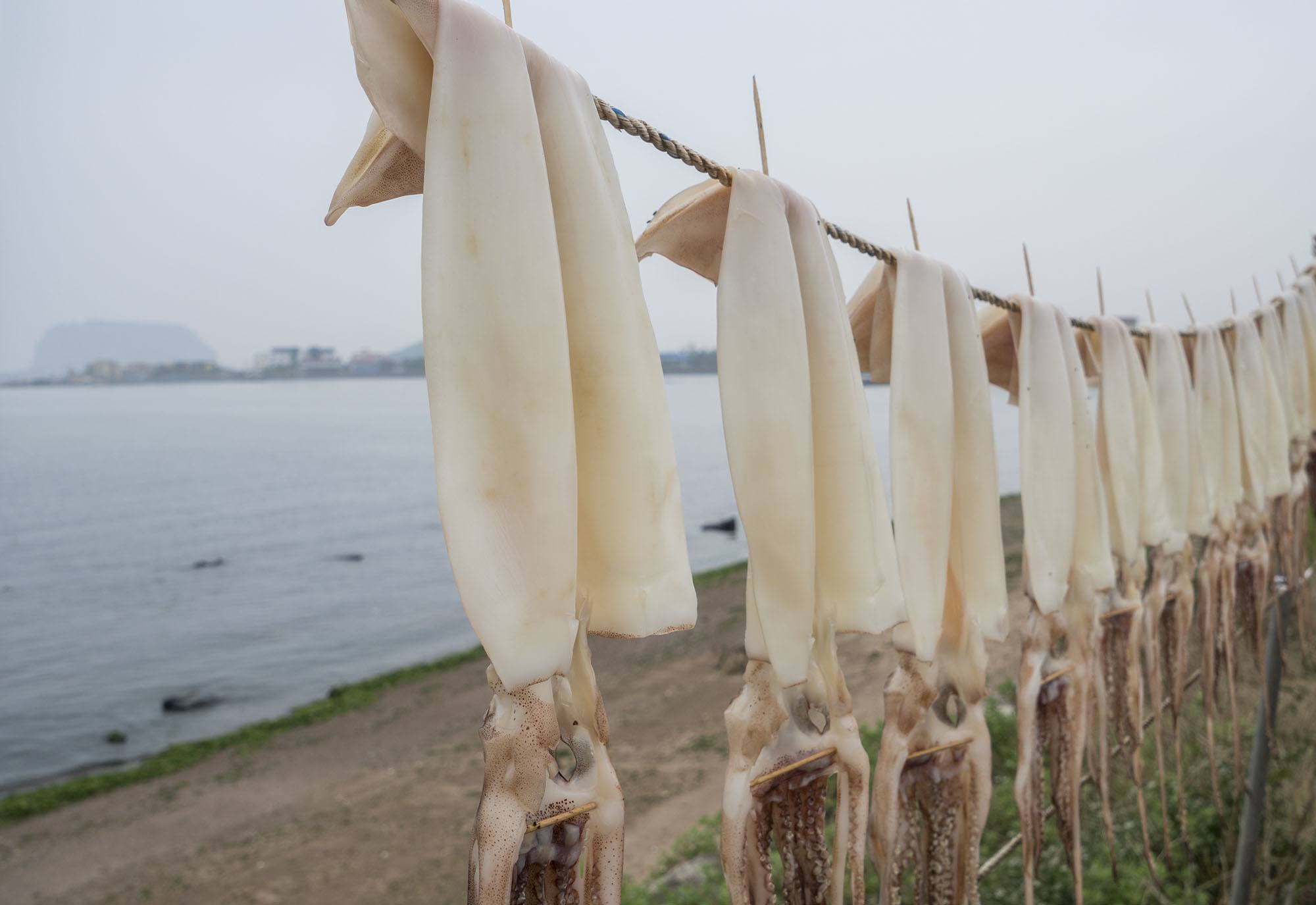
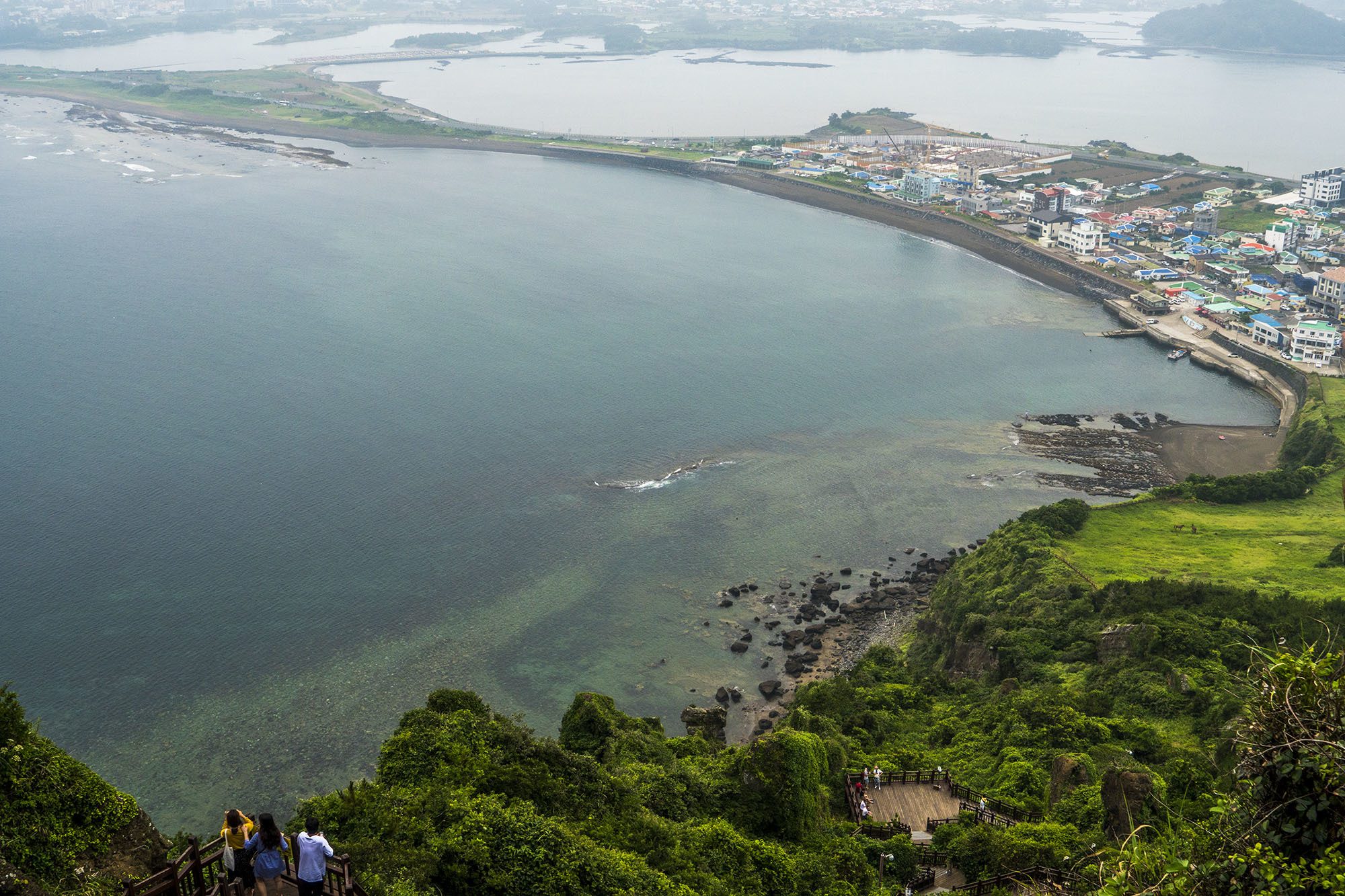
A short flight from the mainland (or longer ferry ride), it caters to a broad spectrum of tastes, and boasts the country’s best beaches, lushest landscapes and most rewarding bucolic activities for true nature enthusiasts.


As the country’s most popular domestic travel destination, you are guaranteed to get up close and personal with Koreans: overcrowding, in summer, is likely. However, thanks to kilometres of accessible beaches and walking trails, escape is no mere dream.
Things to Do and Experience in Jeju-do During Your 2-Week South Korea Itinerary
Olle Trail
Comprised of 21 connected (and numbered) routes that weave their way mostly around the coastline, the Olle Trail is one of the local government’s most impressive achievements. It’s a form of nature-porn in terms of untouched beauty and sprawling landscape.
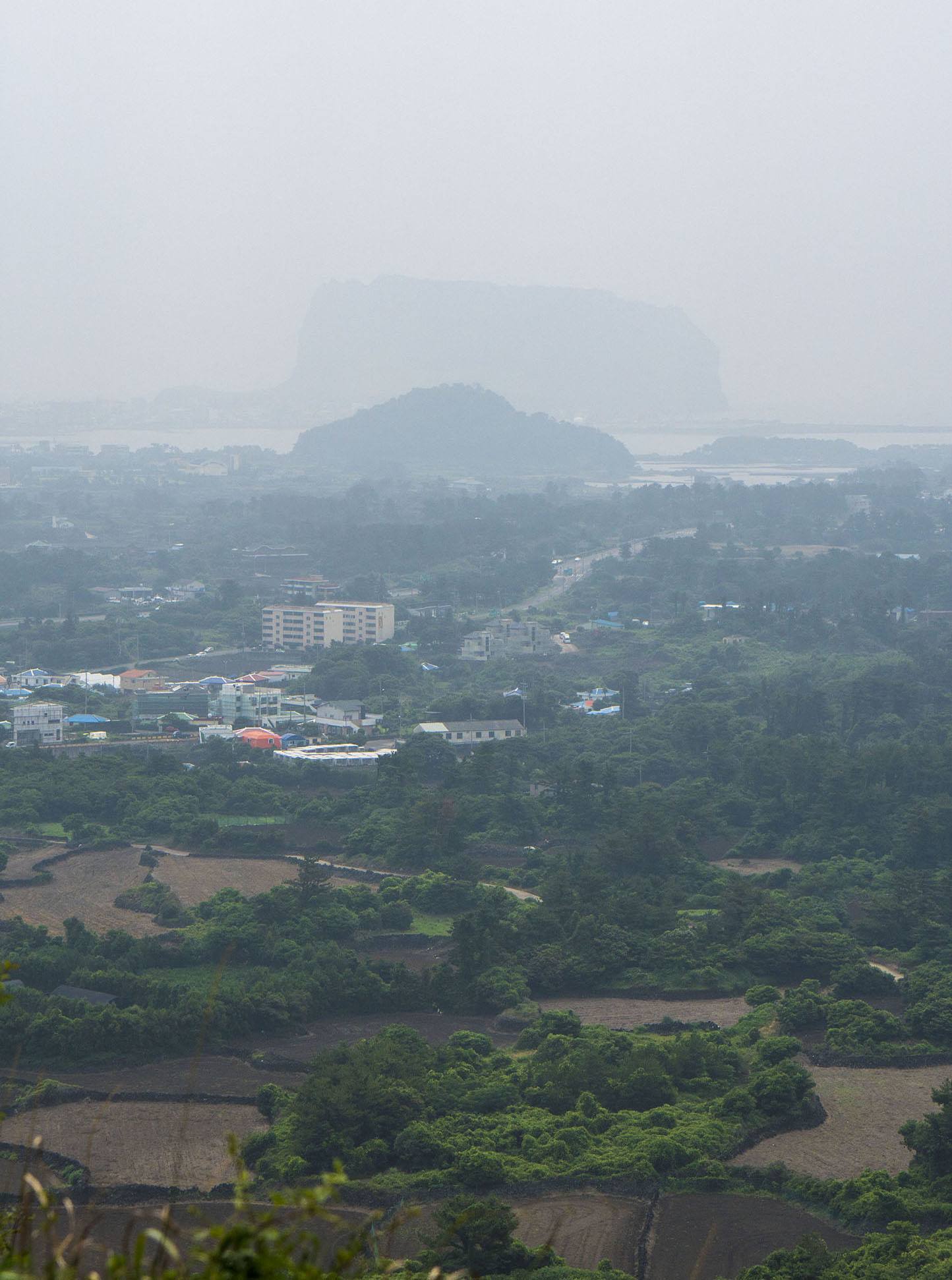

The hilly core often gives way to forests, farms, beaches and oreums (such as Seongsan Ilchulbong).
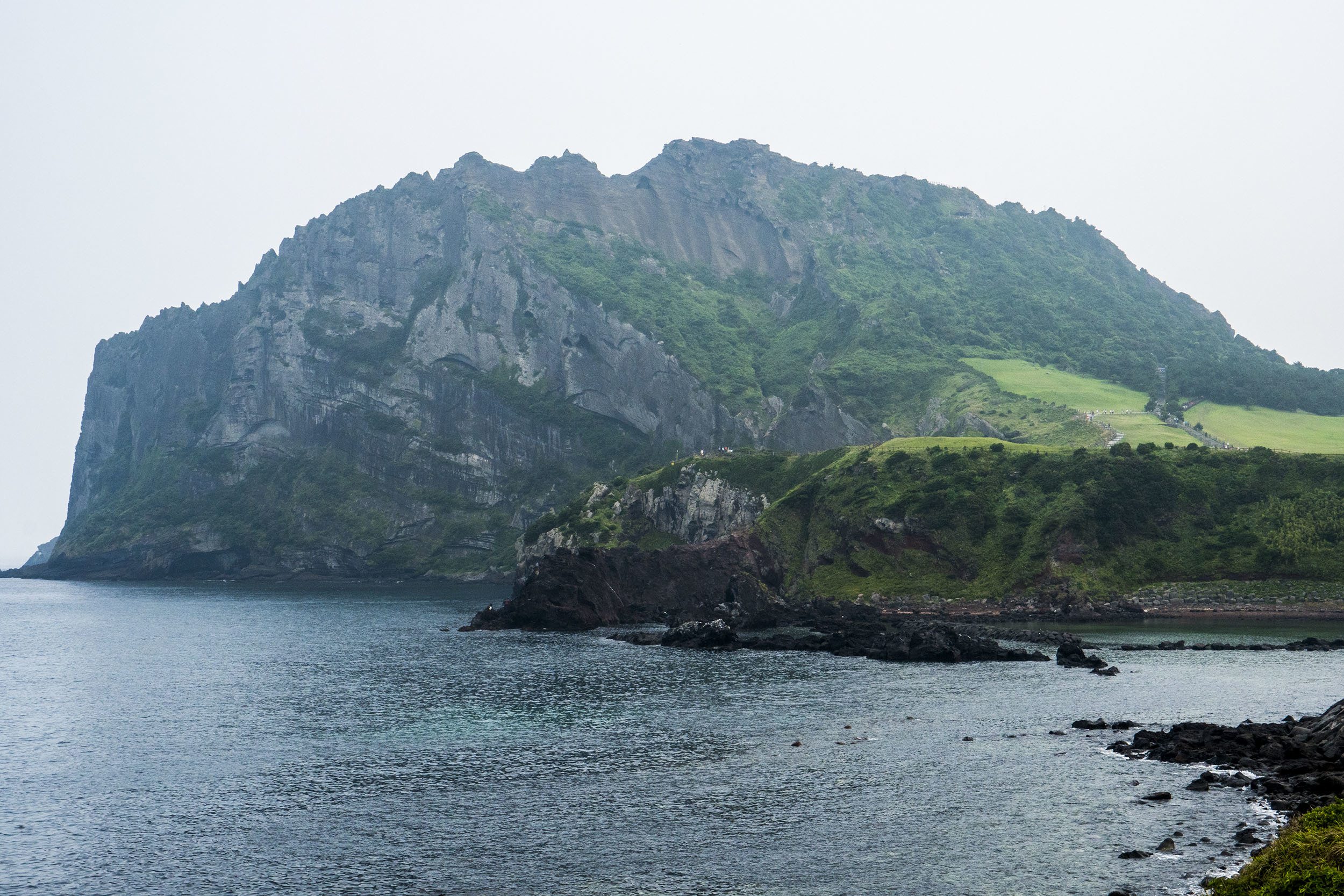
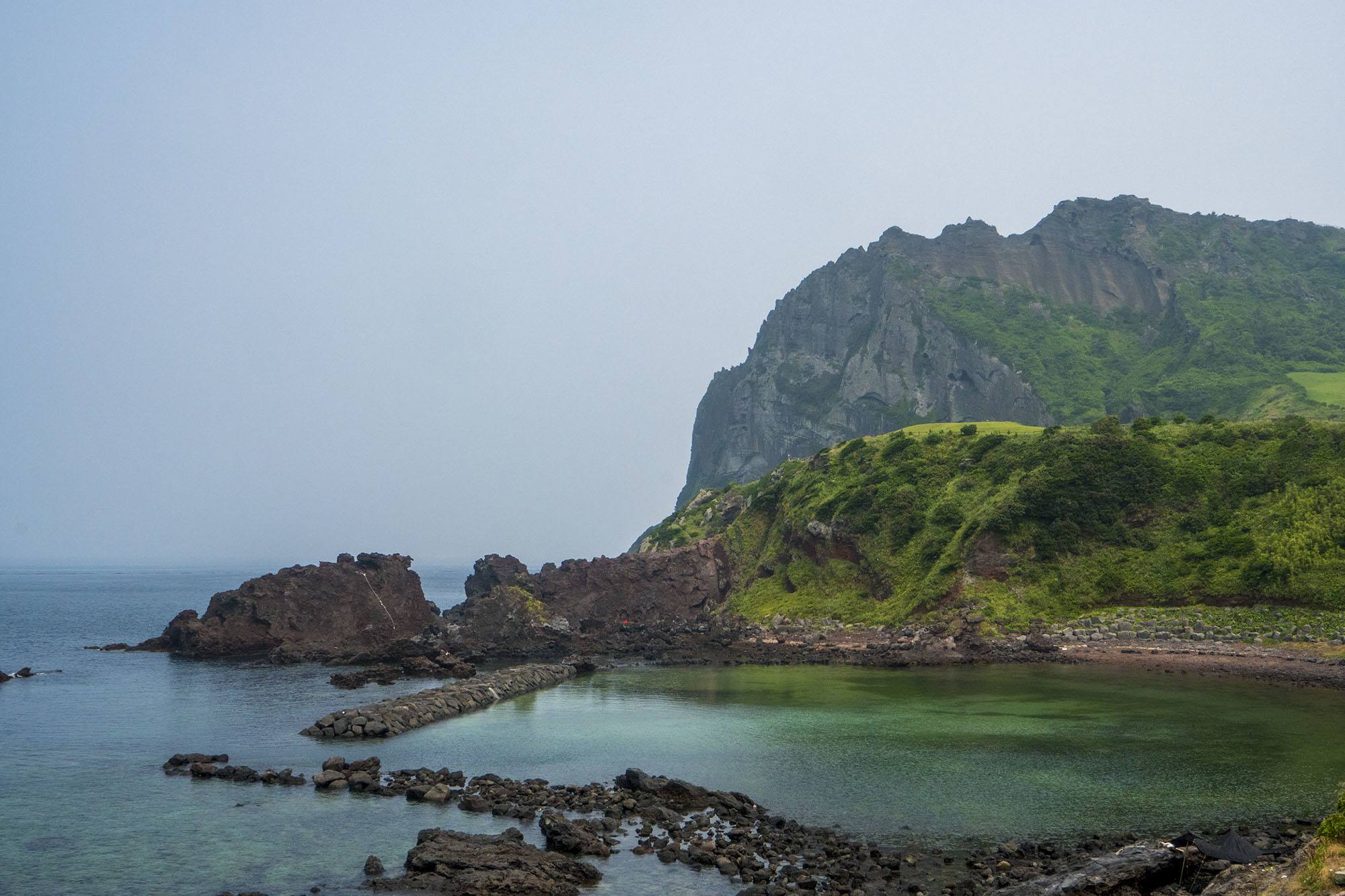
The views all along Olle Trail One were otherworldly, particularly as I inched closer to the tuff ring of Ilchulbong rising out of the sea. It’s understandably one of the island’s major drawcards.
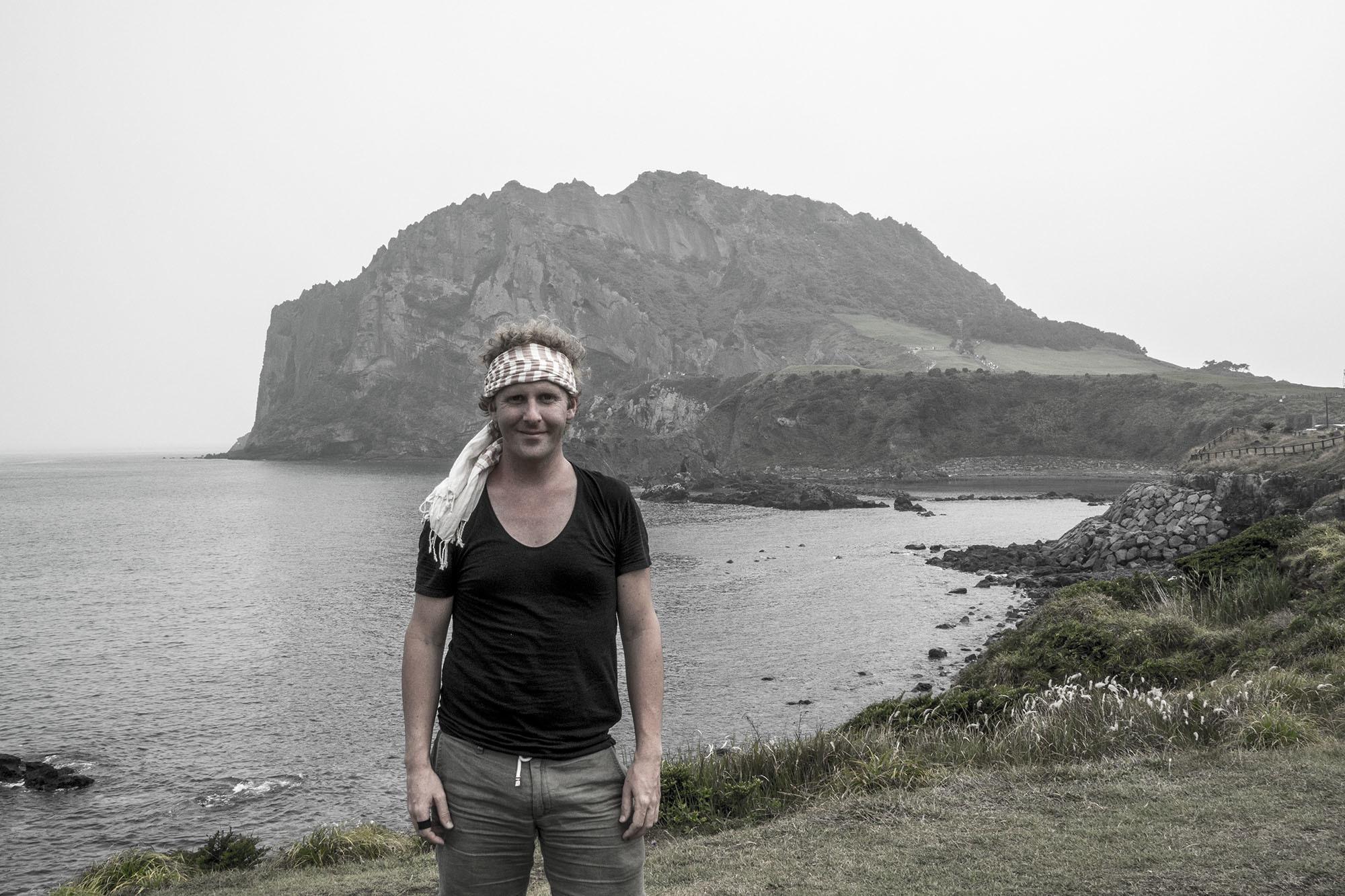
Don’t forget to collect a stamp at the outset of each trail, a scrapbook-able keepsake. There is an information point at the outset of route one, though most hostels and hotels can provide adequate details for interested parties.
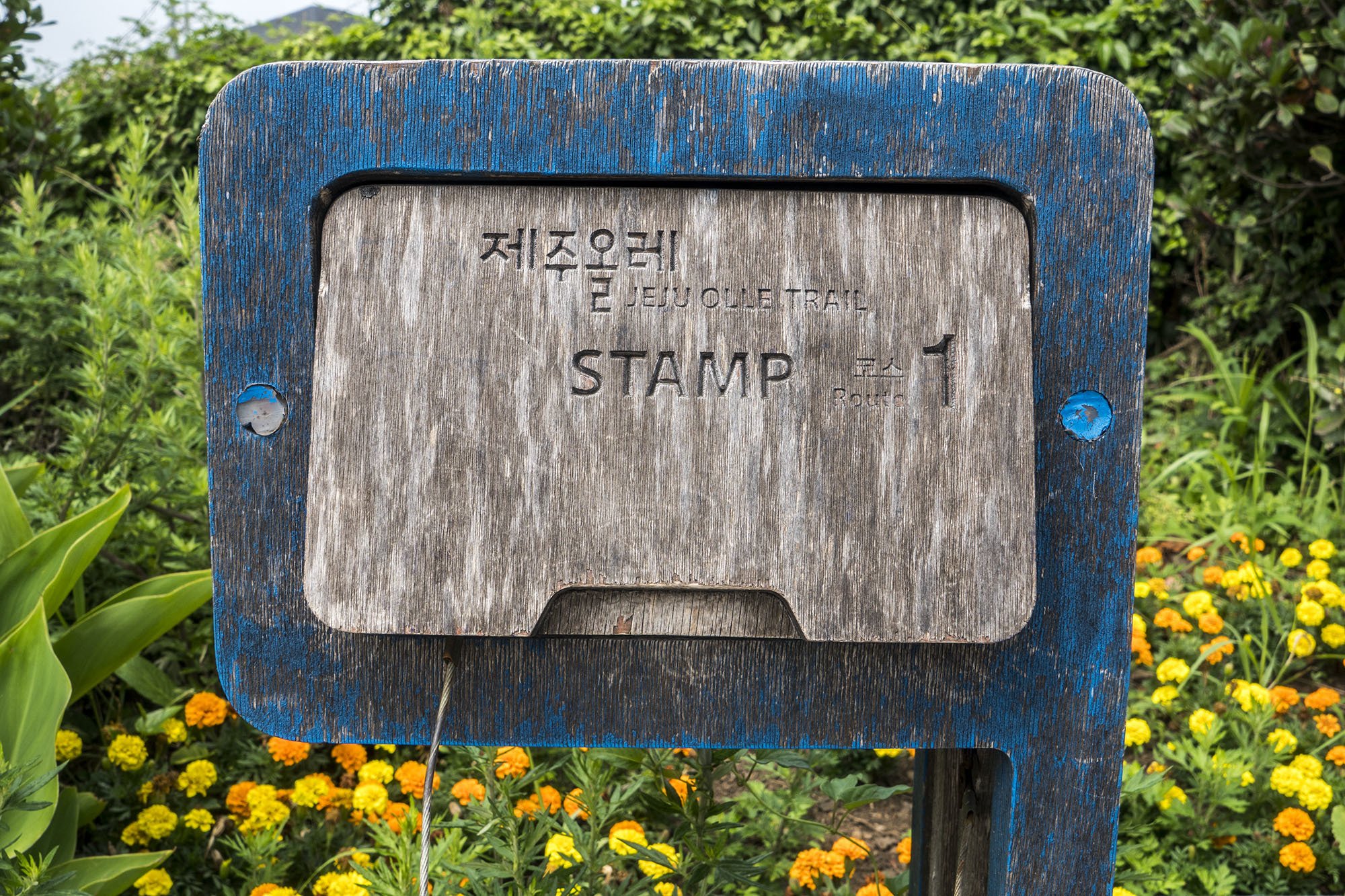
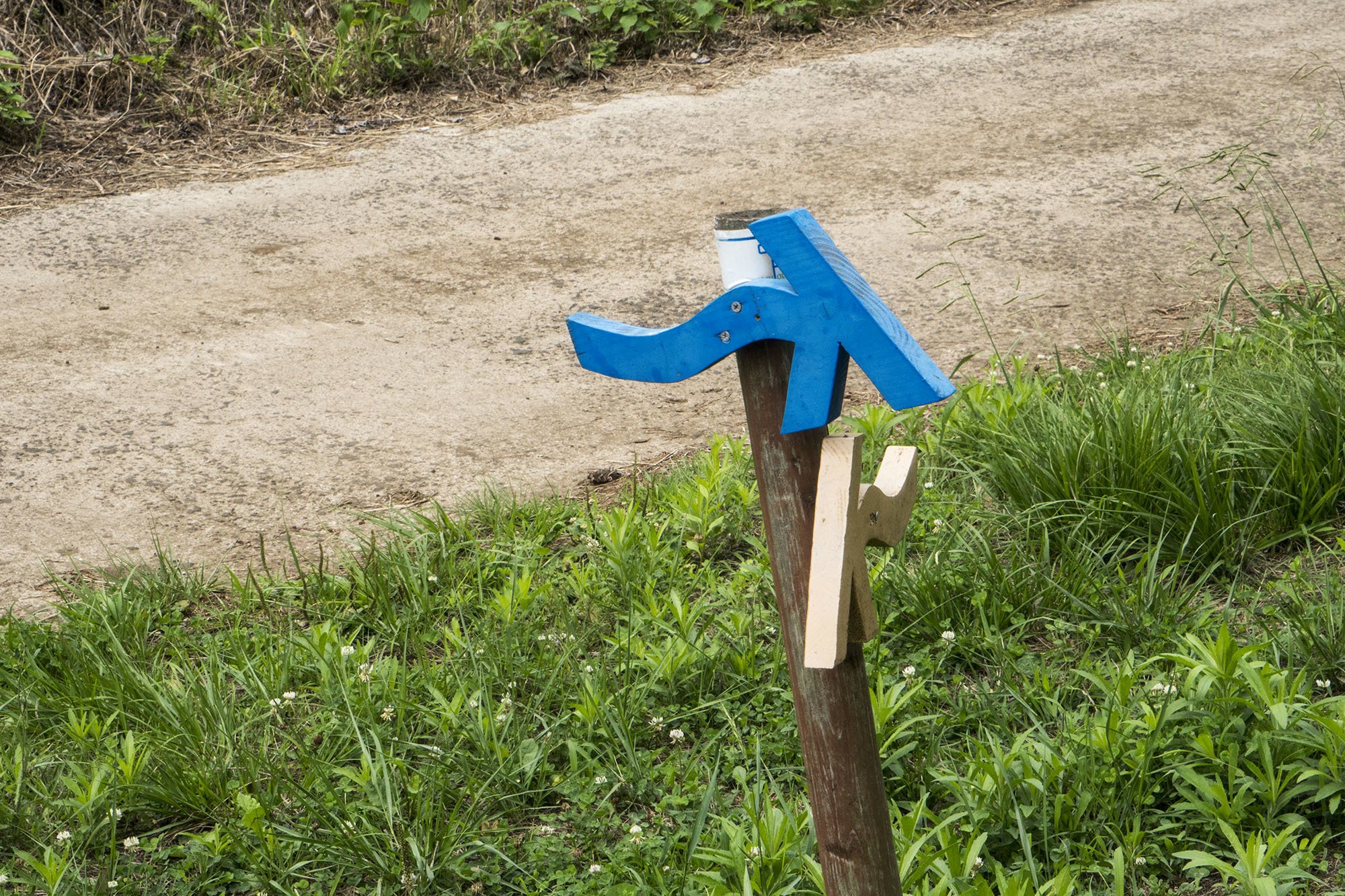
The bus to the starting point of each trail depends on the route you choose to complete. Ask at respective lodgings for full details regarding public transport options.
Hallasan
For broad-sweeping views of Jeju-do, haul it 1950 metres to the summit of Mount Hallasan, Korea’s highest mountain.
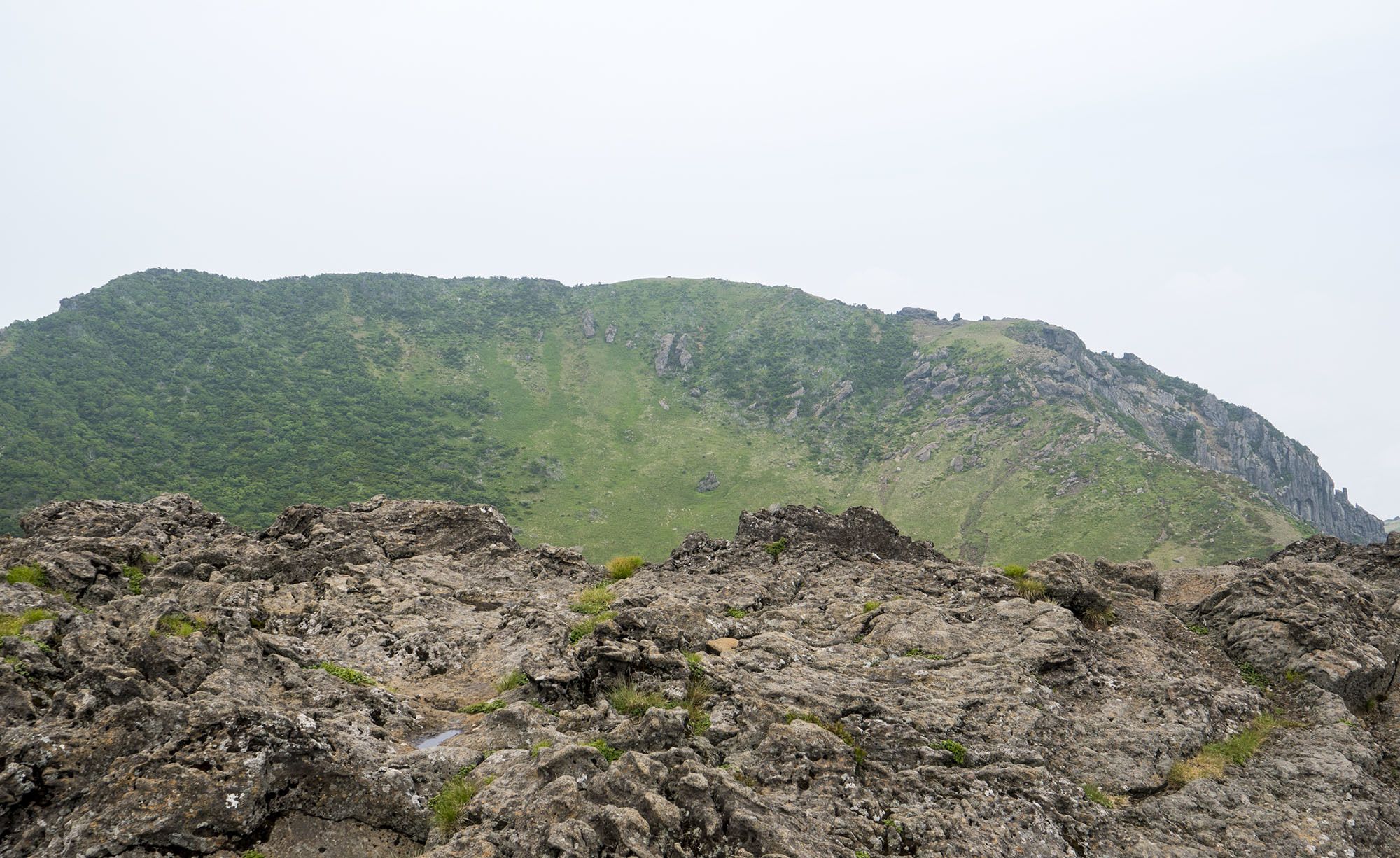

Designated a national park by the government in the late 20th century, hiking – at least part way to the summit - is a priority itinerary item. Replete with vibrant flora, it’s a picturesque ‘walk in the park’ despite the gruelling large stone steps leading to the top.
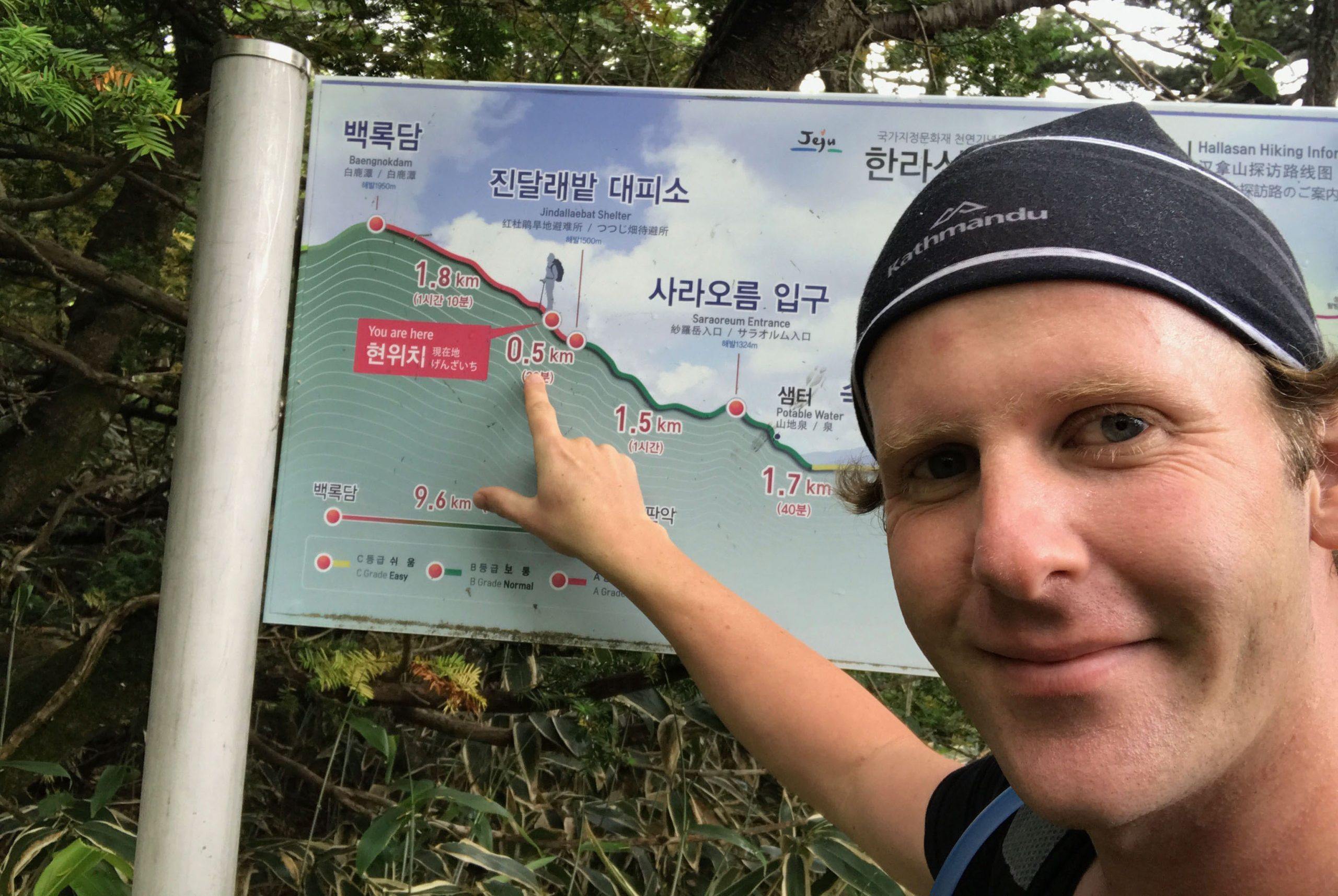
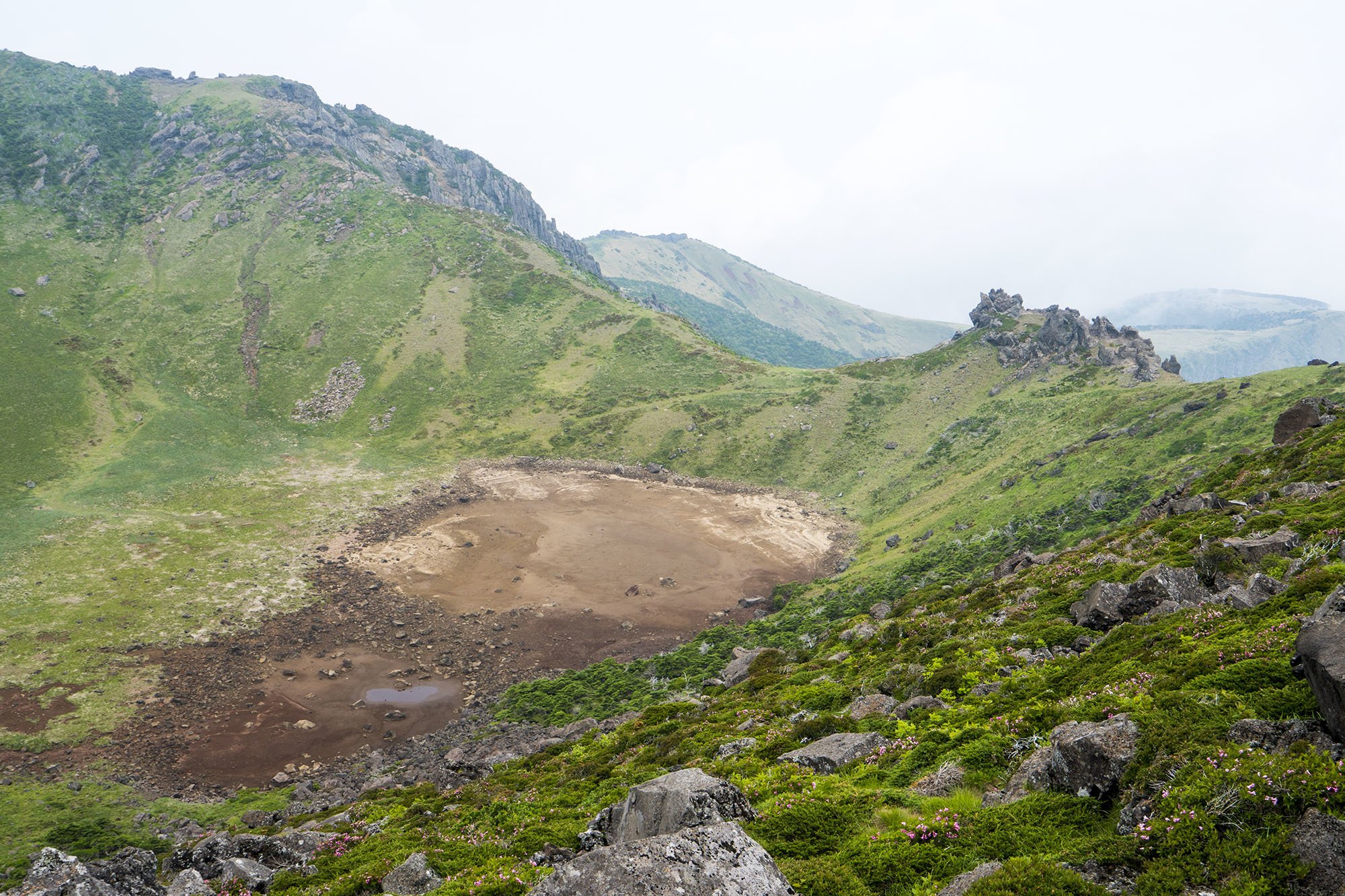
Do check the weather forecast carefully, as arrival at the summit on a hazy day - despite the sense of satisfaction derived from your accomplishment - can be spirit-crushing.
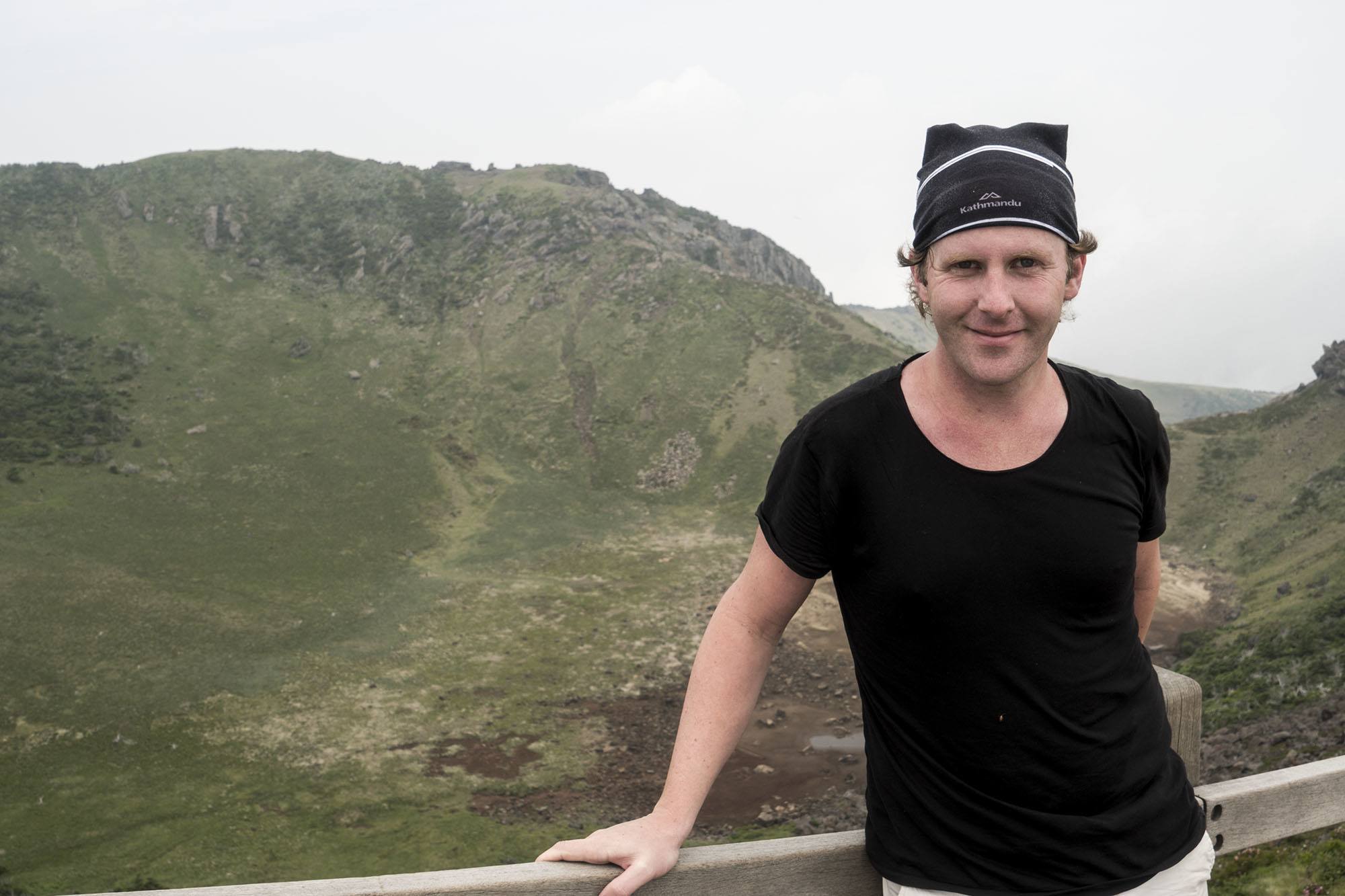

Unlike Rome, not all trails lead to the summit. Seongpanak (the ‘softer hike’) and Gwaneumsa go all the way, whereas the other four – despite indulging various senses – only go part way.
Seongpanak trail, despite the large stone steps over which I had to climb at times, was generously covered by broadleaf trees, and surrounded by kaleidoscopes of colour.
Bus 781 transports hikers to the starting point of Seongpanak trail, a ride of approximately 40 minutes from the city’s Intercity Bus Terminal (and various other stops along the route).
For information regarding access to the other routes, ask at respective lodgings.
If you're looking to explore more of Jeju Island with a local touch, consider booking the Private Tour South and West Jeju Island with Experienced Driver. This private tour offers a comfortable way to visit the island’s stunning south and west areas, including serene beaches, scenic viewpoints, and cultural sites. With an experienced driver and guide, you’ll gain insider knowledge.
➡ Click here to book your tour
Recommended Length of Stay on Jeju-do
Three to four days
Spend the first day checking out the few sights of the city (if that's where you're staying) or getting to know the area around your accommodation. Spend another day trekking to the summit of Hallasan, with at least one more day walking one of the Olle trails. If the weather permits, hit the beach (on another day), or head to some of the waterfalls.
Accommodation - Staying on Jeju-do
Budget: U & I Guesthouse
I stayed here in Jeju, and while it was just okay, it covered the basics for a budget stay. The location is super convenient, close to the city centre and a short ride from the airport, which made exploring easy. The shared kitchen and lounge were nice spots to meet other travellers, though overall, it’s a simple place that works if you’re looking for somewhere affordable to rest your head.
Mid-Range: Jeju Starlight Glamping
Jeju Starlight Glamping is a perfect, albeit unusual choice if you're after something a little different on Jeju. Located away from the city, you’ll need a car or public transport to get here, but the serene views make the journey worth it. Each unit has a private terrace with ocean views, ideal for soaking in the sunset, and the cosy dome tents add a unique touch to your stay.
The setup combines comfort with the beauty of nature — perfect for stargazing and unwinding in a tranquil setting.
High-End: Grand Hyatt Jeju
For a luxurious stay in the heart of Jeju, the Grand Hyatt Jeju offers everything you’d expect from a top-tier resort. With both indoor and outdoor pools, a fitness centre, and an array of dining options, it’s designed for guests who want it all. The rooms are spacious and well-appointed, with amenities like a coffee machine and plush seating areas, and some even offer stunning city views.
Located just minutes from Jeju International Airport and popular spots like Shilla Duty Free, it’s an ideal base for those looking to explore Jeju in style.
Food - Eating on Jeju-do
There are dining options of all sorts scattered across the entire island. Most lie around the coast and in urban areas. I ate a a variety of restaurants and eateries in different locations.
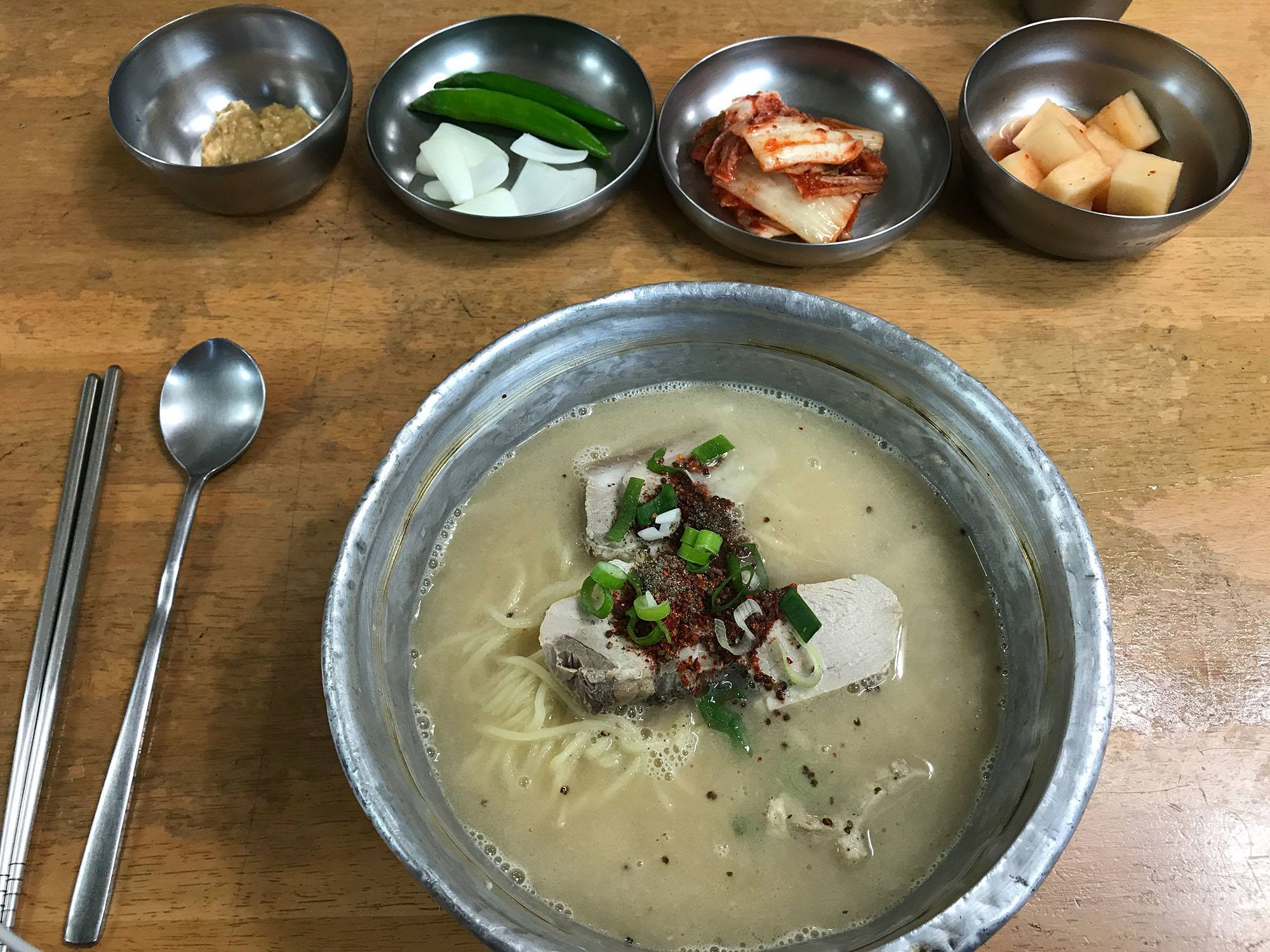
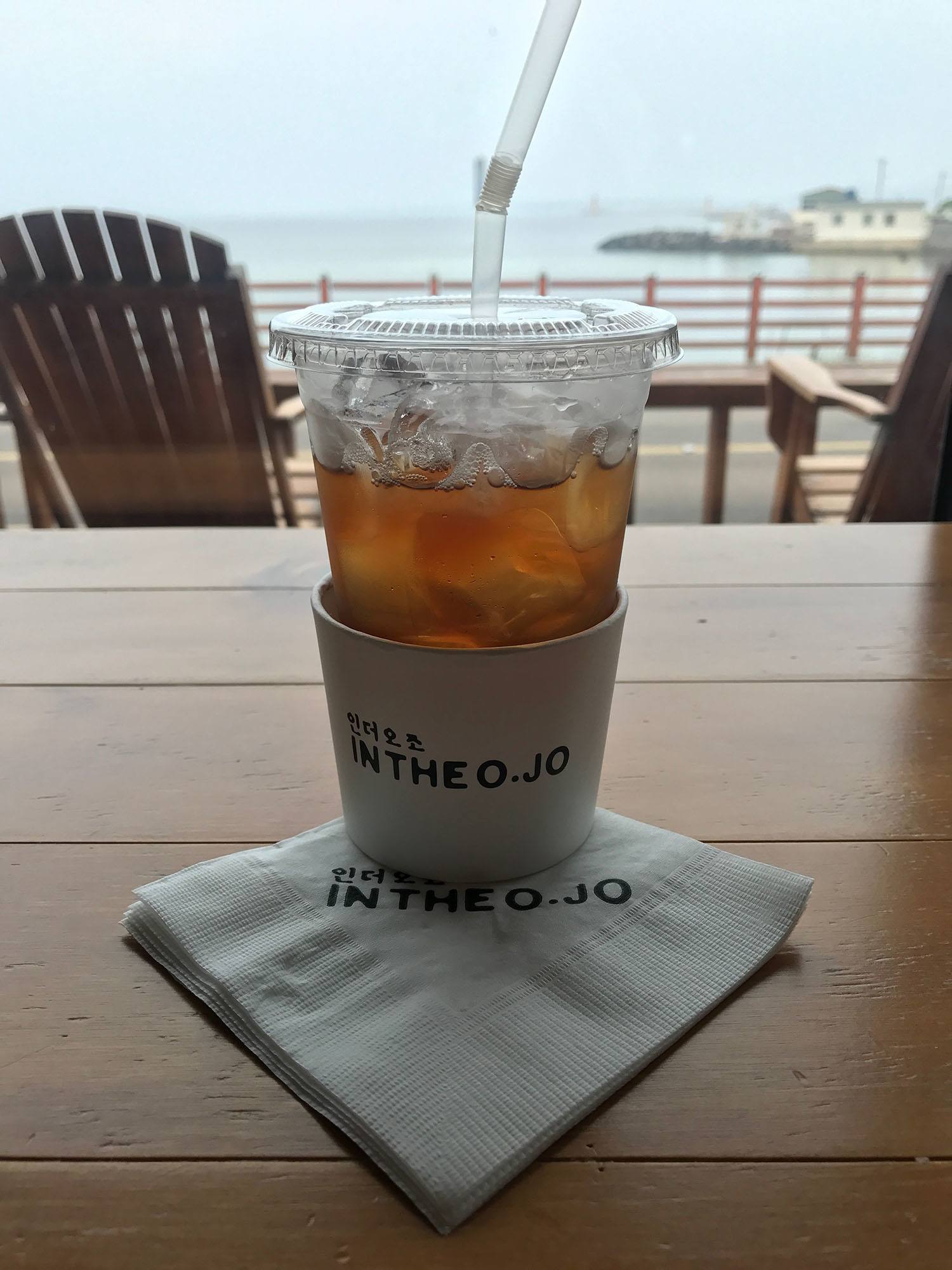

For a list of recommendations, read the following article:
Transportation - Getting around Jeju-do
Jeju Island is relatively large, so getting around the entire island on foot is not recommended (unless you have a few weeks and wish to complete the entire Olle Trail). Bus, car/motorcycle and bicycle/friendly rides are your best options.
By Bus
There are many buses that run inner-city and inter-city routes throughout and across the island. Rather than list them all here, I recommend you speak to the staff at your accommodation who will be able to tell you exactly which bus to take to get to your desired destination.
- The buses accept cash and T-money cards from Seoul
- Have the destination name written in Korean to show the driver in case he or she needs to charge you a specific fare for the route
- Bus number 600 is the airport limousine
By Car
Hiring a car on Jeju-do is perhaps the most sensible option, if it is within your budget and means. It provides you with the greatest amount of flexibility, however it does mandate you have in your possession an international driving permit.
Ask at your accommodation for the best deals around.
By Hitchhiking
I'd spent the day out of Jeju City, catching the bus in the morning with plans to take it back to the city in the evening. After sharing my table at a cafe with a group of lively young Koreans and chatting, getting to know one another, they insisted I return with them. I thus had a loud and very entertaining ride back to the city and they kindly dropped me at my desired destination.
One of the benefits of solo travel is the ability to squeeze in when there is only one space left. Being alone is less intimidating to locals than being in a duo or group. People are often more inclined to speak with you if you are a solo traveller because you don't pose a large, embarrassing threat to their English language skills (as my Korean skills were basically non-existent).
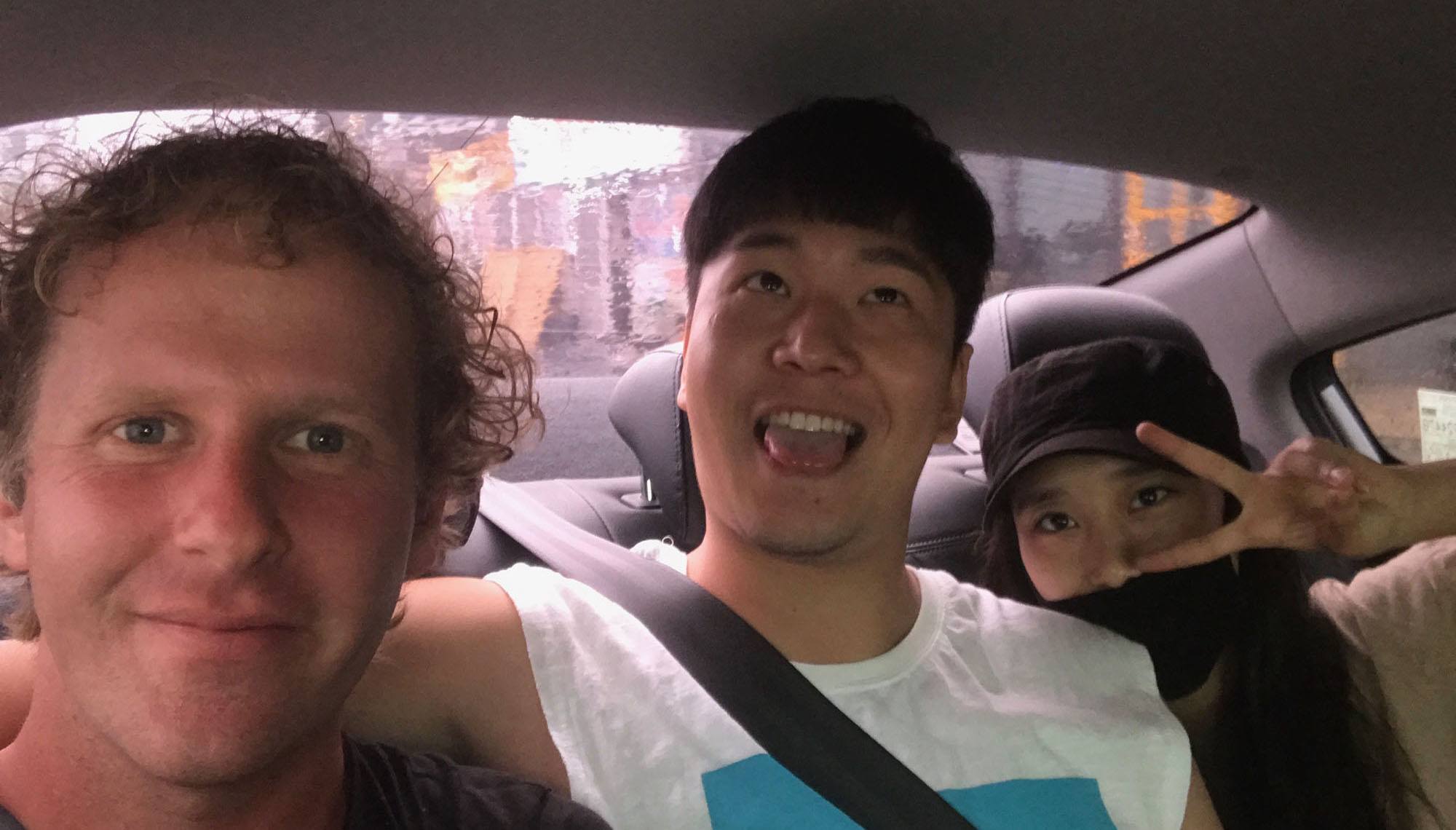

You never know who you're going to meet and where new encounters may take you. Be open to opportunities and new friendships.
By Bicycle
I met several travellers while on Jeju Island who were not only riding around the island, but also making their way around the continent - and some the world - on the back of two wheels.
The roads on the island are wider than those of the mainland, there is less traffic and in some areas, there are bike paths. I heard circling the island on bicycle takes close to a day. It would be a great way to see the sights and it's less costly and more environmentally friendly than a car.
Ask at your accommodation for bike hire recommendations.
Transportation - Getting to Jeju-do
By Air
The airport on the island is called Jeju International Airport. It services more than 20 airlines, all of whom have direct flights to Jeju.
- Most flights to Jeju are from Gimpo and Busan (on South Korea's mainland)
- There are some direct flights from Japan, China and Hong Kong to Jeju
- Flights to Jeju outside of the three countries above are usually not direct, so transfers will need to be made in another major airport inside or outside of South Korea
By Boat/Ferry
There are several direct ferry routes to Jeju. Most travellers arrive by plane, thanks to competitive prices. However, ferries, particularly overnight services, will save you in accommodation. The following cities have direct routes to Jeju:
- Busan
- 11-hour journey
- 7pm departure
- Monday to Saturday services
- Mokpo
- three to four hour journey
- Incheon
- 13-hour journey
- Wando
- 1.5 to five-hour journey
Make reservations via phone or consult the staff at your accommodation for help.
Essential Travel Information for Your 2-Week South Korea Itinerary
Before setting off on your 2-week South Korea itinerary, here’s a quick guide to essential travel information, from visas and transportation to accommodation and the best times to visit. These practical tips will help you navigate South Korea with ease and confidence.
Getting to South Korea
By Air
South Korea has seven international airports, with two located in Seoul. Incheon International Airport, an hour west of Seoul, is the largest and busiest, welcoming flights from across the globe. Gimpo Airport, closer to central Seoul, primarily handles domestic flights but also serves some regional destinations.
If it’s your first time visiting South Korea, you’ll likely arrive at Incheon unless you choose a direct international flight to Busan or Jeju-do.
By Boat
There are sea connections mostly between South Korea and Japan with a few others to China.
- Busan Port International Ferry Terminal operates daily services between Busan and various ports in Japan. Contact them for up to date schedules and prices
- Incheon International Ferry Terminal One operates services between Seoul and various ports on mainland China.
By Land
I think the answer here is obvious. If not, then perhaps a review of geography and political relations between South Korea and its closest neighbours is warranted.
Due to its location on a peninsula, getting to South Korea overland would require getting through North Korea. It is, ergo, virtually impossible, in part because it is the most heavily guarded border in the world.
Your options are limited to arriving by boat or plane.
Getting around South Korea
South Korea offers several convenient ways to travel, depending on your destinations and preferences. During my trip, I found a combination of buses, flights, and other methods particularly useful.
Here are some of the options.
By Air
For longer distances, such as between Gyeongju and Jeju-do, and from Jeju-do to Seoul, I opted for flights. South Korea’s domestic air routes are convenient and efficient, and flying saved me time that I could spend exploring more of each destination.
By Train
The KTX (Korea Train Express) connects major cities like Seoul, Busan, and Gyeongju. Though I didn’t take the train on this trip, it’s the fastest option for long distances and offers a smooth, scenic ride.
By Bus
I relied on intercity and express buses, especially for travel on the mainland.
South Korea's intercity bus system is comprehensive, connecting major cities and towns across the country. Buses are categorised into different types based on the level of service and comfort they offer, including Standard, Deluxe, and Premium classes.
Tickets can be purchased at bus terminals or online through platforms like Kobus and BusTago. For detailed information on routes, schedules, and booking procedures, resources such as Let Me Know Korea provide comprehensive guides.
By Subway
In cities like Seoul, the subway system is a fantastic way to get around locally. It’s easy to navigate and connects to other transportation, making it ideal for city exploration.
By Ferry
Ferries offer a scenic alternative for travelling between the mainland and South Korea's islands, as well as to neighbouring countries. For instance, routes connect Busan to Jeju Island and international destinations like Japan and Russia.
Ferry operators such as Hanil Express and Camellia Line provide services on these routes. Schedules and prices can vary, so it's advisable to check the latest information and book tickets in advance.
Visa for Travelling to South Korea
Visa rules and regulations, for most countries, change and are updated often. As such, it is highly recommended you consult South Korea's immigration information for up to date entry rules.
As it currently stands, citizens of 109 countries will be granted a visa on arrival for a period between 30 and 90 days.
If you are visiting only Jeju-do, then the rules are even softer: citizens from every country except Afghanistan, Cuba, Ghana, Iran, Iraq, Kosovo, Macedonia, Nigeria, Palestine, Sudan and Syria will receive a visa on arrival.
Solo Travel in Jordan: What It's Like
Aside from ill health, I didn't really experience major issues while travelling alone through South Korea. I met some spirited Koreans and other travellers who were filled with so much joie de vivre it had a positive impact on the way I was feeling. I therefore never had an opportunity to feel lonely, although it rarely happens when I'm on my own (hence why I opt to travel alone).
If you are travelling solo in South Korea more out of necessity than by choice, you'll have no problems meetings others. Being open and willing to engage are key. If you achieve this, you'll be richly rewarded as Koreans, despite a lack of outward displays of affection, are culturally and emotionally generous.
South Korea, despite the threat that lurks above in North Korea, is safe and easy to navigate. In this sense, it really is a solo traveller's paradise. Engage if you wish or move to the beat of your own drum - both are possible and totally acceptable here.
There are accommodation options for solo travellers unlike in other destinations around the world. Eating alone was also rarely problematic, the sense of unease I sometimes feel when walking alone into a restaurant staying away most of the time. No-one even lifted a head when I sat by myself at a table.
If you're okay with your own company, you'll likely be fine moving around the country on your own.
I truly hope you get as much joy out of visiting South Korea as a solo traveller as did I.
Currency and Payments in South Korea
South Korea’s official currency is the Korean Won (KRW), symbolised as ₩.
While credit and debit cards are widely accepted in urban areas, particularly in Seoul and Busan, cash is still needed for smaller towns, markets, and street vendors.
ATMs are readily available, especially at convenience stores, and international cards are accepted at most machines marked for global use. It's advisable to carry some cash, especially in smaller denominations, as change may not always be available at local vendors.
Customising Your 2-Week South Korea Itinerary
There are inclusions and exclusions that can be completed to personalise the itinerary, depending on personal preferences. It can be done within the timeframes suggested, slowed down or ever accelerated a little.
Busan could easily be added to this itinerary, between Gyeongju and Jeju-do. I opted to spend more time in Seoul, returning at the end of the trip for a few days to prepare for my stay in Mongolia. However, staying in Busan for two to three days would definitely be possible.
If you have two weeks in Korea, you can easily customise this itinerary to focus more on the destinations that interest you most, like adding days in Busan, for example.
Recommended Books for 2-Week South Korea Itinerary Planning
When planning a two-week journey through South Korea, a few well-chosen guidebooks and reads can help you make the most of your experience. These books provide useful travel information, cultural insights, and practical tips to guide you along the way.
Korea, by Lonely Planet
A go-to for travellers worldwide, Lonely Planet South Korea was my guide of choice while exploring the country. It covers everything from South Korea's major destinations to hidden gems I might have missed on my own.
With detailed itinerary suggestions, insider tips, and practical advice for accommodation and transport, it became my trusty travel companion. The cultural insights also helped me connect more deeply with Korean traditions and customs, which added so much to my journey.
For first-time visitors, this guide is worth packing.
Korea, by Rough Guides
The Rough Guide to Korea offers comprehensive coverage of both South and North Korea. Known for detailed maps and practical tips, it’s a valuable guide for those wanting a well-rounded understanding of Korea.
This guidebook includes a mix of historical context, local recommendations, and helpful language basics, ideal for a two-week itinerary that goes beyond the typical tourist trail.
Travel Insurance for Visiting South Korea
World Nomads
For my South Korea trip, I chose World Nomads for travel insurance, and it turned out to be a solid choice.
South Korea’s fast-paced cities and scenic countryside make for an incredible adventure, but it’s comforting to know you’re covered for anything unexpected. World Nomads handles everything from medical emergencies to lost items, which let me enjoy my time there without stress.
They’re also easy to set up, and knowing I had that safety net helped me dive into the experience fully.
2-Week South Korea Itinerary - Conclusion
There you have the journey I undertook on my 2-week South Korea itinerary as a solo traveller. Finding a place where you can truly unwind, feel safe, and be adventurous on your own can be rare, but South Korea offers just that. It’s a destination that’s easy to navigate, genuinely welcoming, and filled with surprises around every corner.
Whether you're travelling solo or with friends, South Korea gives you a taste of East Asia’s unique blend of tradition and modernity, all while staying true to its unpretentious charm.
This 2-week Korea itinerary gave me an unforgettable mix of vibrant city life, serene landscapes, and rich cultural heritage. It’s quirky, pure, and fascinating — everything you'd hope for in a developed nation and more.
Are you tempted? Try it for yourself, and I promise you won’t regret it.
If you found this guide helpful, please share it with fellow travellers or anyone planning their own trip to South Korea. Your support means a lot and helps more people discover this beautiful country!

[…] a doubt, Gyeongju should be on any itinerary around South Korea. We will never forget the warmth of its people, landscape, coffee, and delicious cakes. Special […]